Preface
I wish to acknowledge the support and encouragement of my husband Geoff Rundle in my writing up this part of the family history. Geoff vetted and supplemented my writing and in the main, our recollections coincided. He also thoroughly enjoyed recounting his childhood and family memories. I did offer to withhold some material, but he told me he was comfortable with it the way it was.
Geoff has no expectation in life other than to be a loved, appreciated and trusted member of his family and a helpful and respected member of his community. When he met my family he also found in my mother Vena Robson, the love for a son he had never experienced with his own mother. After serving his community as both Woollahra Mayor and Councillor, Geoff Rundle has been honoured as Chairman Emeritus of Residents First Woollahra and will long be remembered for his indefatigable and selfless contribution to the residents of the Woollahra Municipality; for listening to them and then spearheading their concerns.
I also want to acknowledge the support and help Geoff gave to my disabled elder brother Bill Robson, who came to rely on Geoff and to trust him. Bill was an insightful judge of character and in his world people fell into two categories, he either hated them vehemently, or he truly loved them. Bill loved Geoff but absolutely hated Geoff’s parents and in particular his mother, Val Rundle. I used to have a great deal of trouble getting Bill to behave when Geoff’s parents visited our family home, so I worked out a deal with Bill, he could insult them only once and he seemed happy with that. Bill worked out his insult and he stuck to it. He also loved answering our front door when the bell rang, so when Philip and Val Rundle arrived he would open the door and immediately greet them with “It’s you! You both look like you’re dressed for a funeral!” Then without another word he would abruptly turn and walk off; it neither offended or affected either Philip or Val Rundle and Bill seemed happy with the deal we had struck.
I would also like to acknowledge my father Reg Robson’s diary. My mother Vena Robson found dad’s diary subsequent to his death on 30 June 1980. It gave mum great solace to read it and remember her beloved Reg. I used to see Dad writing, but I had no idea what went into these diaries. I knew dad liked collecting short anecdotes and sayings of the family, but his social commentary was a surprise to me. He had developed his own style of shorthand, because he kept a notepad beside his bed for writing up his thoughts in the dark. He would often wake up, think of something important for his business and write it down in the dark, before he forgot it. He also kept a dictionary beside his bed, something I have also done and he challenged himself to learn a new word every day. Dad’s diary account of Geoff’s and my wedding was something that both surprised and comforted me, with the knowledge that these extraordinary events were actually supported by someone else’s point of view and experience.
For my readers, please take your time to read this chapter carefully; it contains a lot of important factual information, which should not be taken out of context, for fear of anyone making a value judgement. I would ask that you read the chapter as a whole, absorbing the social history it seeks to represent.
The Rundle Family from Newcastle, New South Wales
I have written up many chapters in my Rundle/Robson family tree and each one has given me incredible interest and a greater understanding of who we are as a family and where we came from. My most earnest endeavour is to try and place all our Australian family branches back into their countries of origin, a challenge I set myself early on in my research. This chapter is the second in a trilogy, which includes The Rundle Family from Kelly, Devon, England and The Lindsay Family of Montrose, Scotland.
My husband was given the names Geoffrey Philip Farrell Rundle, his second name Philip, was given in honour of his father Philip Alan Rundle, his third name was in honour of his maternal grandmother Sylvia Patterson’s maiden surname, Farrell. I knew my father-in-law Philip Rundle for about twenty years before his death in 1993, and in all that time, not once, did he ever refer to his father or mother. In fact, my husband was challenged to even name his paternal grandparents when I first started my research into our family tree. In hindsight, I find this fact about my father-in-law very odd, however, at the time, I was not particularly interested in family history, as with so many younger generations it is not really until you hit about 50 years of age, that you begin to wonder exactly who you are and question the past. In so many cases, sadly, it is too late to start asking these important questions.
Philip Alan Rundle’s parents were Richard T Rundle and Catherine E A Moloney, this fact I found quite easily from an online record on ancestry.com, which was an Australian marriage extract. Once I popped Richard and Catherine’s names into my quickly growing online family tree I received several hints showing that there were other corresponding trees to look at.
Australia Marriage Index, 1788-1949
| Name | Richard T Rundle |
| Spouse Name | Catherine E A Moloney |
| Marriage Date | 1904 |
| Marriage Place | New South Wales |
| Registration Place | Sydney New South Wales |
| Registration Year | 1904 |
| Registration Number | 2605 |
Richard Thomas Rundle (1869-1936) and Catherine Maloney nee Lindsay (1876-1948) had seven children, Irene ‘Rene’ E Rundle (1904-), Iris E Rundle (1905-1905), Richard Lindsay Rundle (1906-1996), Francis Felix Rundle (1910-1993), Elsie Enid Rundle (1912-1970), Nelson David Rundle (1914-1969) and Philip Alan Rundle (1917-1993).

Pedigree for Richard Thomas Rundle

Family View of Richard Thomas Rundle

Photograph of Richard Thomas Rundle, image courtesy of Peter Rundle of Newcastle
Geoff’s first cousin, Peter Rundle, kindly lent me his copy of Beneath the Southern Cross, The Story of Ellen Dillon and her Australian Descendants, compiled and written by David Michael and Marie Ray, March 2006. Marie Ray is a descendant of Ellen Dillon through Ellen’s daughter Elizabeth Tobin’s second marriage to Benjamin Lafiura. Elizabeth Tobin, otherwise known as Bridget Tobin, was the mother of Catherine Ellen Ackers Rundle nee Lindsay, from her first marriage to David Lindsay of Montrose, Scotland. It was interesting to read an account in this book about Richard Thomas Rundle’s life before he founded Rundles Department Store, Hunter Street, Newcastle. Apparently Richard had moved with his father Richard Alan Rundle to Sydney and was apprenticed to Messrs. Peapes and Co. as a journeyman coat maker and also attended Sydney Technical College. Later he was employed by Lasker and Lasker, before being employed by Barnett Phillips, merchant tailors in Newcastle. I was very pleased to find this advertisement below which confirmed some of this information.

25 February 1901, Newcastle Morning Herald
In my chapter The Rundle Family of Devon I have already dealt with Richard Thomas Rundle’s first marriage to Rose A. N. Devon, which ended in divorce in March 1904. A month later Richard married Catherine Moloney nee Lindsay, in Newcastle on 3 April 1904. Richard and Catherine Rundle moved to Bathurst where he had signed up with Webb and Co. for a four year indent of tailoring employment. This was where Richard and Catherine Rundle’s first three children were born, Irene Rundle, born 1904, Iris Rundle, born 1905 and Lindsay Rundle, born 1906. I found a Bathurst references to both Richard Thomas Rundle and also some information regarding his employment by Webb and Co, known as the Western Warehouse Company from mentions in Australian newspapers clippings.

30 June 1906, National Advocate Bathurst

25 June 1906 Sydney Morning Herald

5 April 1907, National Advocate Bathurst
Geoff first learnt of his grandfather’s prowess with billiards from the eulogy given at Lindsay Rundle’s funeral in May 1996 and also that Richard Thomas Rundle was well known for winning one of the largest billiard pots on offer in Bathurst. This money was used to start his tailoring business in Newcastle. According to the book, Beneath the Southern Cross, an opportunity had also arisen for him to take out a lease on a vacant shop in Thorn Street in Newcastle’s town centre. I am sure that the previous newspaper clipping’s information regarding Richard’s troubles at Duke’s Hotel would have been disturbing to his wife Catherine Rundle, whose previous marriage to William Moloney had ended in divorce due to his alcoholism and this meant she would have been keen for her new husband Richard Rundle to move from Bathurst as soon as his work commitments ended. Please see my next chapter on The Lindsay Family of Montrose, Scotland regarding the acrimonious Moloney divorce.

1 November 1906, National Advocate Bathurst
The next few newspaper clippings are just snippets from the Newcastle Morning Herald which show the Richard had indeed set up a tailor’s shop in Thorn Street, Newcastle. I could also see that he had two claims in the Small Debts Court of Newcastle chasing his customers, which must have been tedious and time consuming, however by 1912, he had set up his new tailoring business in Hunter Street, Newcastle.

19 May 1908, Newcastle Morning Herald

29 August 1908, Newcastle Morning Herald

25 August 1911, Newcastle Morning Herald

4 August 1911, Newcastle Morning Herald

25 October 1911, Newcastle Morning Herald


13 November 1912, Newcastle Morning Herald

13 December 1912, Newcastle Morning Herald

8 December 1914, Newcastle Morning Herald

24 July 1915, Newcastle Morning Herald

Cook’s Hill Surf Life Saving and Surf Club, won The Rundle Cup 1915, Newcastle Library

19 December 1916, Newcastle Morning Herald

21 August 1920 Newcastle Morning Herald

15 Dec 1927, Newcastle Morning Herald

20 June 1930, Newcastle Morning Herald

8 May 1931, Newcastle Morning Herald


18 July 1930, Newcastle Morning Herald
It was impressive to collect these newspaper clippings and see how Richard Thomas Rundle ran a progressive and profitable business and was also obviously a community minded person. I was proud to discover this part of our family history and to find yet another of our ancestors who was such an early contributor to the history of our nation.

22 April 1932, Newcastle Morning Herald

13 September 1932, Sydney Morning Herald
It was well known in the family that Rundles had trading troubles in 1932. Peter Rundle explained to me that Richard Thomas Rundle had successfully traded his department store through the Great Depression, however, he had extended credit to too many of his long-time customers and this resulted in liquidity problems for the store. Catherine Rundle was unhappy about her husband’s generosity and together they both worked extremely hard to get the Rundle department store back to its former prosperity.

22 May 1933, Sydney Morning Herald

28 June 1933, Newcastle Morning Herald

4 August 1933, Newcastle Morning Herald
Richard Thomas Rundle died in April 1936 and it was so interesting to capture his wonderful obituary from the Newcastle Sun newspaper and find out so much about my husband’s grandfather. These obituaries speak for themselves and there is nothing I know about this man that I can add to these wonderful summaries of his life.

Late Mr R. T. Rundle, Newcastle Sun 21 April 1936, Newcastle Sun

Sudden Death Last Night, 21 April 1936, Newcastle Morning Herald
The second obituary is interesting, with incredible information. Not all of it correct – so read father for grandfather regarding Colonial Sydney, I would think. However, there has to be a lot of substance to the Sydney history regarding his father and the tailoring business.

Founder of Rundles 50 Years of Tailoring, 6 Nov 1953 Newcastle Morning Herald
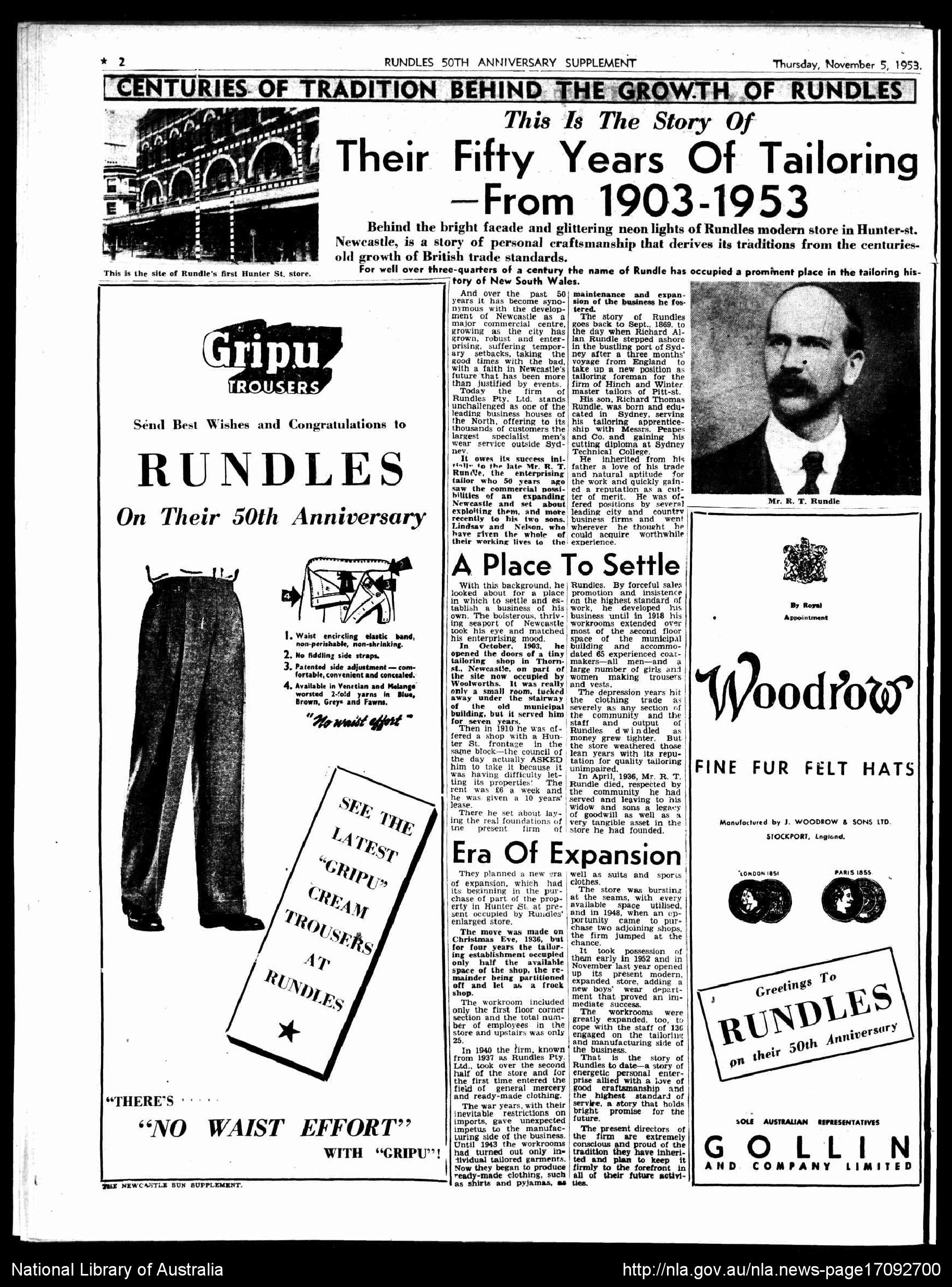
Rundles Department Store, Newcastle, 50 years of Tailoring, Newcastle Sun, 5 November 1953.
A supplement I found from 1953, reflecting back on Richard Thomas Rundle and his continuing business.

Photograph of Catherine Ellen Ackers Rundle nee Lindsay, image courtesy of Peter Rundle
In researching the life of Richard Thomas Rundle’s wife Catherine Ellen Ackers Rundle I came across several of her shipping records and could see that she was an inveterate and very independent traveller, enjoying the luxury of first class travel on some of the most famous passenger liners in the world. This next record lists Catherine aboard the Oronsay travelling to London in 1934, presumably to visit her son Dr. Frank Rundle.

U.K. Outward Passenger List 1890-1960, for Mrs. C.E.A. Rundle, Business Manageress, aboard the Oronsay, departing London 21 July 1934 bound for Sydney, Australia

11 February 1937 Newcastle Sun
This newspaper clipping shows my husband Geoff Rundle’s father, Philip Rundle, travelling by car with his widowed mother Catherine Rundle to Tenterfield and Bowral visiting his sisters Rene Cooke and Enid Gillard. It was interesting news to find and show that Philip was leading quite a normal family existence before World War II.

Mrs. R. Rundle Entertains 12 April 1939, Newcastle Sun

California Passenger and Crew Lists, 1893-1957, for Catherine Rundle travelling with her daughter Enid Gillard aboard the Monterey arriving in Los Angeles on 10 July 1939
Catherine gives her occupation as Estate Manager which is just wonderful to see, what an amazing independent and liberated woman she was. Below she gives her next of kin as Richard Rundle, 22 High Street, Newcastle and it also gives her next part of the trip to London aboard the Mauretania July 29-30, 1939.

Monterey Passenger List continued for Catherine Rundle 10 July 1939

7 November 1939 Newcastle Morning Herald

U.K. Outward Passenger Lists, 1890-1960, Cabin Passengers, Catherine Rundle and her daughter Enid Gillard aboard the Aquitania, 11 September 1939, Southampton to New York.
Catherine Rundle took a trip to London in 1939 with her daughter Enid Gillard, expecting to stay for some time, visiting her son Francis ‘Frank’ Felix Rundle who had just announced his engagement to Peggy Browne. At Peggy Rundle’s funeral in 2004 I was most interested in her sons Julian and Patrick Rundle explaining how shocked Dr. Frank Rundle was to discover his mother’s arrival in London at such a dangerous time with war imminent. Apparently Frank was furious with his mother for turning up unannounced to London for a visit and insisted that her stay was a short one while he arranged for her prompt and safe return to Australia via the USA aboard the Aquitania, because it was deemed a safer route. It was interesting that Catherine Rundle had no idea of the impending war or else she wouldn’t have gone to London at this time, nor done a side trip to Amsterdam and Norway. Two points about these newspaper articles is most interesting, the first that Julian and Patrick, Geoff’s first cousins both knew about their grandmother’s perilous trip to London and their family story was proved correct by my research. This is very reassuring information, when so many of the family stories I have heard from others has been so incorrect. So, full marks to the Frank Rundle family historians! My other point is, that however dangerous it was, it is fascinating that Catherine Rundle visited both Japan in 1937 and the U.S.A., Europe and London in 1939 and saw their pre-war existence; an historic experience for an Australian woman.

18 August 1948, Newcastle Sun
This obituary for Catherine Rundle quite clearly gives her maiden name as Lindsay, also the Christian names of her sons and includes the name Lindsay, which was quite different to the name Moloney on her marriage record. Knowing that Catherine had been married before meant there was much more research to do here to uncover her life story.

19 August 1948, Newcastle Morning Herald
I found yet another obituary for Catherine Rundle with an explanation confirming her father’s fate, Captain David Lindsay who had died in a shipping accident, but incorrectly stating that he died at Wilson’s Promontory rather than the Foveaux Straits south of New Zealand. It was incredible to see this information which corroborated some earlier research I had done on Captain Lindsay. It is also wonderful to be able to confirm the names of her children and in the case of her daughters, their married names and addresses.

Funeral of Catherine Ellen Ackers Rundle, 19 August 1948, Newcastle Morning Herald
It was so helpful to have this funeral notice for Catherine Rundle giving her place of burial as Sandgate Cemetery, Newcastle. This confirmed my husband Geoff Rundle’s earliest childhood memory, visiting Sandgate to watch the 1956 Olympic flame being run through the town on the way to Melbourne. He also remembered visiting the family grave just before watching the Olympic flame.

Rundle Family Grave, Sandgate Cemetery, Newcastle, New South Wales


Probated will of Catherine Ellen Ackers Rundle
Catherine Ellen Acker Rundle’s will, dated 11 August 1947, raises many questions.
Why did she leave the family home to her youngest son Philip Rundle? Had this been discussed with the rest of the family? Why did her daughters receive such small bequests? Why was her son Francis Felix Rundle completely left out of the will, as were Catherine’s two sons from her previous marriage to William Moloney Snr? Was Catherine Rundle’s will perceived as unfair by some of her children, who felt that they had not been treated equally? Why was there a falling out between Philip Rundle and the rest of his siblings?
Wills often create resentment when siblings are not treated equally. Generally, it is not an unreasonable expectation in one’s family to inherit from a parent, as an appreciation and recognition of being part of that family and as an expression of the love bestowed from a parent to a child. When this doesn’t happen and wills are unequal or unfair, questions will be raised and siblings ought to help each other to understand these anomalies. Ultimately rifts occur and family disorder and dysfunction will result if these issues are not resolved. In my husband’s family, unfair wills have become a perpetuating and unexplained pattern, tearing family relationships apart. People often say, “Where there is a lot of money, you will find a family argument.”
Richard Lindsay Rundle and Nelson David Rundle inherited the tailoring business and the department store, but the extended family was also there supporting this growing and profitable family business and it can be seen that some siblings received less from their mother than others. It is possible that some members of the family expressed disappointment and surprise that Philip Rundle had inherited the family home.
The newspaper obituaries for Catherine Rundle’s death do not even mention her two eldest sons, John ‘Molo’ and William ‘Bill’ Moloney, the latter who was later known as Bill Rundle. I will deal with Catherine’s first marriage to William Moloney Snr and their two sons in my next chapter, The Lindsay Family from Montrose, Scotland.
During Geoff’s and my visit to Newcastle in 2012, to do some Rundle family research, we also met up with Geoff’s first cousin Peter Rundle, his wife Myra and another first cousin, Elizabeth Rundle and had a lovely lunch down at the new Docklands area. Peter and Elizabeth are both keen Rundle family researchers.
I am indebted to Peter Rundle for his kindly sharing his entire research collection and loaning it to me so I could photocopy it; this was something I truly appreciated. Peter is the son of Nelson David Rundle and Elizabeth is the daughter of Richard Lindsay Rundle. Thus it was three first cousins who were meeting for the first time in many years, lunching together and catching up on family news and history. We had such a happy day discussing the family’s falling out with Philip Rundle, wondering why it had happened, trying to explain the reasons and to a great part, repairing this Rundle family rift and clearing up some of the myths!

The reverse side of the Rundle’s grave finds the grave of her son Nelson David Rundle, died, 26 Feb 1969. His wife Marguerite Helen Rita Rundle died two years earlier on 5 Aug 1967.
Nelson David Rundle (1914-1969) and Marguerite Helen ‘Rita’ Pratt (1914-1967) married in Newcastle on 21 June 1941 and had two sons, Peter Rundle (1942-) and Richard Paul Rundle (1949-1984).
Nelson enlisted in World War II and joined the 2nd A.I.F.

27 May 1940, Newcastle Sun

13 March 1964, Canberra Times
Nelson Rundle, the second son of Richard Thomas Rundle and Catherine Ellen Ackers Rundle was born in Mayfield, New South Wales, a suburb to the north west of Newcastle. He was a sailor of some note, having sailed in a number of Sydney to Hobart Yacht races, including taking his son Peter, aged 15 in 1957. Very famously, he won the Sydney to Hobart Race on Handicap in 1961 aboard Rival, co-owned with Albi Bugin. Later Peter Rundle competed in the Sydney to Hobart Yacht Race and owned The Newcastle Flyer.
As a sailor in the Sydney to Hobart on two occasions in 1987 and 1991, Geoff remembered back to his childhood and the excitement surrounding Rival’s win. The small 34 foot boat disappeared off The Sydney Morning Herald charts as it sailed east to find stronger winds. Rival was out of radio range for a few days and was only later found when it sailed victoriously up the Derwent River to claim a victory on handicap, in a time of 4 days, 17 hours and 21 minutes. In those days the maxi yachts and the race for line honours were not as important as was the handicap honour. Newspapers wrote of gale force winds for the start of the race and the fact that 500,000 people stood on headlands to watch the start off Point Piper, as many others packed spectator craft to chase the fleet of 36 yachts out the harbour and down the coast.

3 November 1961, Canberra Times

Rival, winner of the 1961 Sydney to Hobart, owned by N. Rundle and A. Bugin
Image courtesy of boatgenealogy.com.au, an excellent website filled with articles, facts and photographs of the history of the Sydney to Hobart Yacht Race over the years.

27 December 1961, Canberra Times

Headstone of Richard Lindsay Rundle (1906-1996), which is also found on the Rundle Family monument grave at Sandgate Cemetery, Newcastle
Richard Lindsay Rundle, the eldest son of Richard Thomas and Catherine Ellen Ackers Rundle was born at Bathurst, New South Wales on 3 September 1906 and baptised at All Saints Cathedral, Bathurst on 14 October 1906.
Richard Lindsay Rundle married Jean Elizabeth Bartley in Newcastle in 1941 and they had three children Jennette Rundle (1950-), Lindsay Bartlett Rundle and Elizabeth Ellen Rundle.
Lindsay Rundle was an enlisted serviceman in the RAAF during World War II and was recommended for the Distinguished Flying Medal. Together with his brother Nelson he inherited the family business, Rundles Department Store and ran this business successfully for many years making it an institution in Newcastle and renowned as the place young men would purchase their first suits. This included my own husband Geoff Rundle who regularly paid visits to Newcastle to be measured up for new suits, right up until the mid 1990’s when the business, unable to cope with cheap imported Asian suits went into liquidation.
At one point was the third largest employer after B.H.P and the State Dockyard, employing about 400 people in a modern purpose built factory at Kotara.

6 November 1953, Newcastle Morning Herald

20 September 1947, Newcastle Sun

U.K. Incoming Passenger Lists, 1878-1960, Richard Rundle, and his wife Jean travelling first class aboard the Himalaya for a five month holiday to U.K., 26 April 1955 where they will reside at the Cumberland Hotel in London.
There is so much wonderful information to be found on these lists including dates of birth, nationalities and occupations.

Images of Rundles Department Store, courtesy of Peter Rundle, Newcastle

14 January 1933, Newcastle Morning Herald
Francis Felix Rundle married Peggy Seccombe Campbell Browne in London on 2 June 1939 and had three children, Christopher Rundle (1942-1942), Julian Francis Rundle (1944-) and Patrick Adrian Rundle (1949-)
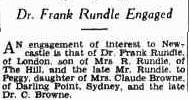
17 April 1939, Newcastle Sun

6 June 1939, Sydney Morning Herald
I love this photograph of Peggy Browne, she looks just like Her Majesty, Queen Elizabeth II.

Portrait of Professor Rundle, circa 1990, by Brian Dunlop, pencil drawing

18 February 1994, University of New South Wales Newsletter , Jniken
The article below was taken from an online article in July 2011 about Francis Felix Rundle and his career as an endocrinologist and it is most illuminating and thorough:
www.endocrinesureons.org.au/articles/july-2011-newsletter-rundle-and-his-curve
“‘Rundle’s curve’ is a well-known phenomenon, found in many ophthalmology and endocrinology textbooks. It describes the natural history of the orbital changes in Graves’ ophthalmopathy. Whilst all the primary research underlying this observation was taken in London, Rundle was in fact an Australian, and later returned to Sydney to make a significant contribution to the surgical management of thyroid disease.
Francis Felix Rundle was born in Newcastle, NSW, on April 13, 1910. He grew up in that industrial city before studying medicine at the University of Sydney, where he graduated MBBS with 1st class honours in 1932. After graduation he moved to London to further his surgical career. He was subsequently appointed as Assistant Director of the Surgical Unit at St Bartholomew’s Hospital and Research Associate at the London County Council Thyroid Clinic. His major interest was in Graves’ ophthalmopathy and he produced a series of research papers over the next decade describing the natural history of the orbital changes in Graves’ disease. His graph showing the initial worsening and then partial resolution of those changes became known as ‘Rundle’s Curve’ and remains a fundamental part of endocrinology and ophthalmology teaching to this day.”
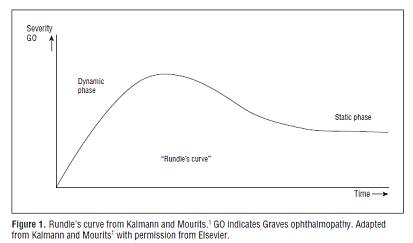
“He was awarded the Jacksonian Prize of the Royal College of Surgeons for his essay on Graves’ ophthalmopathy, and was subsequently appointed Hunterian Professor. His academic career took a backseat to service with the British Army. Rundle then spent a year in the United States at Harvard, John Hopkins, and Stanford as the Rockefeller Travelling Fellow. He was so impressed with the role of clinical research that he sought to replicate this environment at future appointments. In 1950 Rundle moved to Sydney and established the Unit of Clinical Investigation at Royal North Shore Hospital. He enlisted to the Unit, Dr Hal Oddie, a physicist from Oak Ridge Nuclear Facility USA, to study iodine dynamics and 1311 use. With Oddie’s help he was able to set us the first group in Australia to direct management of dosage of 1311 in thyrotoxicosis and non-toxic diffuse goitre. He also helped establish a facility at Royal North Shore for the management of thyroid cancer with 1311. His other major contribution to the management of thyroid disease whilst at Royal North Shore was the production, as editor, of the 2nd edition of Cecil Joll’s Textbook of Thyroid Surgery. In its time this book was the definitive reference text on thyroid disease and thyroid surgery. Notable I the 2nd edition was the change in the operative diagram, with a return to anatomical dissection, emphasising formal identification of the recurrent laryngeal nerve, approach which had formerly been rejected by Cecil Joll. His other major contribution was to appoint to the Unit of Clinical Investigation in 1957, a young Thomas Reeve, recently returned from the U.S.A. Rundle went on to take up a post as the founding Dean of the Faculty of Medicine at the University of NSW and subsequently Director of the Centre for Medical Education Research and Development.”
Adapted from: Bartley G Arch Ophthalmol. 2011;129:356
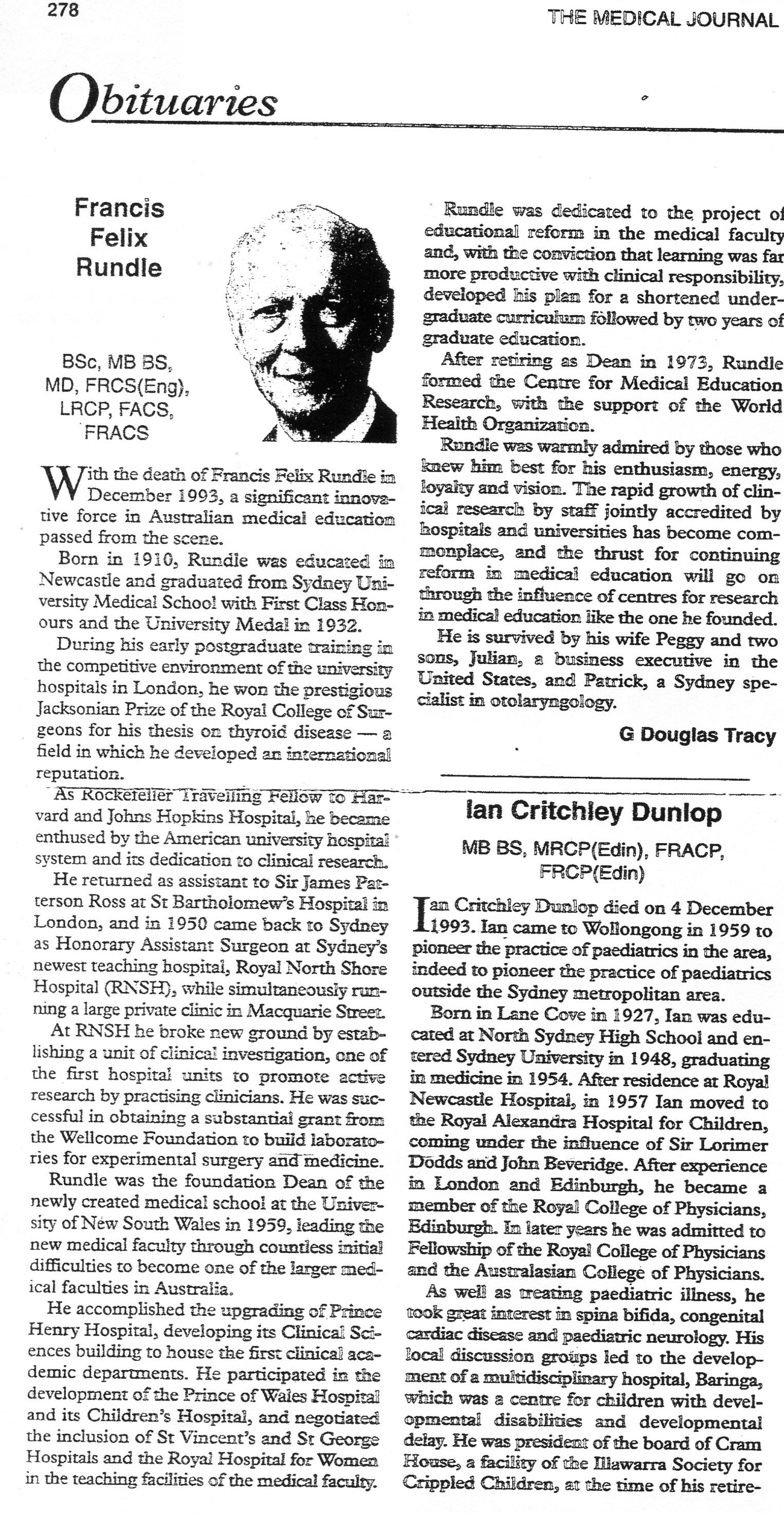
The Medical Journal of Australia, Vol 161, 15 August 1994
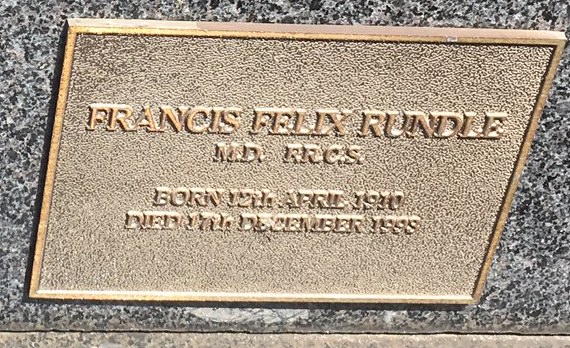
Francis Felix Rundle(1910-1993)
Bronze Plaques have been placed on the Browne Family Grave at South Head Cemetery, Vaucluse, New South Wales.
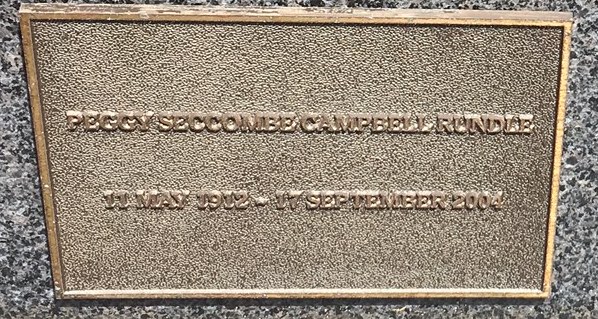 Peggy S C Rundle nee Browne (1912-2004)
Peggy S C Rundle nee Browne (1912-2004)
Elsie ‘Enid’ Rundle (1912-1970) married Lionel William Gillard on 4 April 1936 in Newcastle and they had two daughters, Rosemary Catherine Gillard and Patricia Gillard.
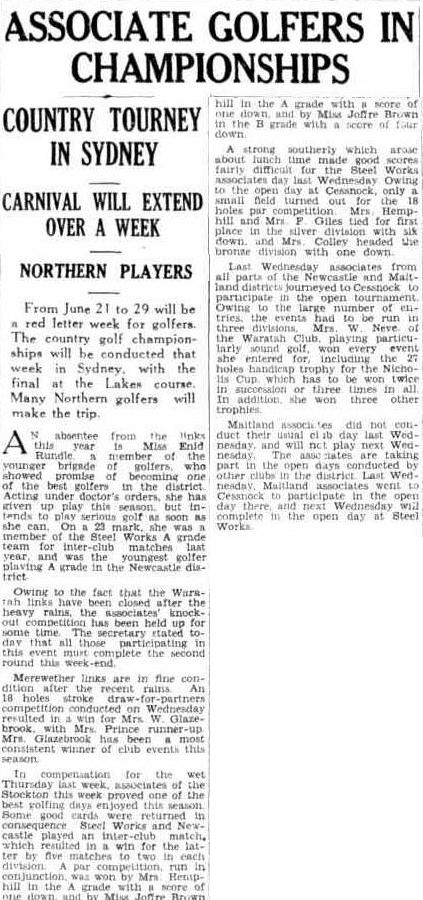
8 Jun 1924, Newcastle Sun
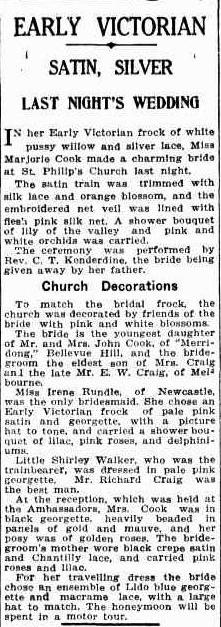
19 October 1928 The Sun
I wondered if Marjorie was a sister to John Cook.
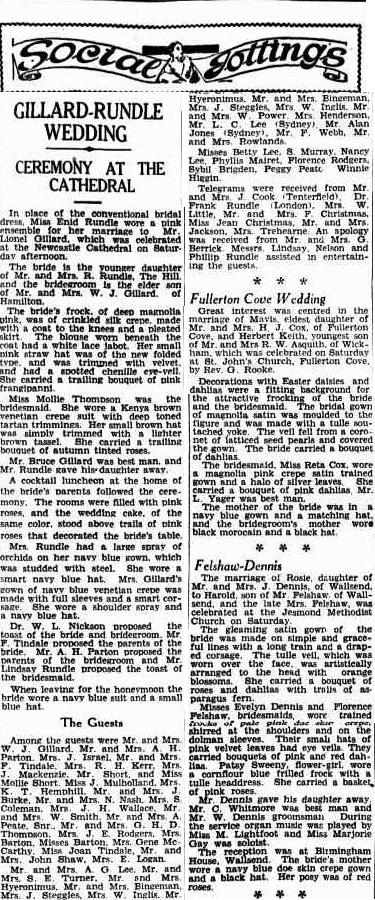
6 April 1936, Herald Sun
Irene ‘Rene’ Ellen Rundle (1904-) married John Blair Cook (1900-1966) in Newcastle on 17 December 1930 and they had two sons James Philip Cook and John Richard Cook.
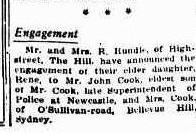
24 April 1930, Newcastle Sun
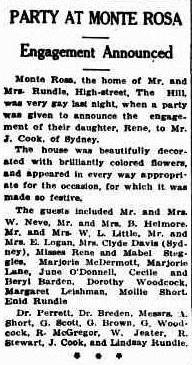
24 April 1930, Newcastle Sun
Monte Rosa, was the home of Mr and Mrs Rundle, High Street, The Hill, Newcastle

16 December 1930, Newcastle Sun
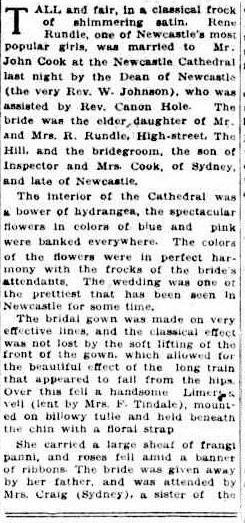
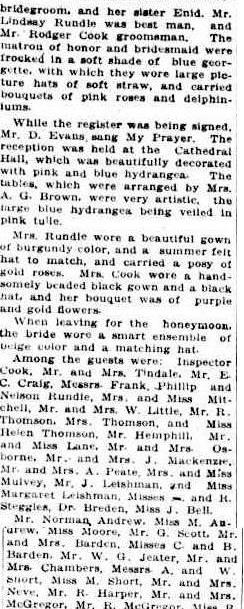
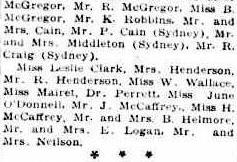
18 December 1930, Newcastle Sun
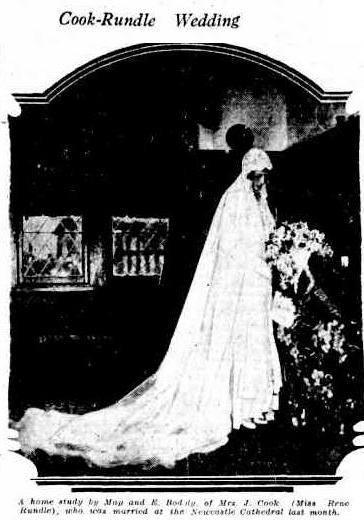
7 January 1931, Newcastle Sun
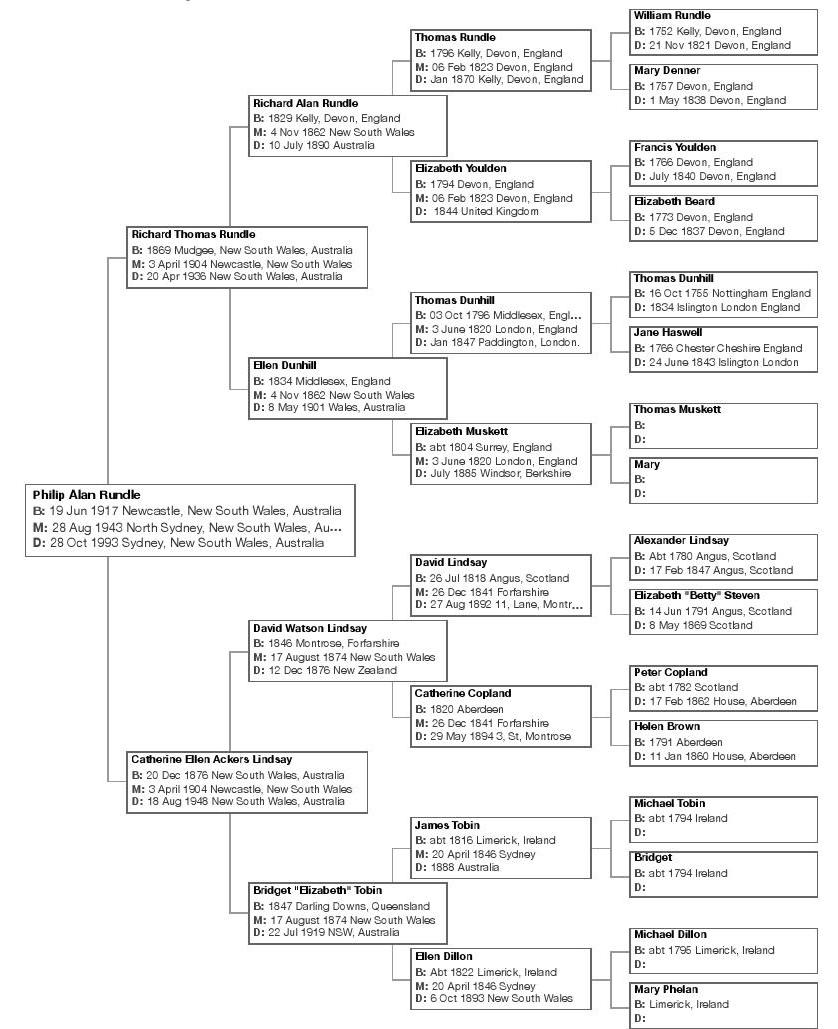
Pedigree Chart for Philip Alan Rundle
Philip Alan Rundle (1917-1993) married Elisa Berta Alexandria Fiaschi (1915-1997) at St Giles, Greenwich on 28 August 1943 and they divorced in 1945 with no issue. He then married Valmae Lenore Patterson (1926-2016) on 10 December 1949 at St James, Philip Street, Sydney and they had two children Philippa Lenore (1951-) and Geoffrey Philip Farrell Rundle (1953-).
Philip Rundle was a wonderful student and talented athlete and I have collected several newspaper clippings regarding his time as a student at Newcastle Boys High School, his university offer and achievements at Sydney University, Camperdown.
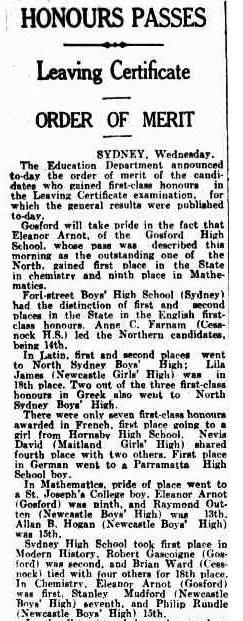
16 January 1936, Newcastle Morning Herald
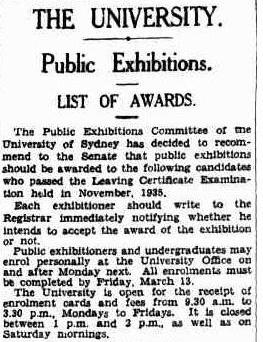
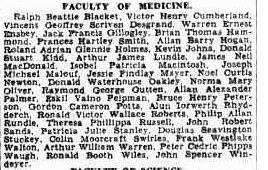
20 February 1936 Sydney Morning Herald
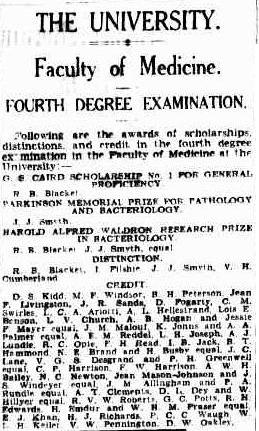
28 September 1939, Sydney Morning Herald
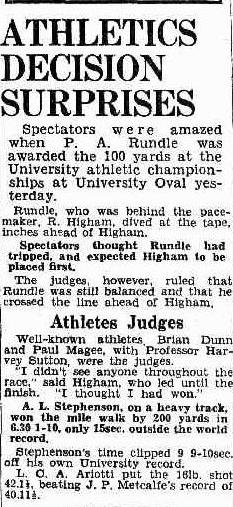
2 May 1940, Daily Telegraph
Philip Rundle was born on 19 June 1917, the youngest son of Richard and Catherine Rundle, his birth record has yet to be released under the 100 year non-disclosure of public birth records. However, it was wonderful to find his World War II Military Service Record where he named his mother Catherine Rundle his next of kin.
World War II Military Service Records, 1939-1945:
| Name: | Philip Alan Rundle |
| Birth Date: | 19 Jun 1917 |
| Birth Place: | Newcastle New South Wales |
| Year Range: | 1939 – 1948 |
| Enlistment Place: | Paddington |
| Service Number: | NX117499 |
| Next of Kin: | C Rundle |
| Series Description: | B883: Army, 2nd A.l.F. |
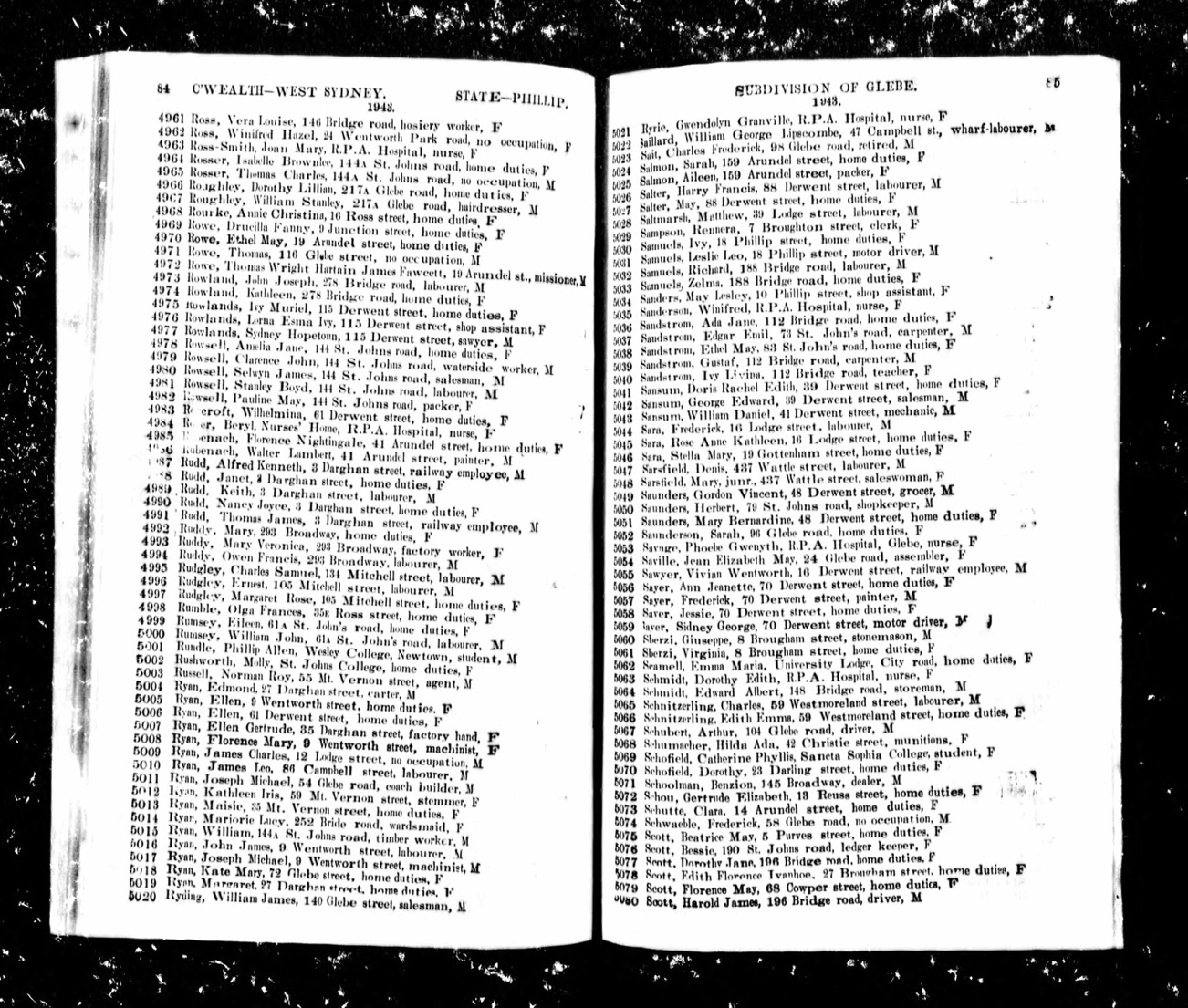
Australian Electoral Roll, Glebe, 1943 for Phillip Allen Rundle (sic) of Wesley College
It was fascinating to find this electoral roll for Philip Rundle, residing at Wesley College, Sydney University in 1943, whilst undertaking his specialist medical degree.
Up until now most of my family history chapters have involved writing about family members that I did not know. Taking this into consideration, I have found this chapter more challenging as the family historian. I will still use the same methods and rely on original documents, diaries, letters and certificates to describe lives and deeds, but I will also add in some personal accounts.
Documents are indeed a wonderful insight into a person’s life and their intentions are laid bare without the need for explanation. Through my father Reg Robson’s diary, his reflections will support some of my life experiences with the Rundle family. Later, I will record some of my husband Geoff Rundle’s childhood memories.
Philip Rundle grew up in Newcastle, he later became a specialist physician who practised out of Hengrove Hall in Macquarie Street, Sydney. His was a medico legal practice and he was often called upon to give evidence in court proceedings, in the course of his work. Philip had attended Sydney University and had resided at Wesley and St Paul’s Colleges during his university degree. Upon finishing his Medical degree, he enlisted in World War II and, like other doctors, he was promoted to Captain, serving in the army on Bougainville Island, New Guinea during World War II.
One fact I did know about Philip Rundle came from my own parents, Reg and Vena Robson, early on in my courtship with Philip Rundle’s son, Geoffrey Philip Farrell Rundle. Late one evening, I overheard my parents talking about Philip Rundle and his first marriage and divorce. I chatted to my parents about this information and accepted it without any problem, but I was counselled by them not to mention it to anyone, unless someone else did first. These were wise words indeed.
It wasn’t long before this eventuated. I attended the Head of the River Regatta on the Nepean River in 1975 with Geoff and late in the afternoon he was visibly upset by a Kings School parent, Mr Tyndall, who insisted that Geoff’s father Philip had married and divorced during World War II; explaining to Geoff that he was good friends with his father at the time. Geoff told him that he must have the wrong person. Clearly Geoff did not know, and thankfully I was there to pull him aside and explain that it was indeed true. Later in the evening, he challenged his father, who walked away from him and refused to discuss his first marriage with his son. It got worse when Geoff found out that his sister Philippa, knew about the divorce and his mother insisted it was an annulment, however his parents had deemed it not necessary to tell him. This was to be my first illuminating glimpse into the complicated family life that Geoff had endured.
Shortly after I started research on the family tree, I had a friendly and interesting phone call from Peter Rundle, Geoff’s first cousin, the eldest son of Nelson Rundle, Philip Rundle’s elder brother. Peter told me he had a lot of family information and was happy to share it with me and I greeted this news with great delight. We had a long chat and over the course of the conversation Peter told me that the Newcastle gossip about Philip’s first marriage was that Philip Rundle had eloped and had inadvertently married his half-sister! He went on to explain that after this was discovered, the marriage was annulled, after pressure from his mother Catherine Rundle. Not only was this information common knowledge, but a descendant of William and Catherine Moloney, Matt Hall, had shared a version of this on his blog, regaling this interesting story and also disclosing information about the troubled first marriage of Catherine Rundle, the birth of her two sons and her divorce from William Moloney Snr. Peter Rundle also explained that after the divorce, the elder son went to live with his father and the younger, with his mother.
Geoff and I visited the State Archives of New South Wales in 2012, soon after this phone conversation with Peter Rundle. An online search had revealed the Rundle/Fisaschi divorce in a collection of divorce papers, which were publicly released after the fifty year exclusion time-frame had expired. It was with some trepidation that Geoff and I undertook this visit, due to the rather bizarre family stories that had circulated amongst the Newcastle Rundle and Moloney descendants. I was determined to do my own research and find out the truth of these matters.
It would seem that during World War II, Philip Rundle had fallen in love with a fellow medical student, a beautiful, intelligent, yet complex woman, Elisa Berta Alexandria Fiaschi (1915-1997), an Australian girl of Italian descent, born in Alexandria, Egypt. Philip and Elisa had a passionate war romance, culminating in an elopement on the evening of 21 August 1943. Philip and Elisa Rundle’s marriage certificate was found amongst the papers, letters and documents at the State Archives of New South Wales, Kingswood. Geoff and I were able to photograph many of the letters that were presented by the petitioners at the divorce court proceedings.
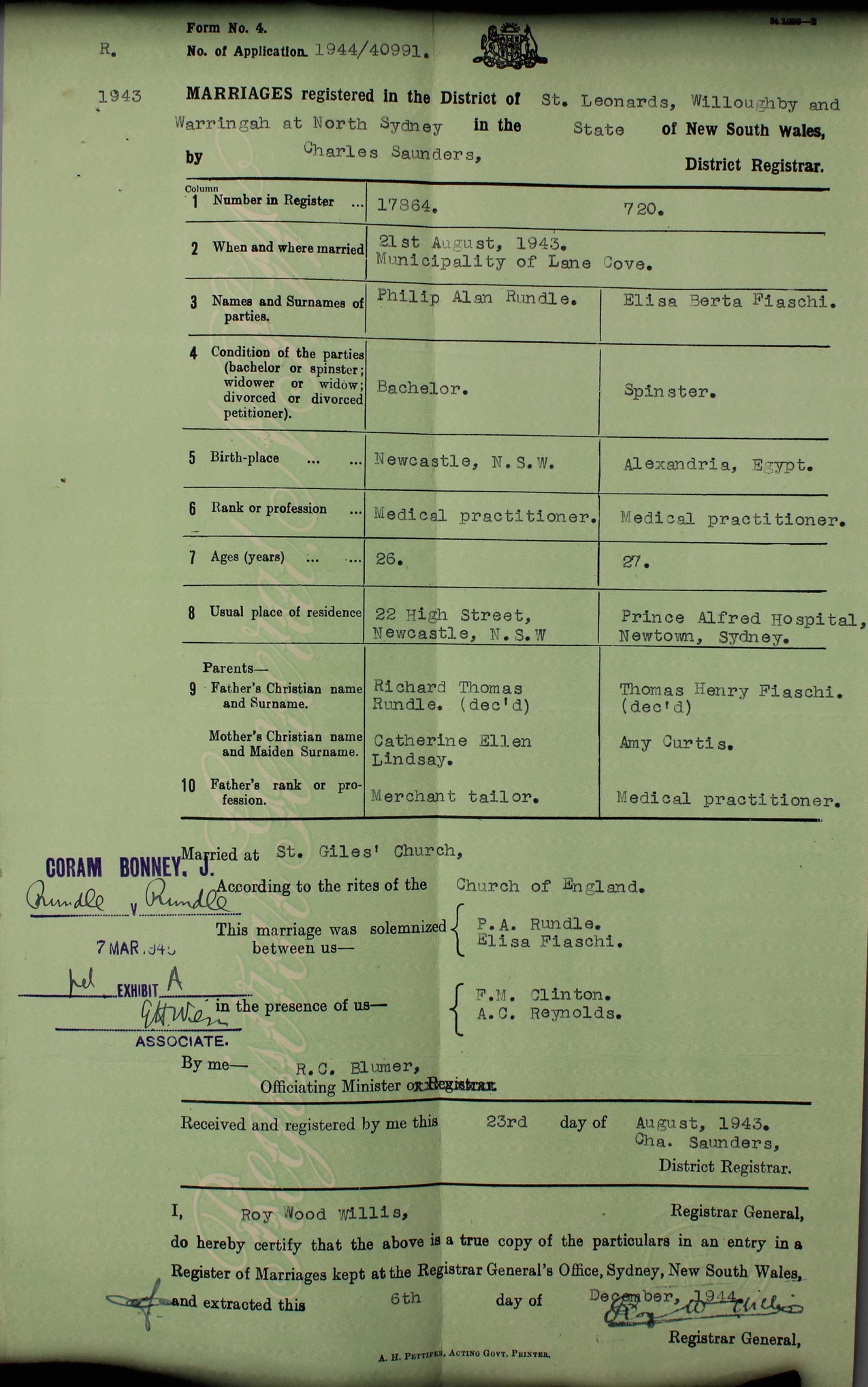
Marriage Certificate of Philip Rundle and Elisa Berta Fiaschi, 21 August 1943
There was so much wonderful information to be found on the marriage certificate including the names of the two witnesses, F.M. Clinton and A.C. Reynolds. These names were not ones that either my husband Geoff nor I had ever heard of and we wondered if they were simply witnesses in name only. It turned out that F.M. Clinton was in actual fact a woman, Mrs Frank Clinton, otherwise known as Frank Payne, a well-known Sydney artist, best remembered for her paintings of landscapes and small children. My challenge in the future is to try and find out how Frank Payne fitted into the lives of Philip and Elisa Rundle.
The letters explained how Philip and Elisa, during an evening party, were encouraged to marry. The imminent posting of Captain Philip Rundle for war service meant that somehow they were able to procure the documents necessary to marry later that same evening. They were swept up, like so many other couples during World War II, to embraced this romantic ideal. It was also a very serious commitment to their future and to each other in these very troubled times. It was also well known that rectors and church priests took a lenient view on bending the church laws and customs during periods of war to enable couples to marry, especially those who did not have time on their side.
Divorce Papers of Philip Alan Rundle and Elisa Berta Alexandria Fiaschi
First Files contains:
Exhibit A Elisa Letter dated 19 Nov 1944, P.A. Rundle petition to the court dated 7 Dec 1944
Exhibit B Letter from Elisa 29 October 1943
Exhibit C Letter to Philip in Bougainville, 21 Mar 1944 stained
Exhibit D Letter from Elisa 25 Sep 1944
12 December 1944 Petition for the restitution of conjugal rights
Affidavit of service of Petition 4 January 1945 both signed
7 March 1945 Cross examination of P.A. Rundle 6 pages refers to above exhibited letters
Second file contains:
Exhibit A Original Marriage Certificate, St Giles Church, Greenwich, 21 August 1943
23 May 1945 letters P.A. Rundle of 22 High Street Newcastle
Decree Nisi granted 30 May 1945
Absolute 6 December 1945
Notes taken by Virginia Rundle at State Archives of NSW 21 November, 2012
There was absolutely no reference to an annulment amongst these papers, nor any reference whatsoever to Philip and Elisa being related. What unfolded before our eyes was a love story about two newly qualified medical doctors in the middle years of World War II, eloping one evening with the encouragement of Mrs Clinton, after a Lane Cove party on a Sydney winter’s evening. The two star crossed lovers were obviously infatuated and in love, however, in the bright light of day and after a three week Bowral honeymoon, what had seemed so romantic had turned into a not so wonderful decision, when the couple confronted their parents with their exciting news.
Elisa’s mother, Amy Fiaschi, was unhappy from the start; who was this man her daughter had married? How was Philip Rundle, a man freshly out of university able to support her daughter, especially when it was discovered that he had just been called up for war service to Bougainville Island? It was somewhat ironic that Thomas and Amy Fiaschi found their daughter in this predicament, because Elisa’s father Thomas Henry Fiaschi, was a heroic doctor during World War I, stationed on Lemnos in the Greek Islands, who operated on and cared for so many Anzacs and the horrific war injuries that had been inflicted on them.
Born in 1853 in Florence, Thomas Henry Fiaschi was the son of Lodovico Fiaschi, a Florentine Professor who migrated to Sydney in 1875. After first practising in Windsor, Fiaschi settled in Sydney and became an Honorary Surgeon at Sydney Hospital from 1893-1913. He had earlier joined the NSW Army Medical Corp and before Lemnos, he had served in Abyssinia and in South Africa. He later famously established Tizzana Vineyards at Windsor.
Thomas Henry Fiaschi (1853-1927) and his first wife Catherine Ann Reynolds (1850 – 1913) had two sons, Carto Fiaschi and Piero Fiaschi. After Catherine died, Thomas Fiaschi married Amy Curtis in Queensland in 1914. Thomas Henry Fiaschi and Amy Curtis (1886-1984) had two daughters Elisa Bertha Alexandria Fiaschi (1915-1997) and Olivia Beatrice Maria Fiaschi (1916-).
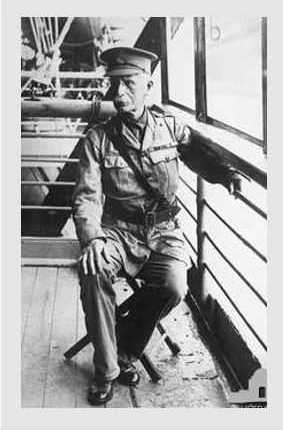
Portrait of Thomas Fiaschi, circa 1915, Australian War Memorial Collection
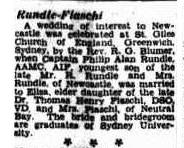
Newcastle Sun, 26 August 1943

Sydney Morning Herald 28 August 1943
Things only went downhill from there for Philip and Elisa Rundle, when Philip, on his last day of leave before returning to his unit in Brisbane, visited Newcastle with his new wife, to introduce Elisa to his family. Apparently Elisa intended to stay on a further three days in Newcastle after Philip left. According to a letter written by Elisa Rundle on 25 Sep 1944 she disclosed that Catherine Rundle, Philip’s mother, had behaved badly towards her and was most unwelcoming, resulting in her leaving abruptly and never returning; with Elisa resolving that they had both been too hasty and she now regretted her decision to marry Philip.
The Newcastle visit is explained in a letter written by Elisa to Philip on 29 October 1943, who was stationed in Bougainville, asking for a divorce, explaining that their marriage had been a terrible mistake. I can only imagine how crest fallen and completely helpless Philip must have felt, being thousands of miles away. He may also have felt anger towards his mother, Catherine Rundle for her unconscionable behaviour towards his Catholic wife. Catherine Rundle nee Lindsay (1877-1948) had her own issues too, due to the fact that her own Irish mother Bridget Tobin (1847-1919) had married a Catholic Italian seafarer, Benjamin Lafiura (1855-1897) after the death of her first husband David Watson Lindsay (1846-1876) in a shipwreck off Waipapa Point, in the Foveaux Straits south of New Zealand’s South Island. It occurred to me that some of Geoff’s Newcastle cousins may well have confused these two Italian connections – the Fiaschi and the Lafiura families. It is possible this was an explanation to the story about Philip’s first marriage to a half sister or cousin, because Bridget Elizabeth Lafiura nee Lindsay, formerly Tobin, who was Catherine Rundle’s mother, had four daughter’s by her second marriage.
A most distressing part of divorce was the salacious newspaper reporters, who notoriously plagued unhappy couples, viciously reporting their unhappy marriages in newspapers with the full knowledge that their sad circumstances were very readable and popular with the public and who had an appetite for scandal. Divorces sold newspapers. Weak personal defamation laws in Australia have allowed the media to persist in this endeavour. Even today gossip columnists, who very loosely describe themselves as journalists, write up celebrity marital troubles in newspapers, fuelled by photographs trolled from social media websites. Their unsupported comments, have no regard for the truth, nor for responsible journalism.

The Sun, 7 March 1945
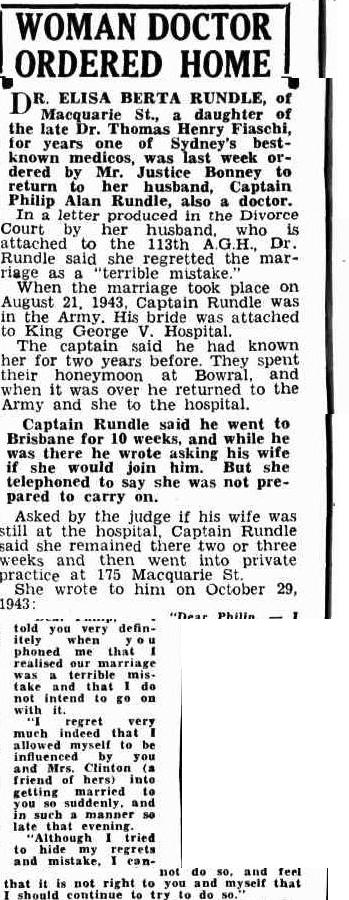

Truth 11 March 1945
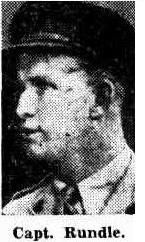
Truth, 11 March 1945
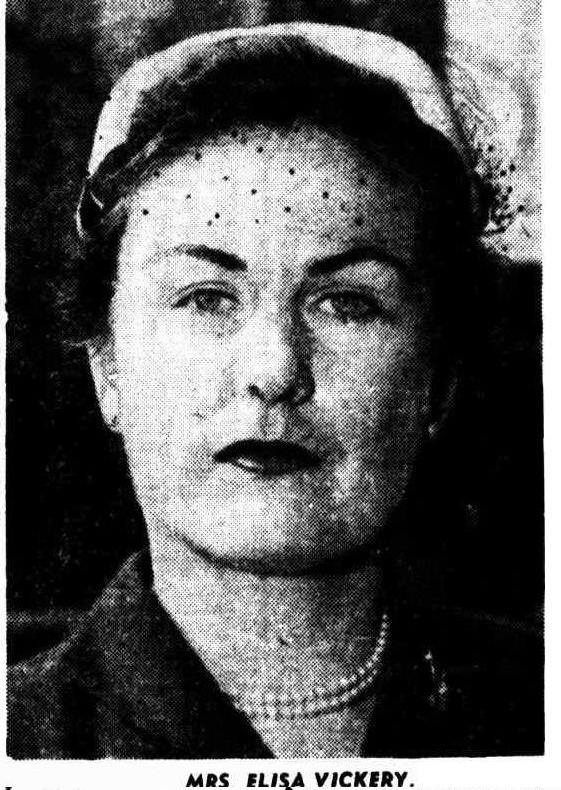
Truth, 21 November 1954
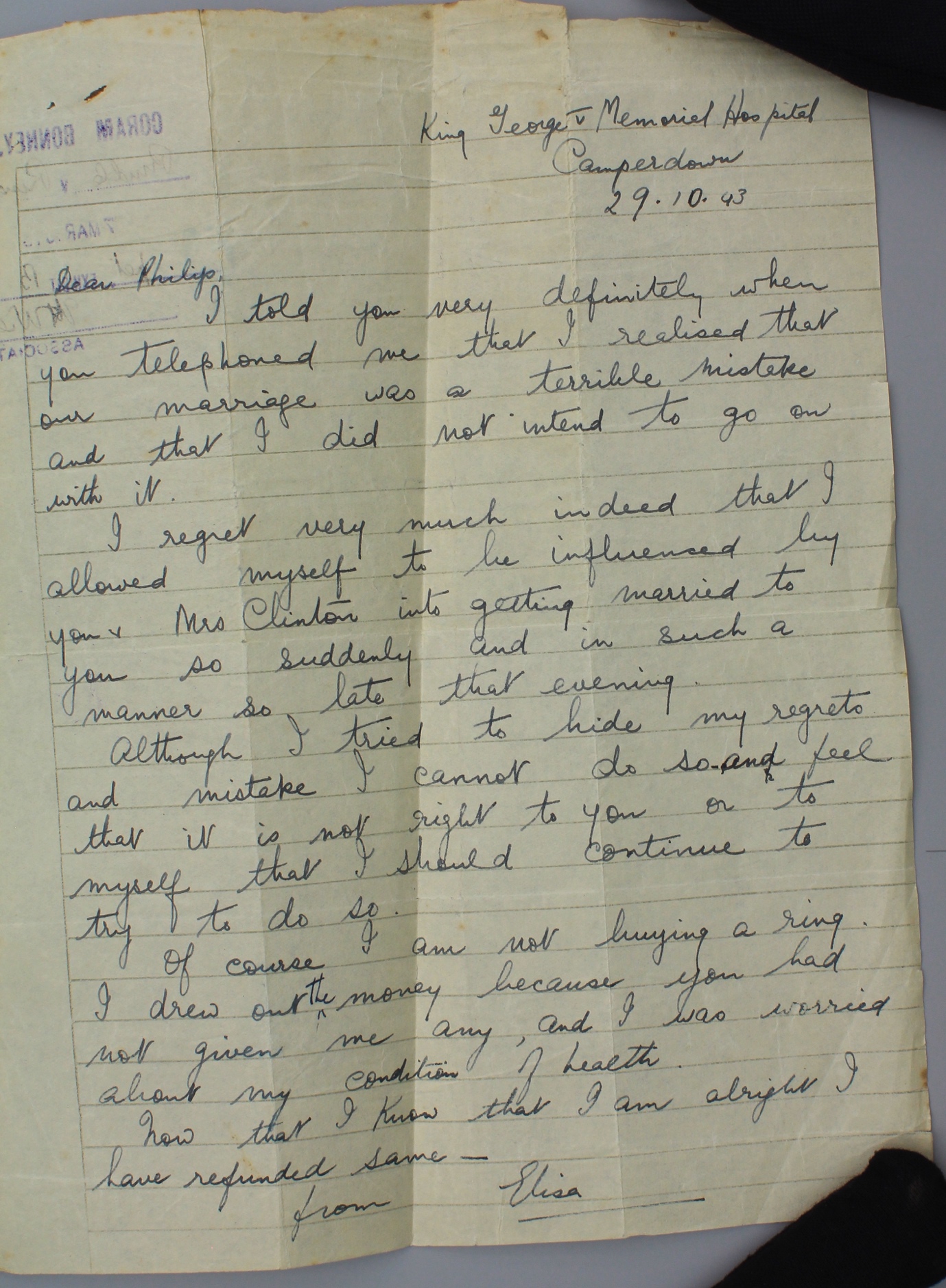
Exhibit ‘B’, letter written by Elisa Rundle and tended for the divorce of Philip and Elisa Rundle, 29 October 1943
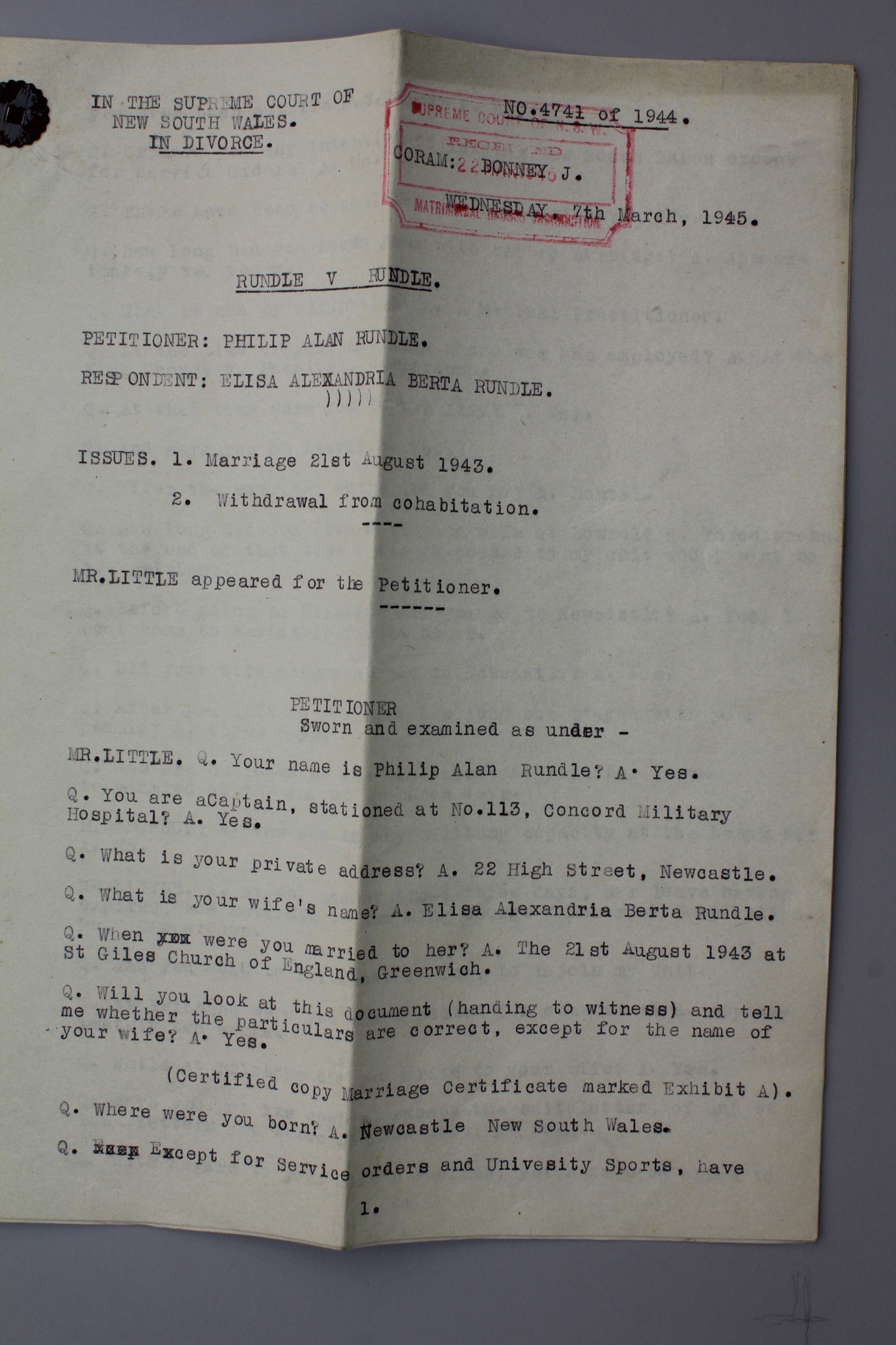
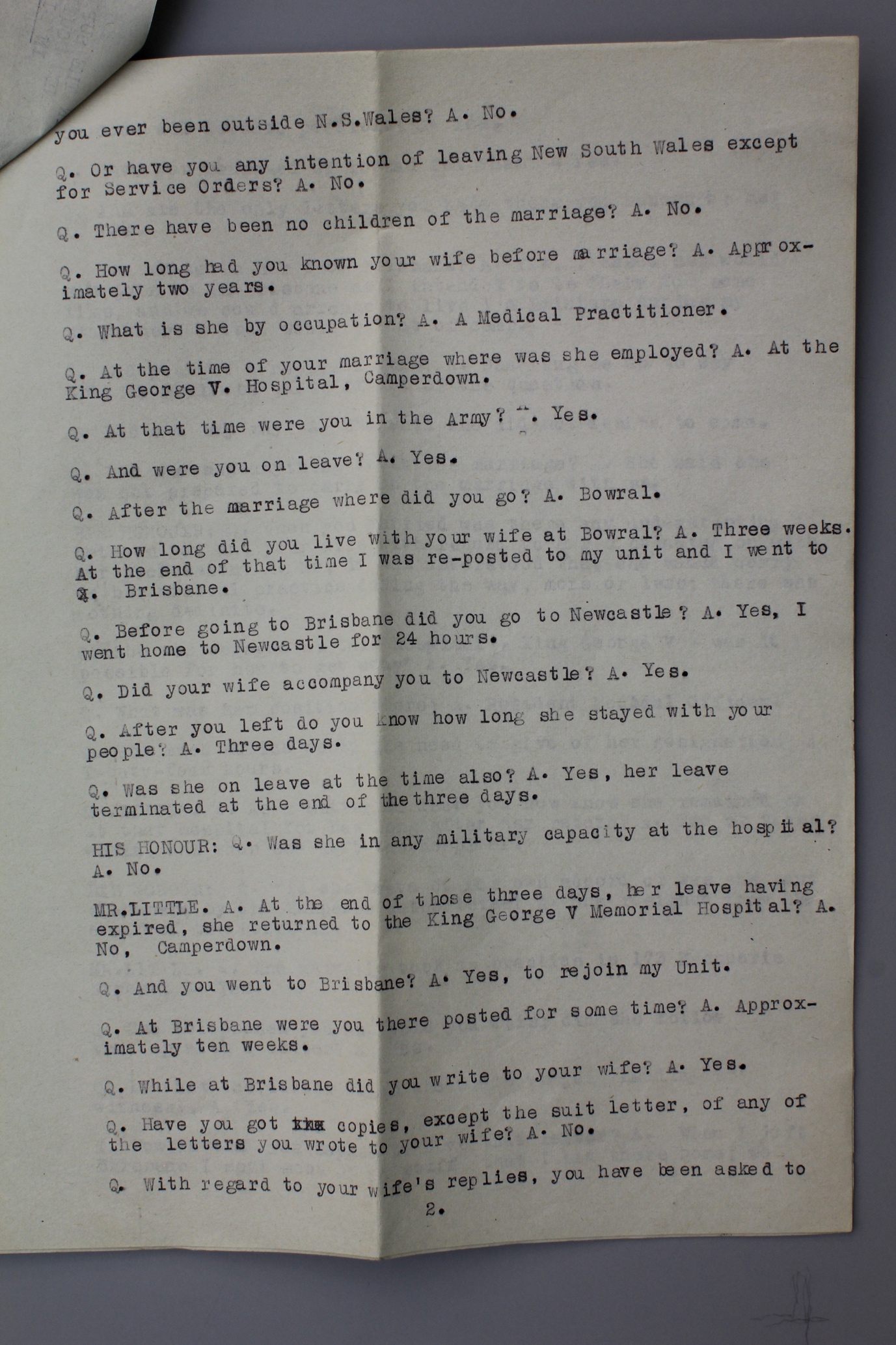
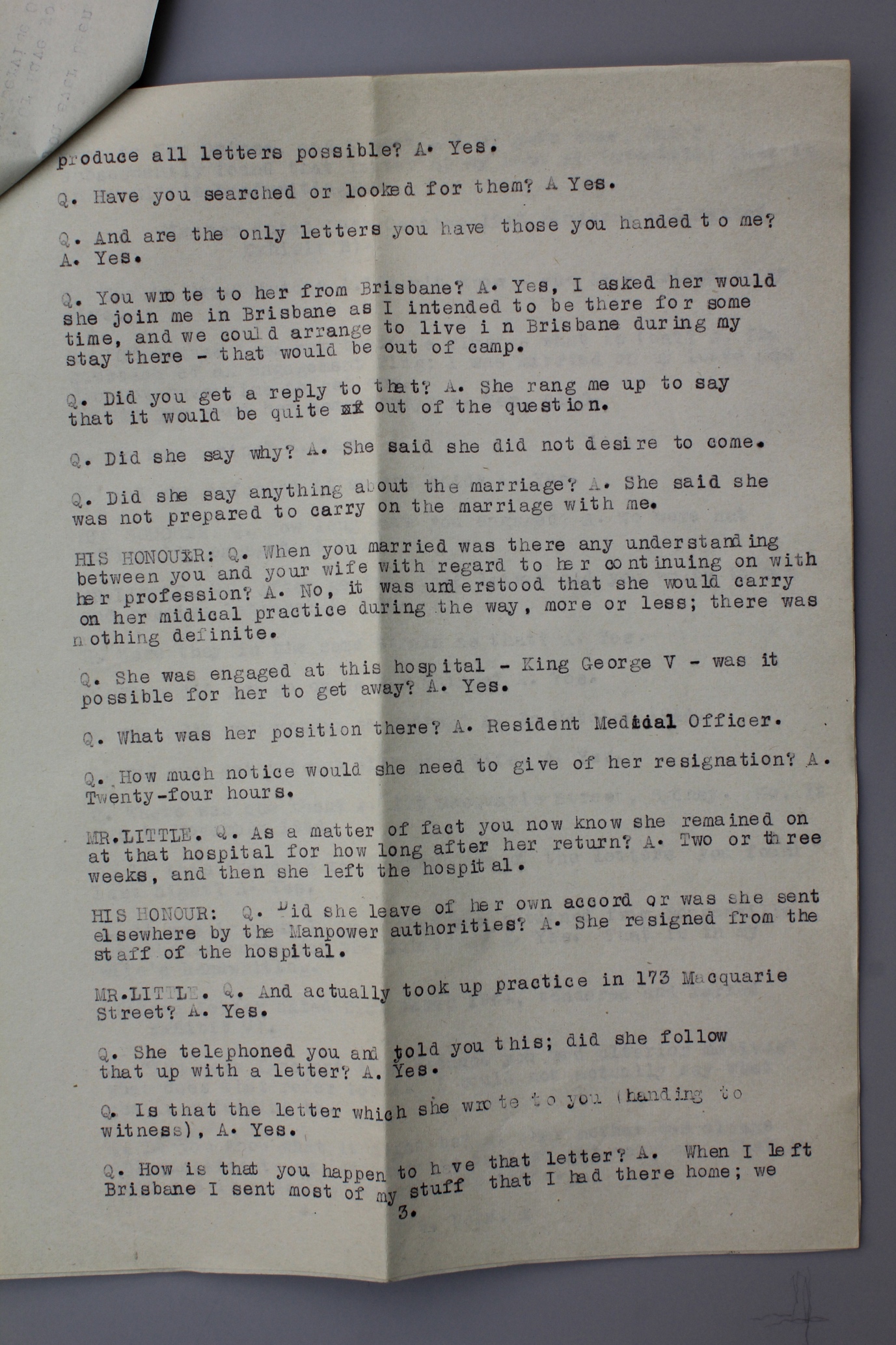
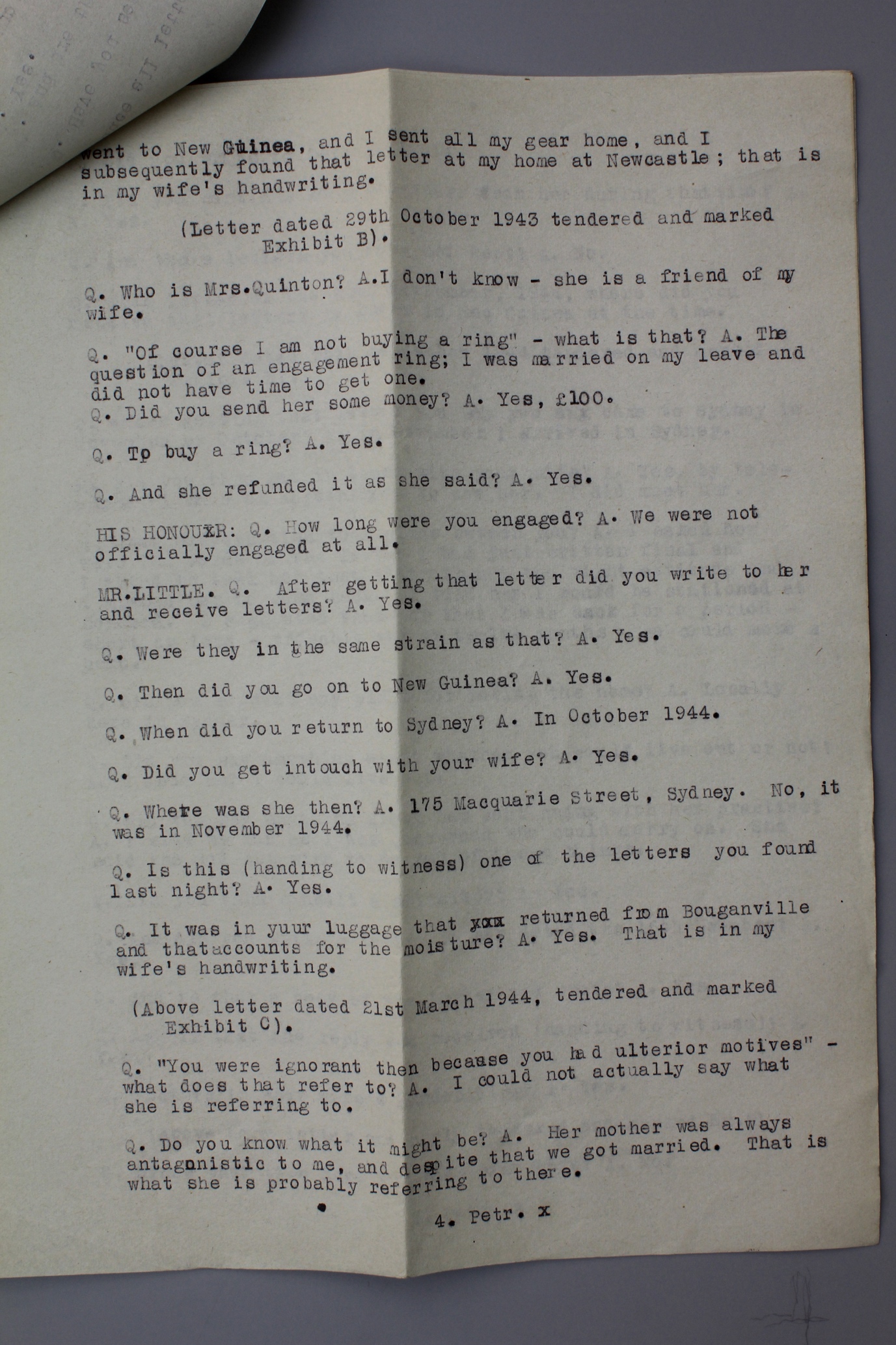
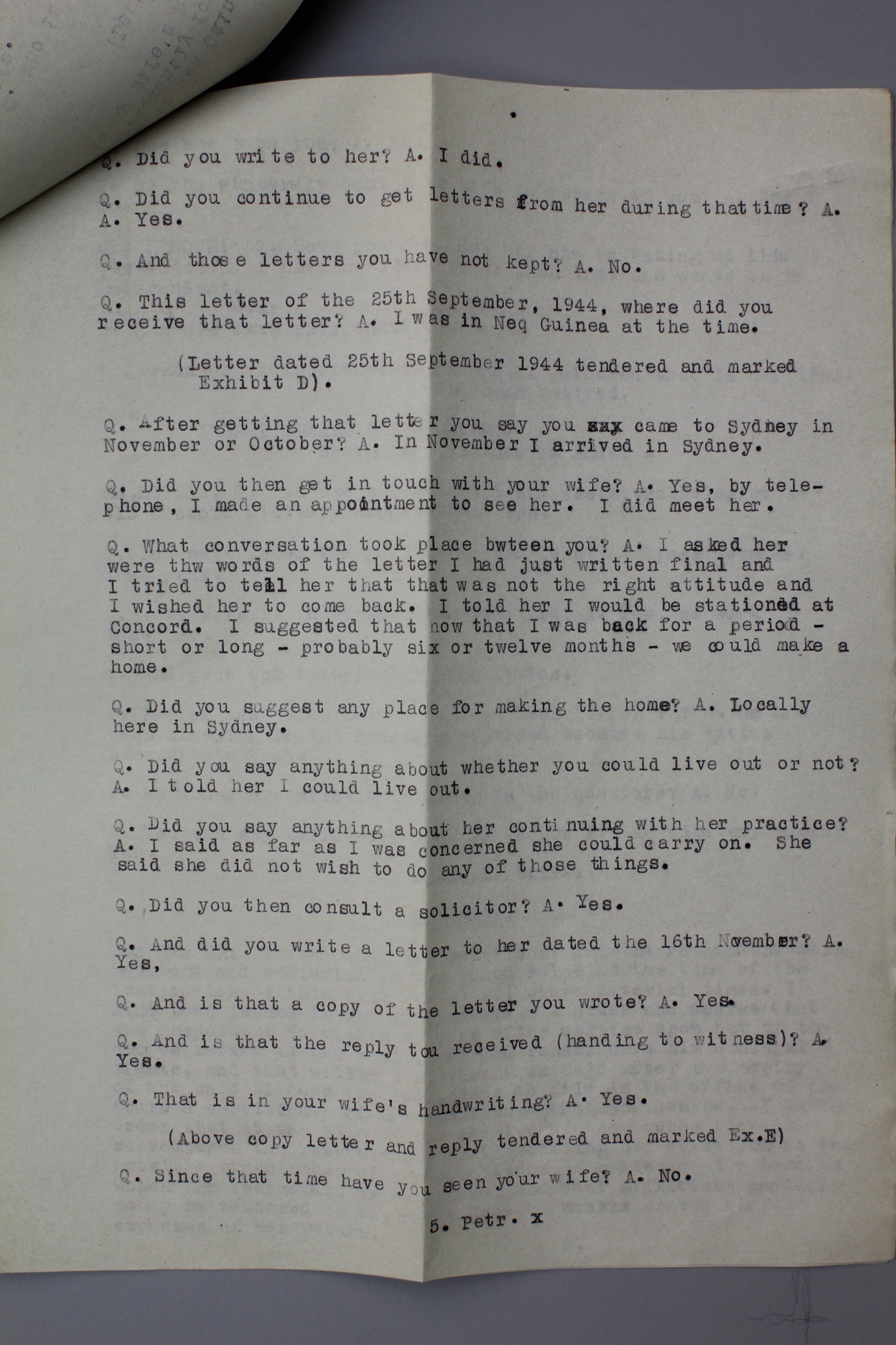
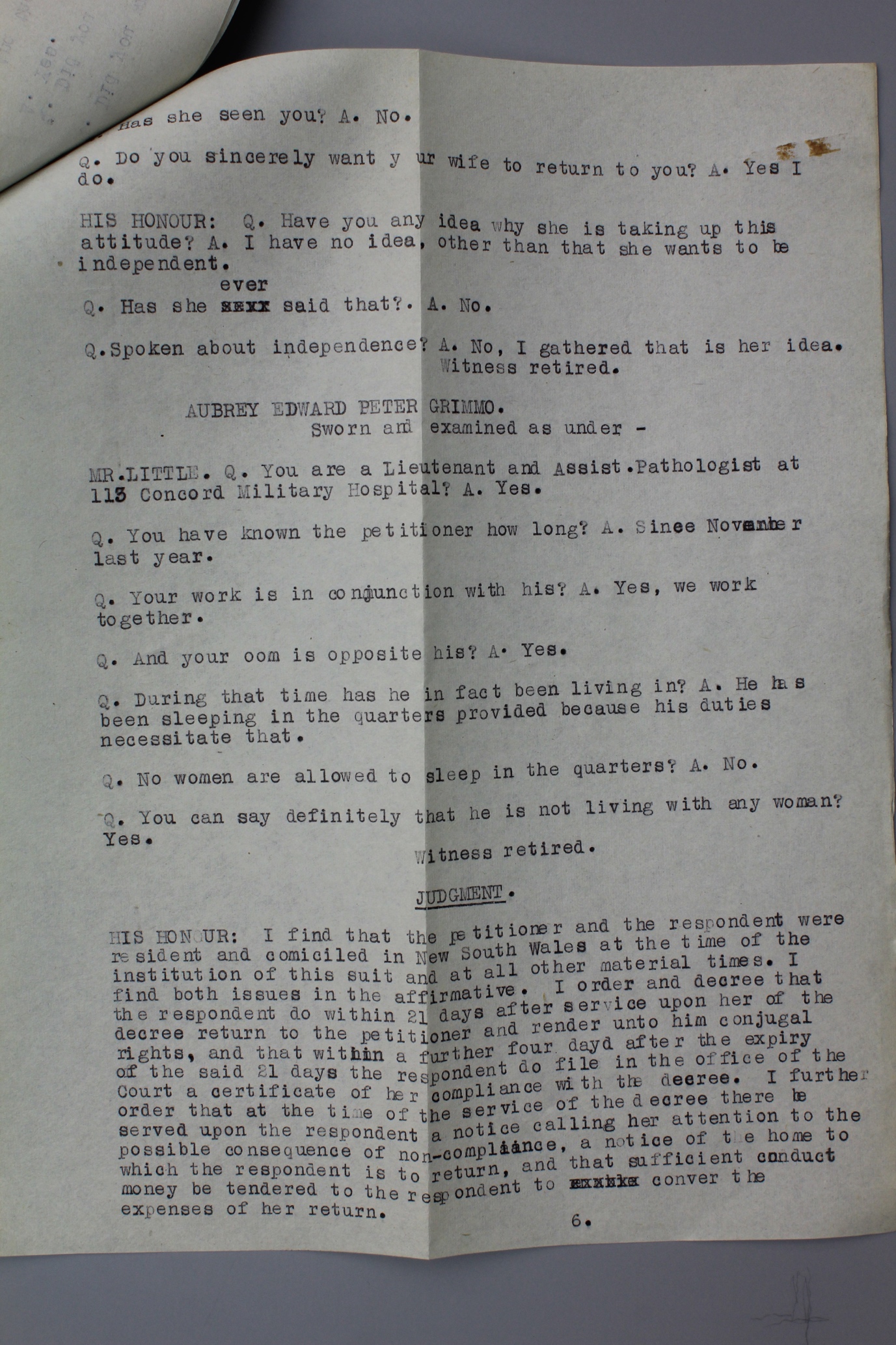 Cross Examination Affidavit of Philip Alan Rundle, 7 March 1945, 6 pages plus cover
Cross Examination Affidavit of Philip Alan Rundle, 7 March 1945, 6 pages plus cover
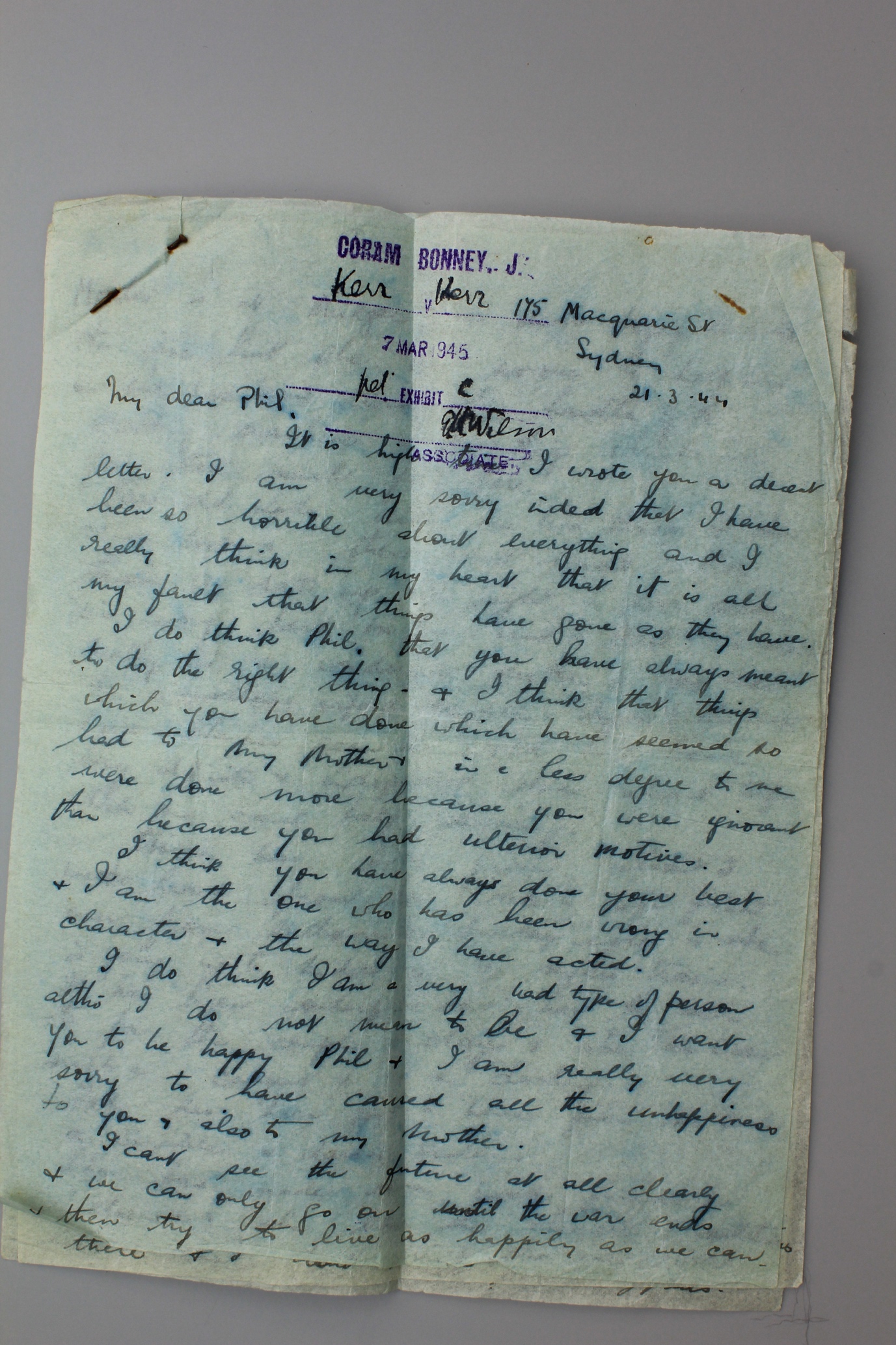
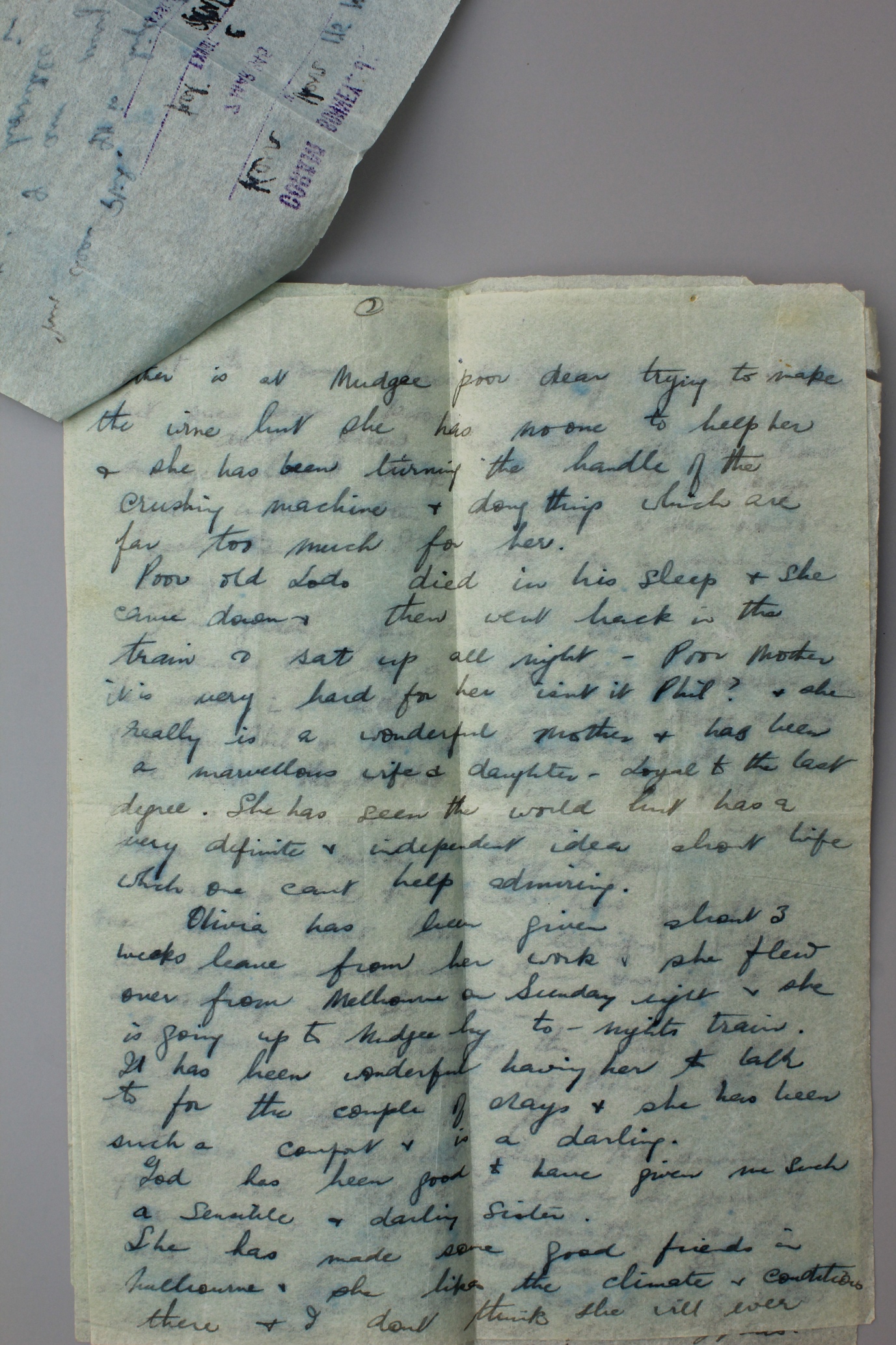
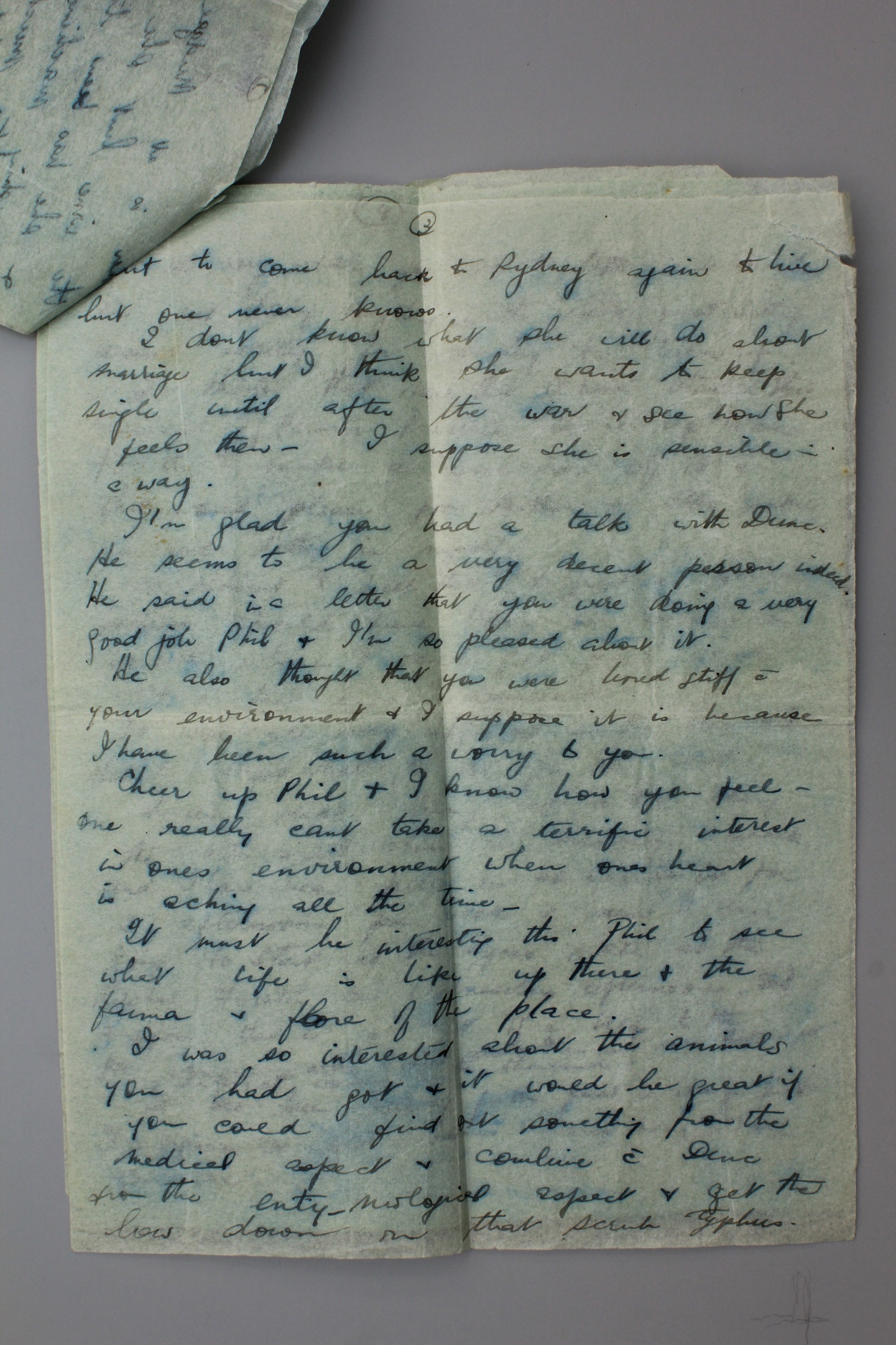
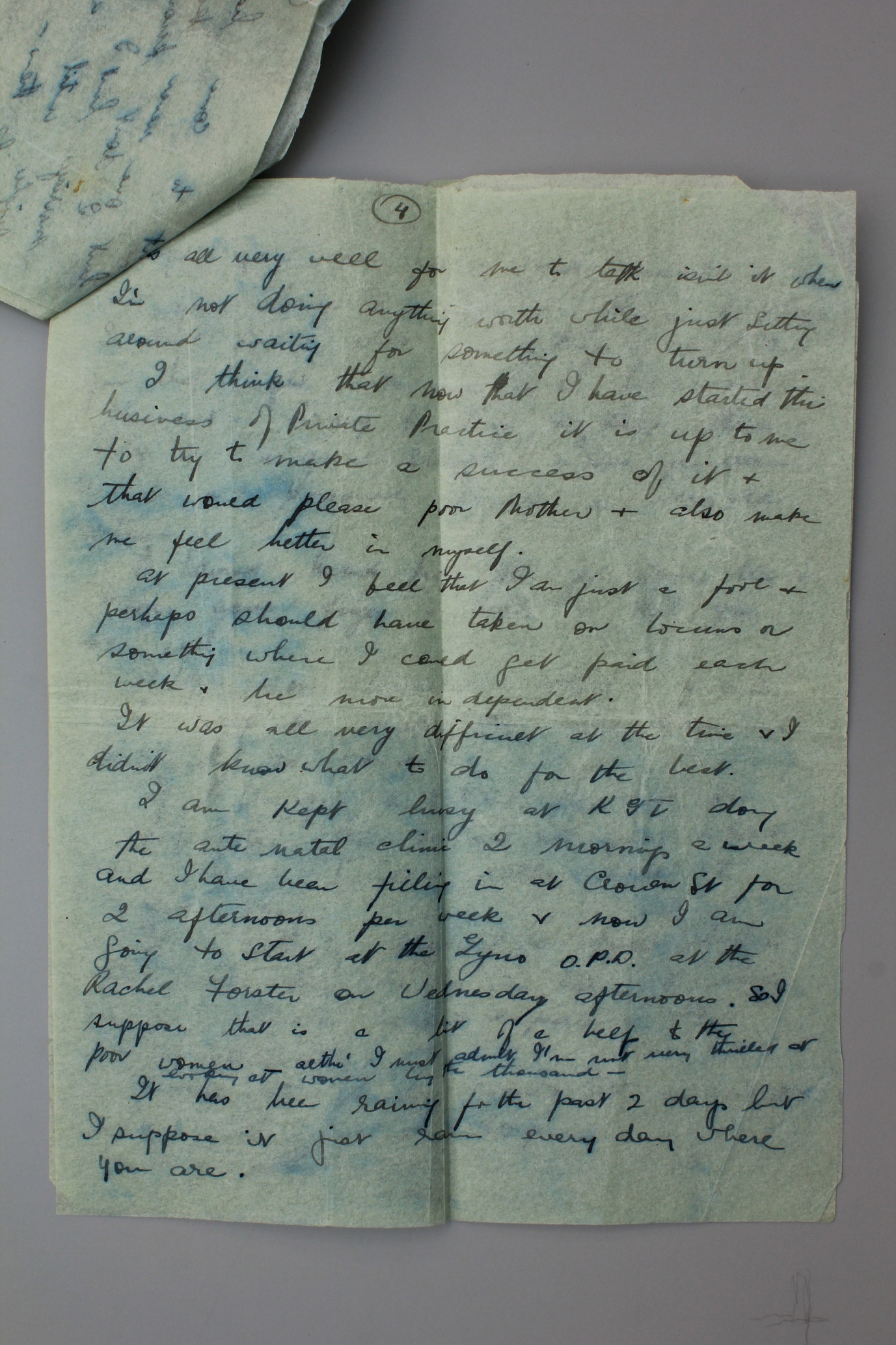
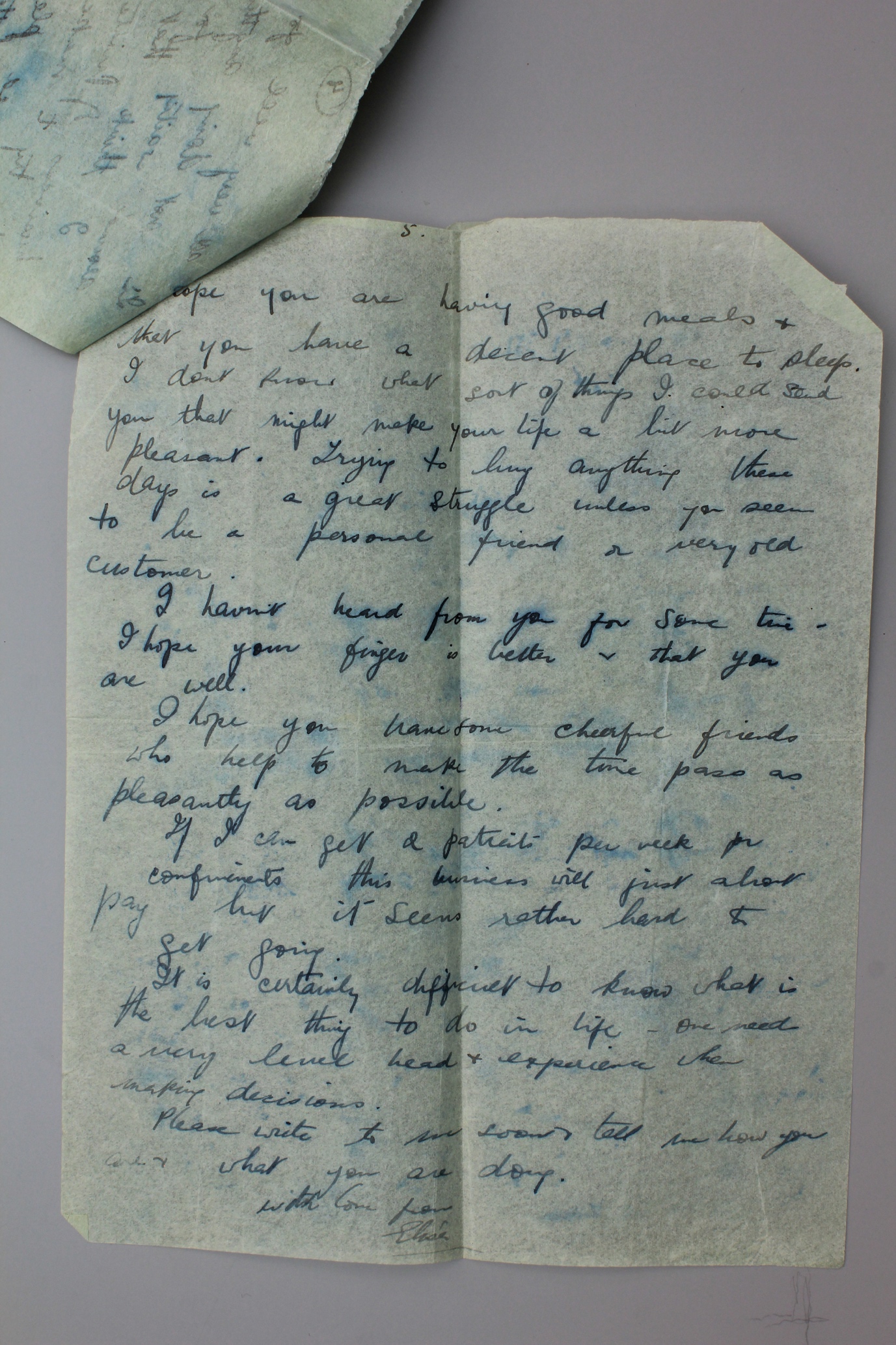
Exhibit ‘C’ letter from Elisa to Philip Rundle in Bougainville, 21 Mar 1944, 5 pages
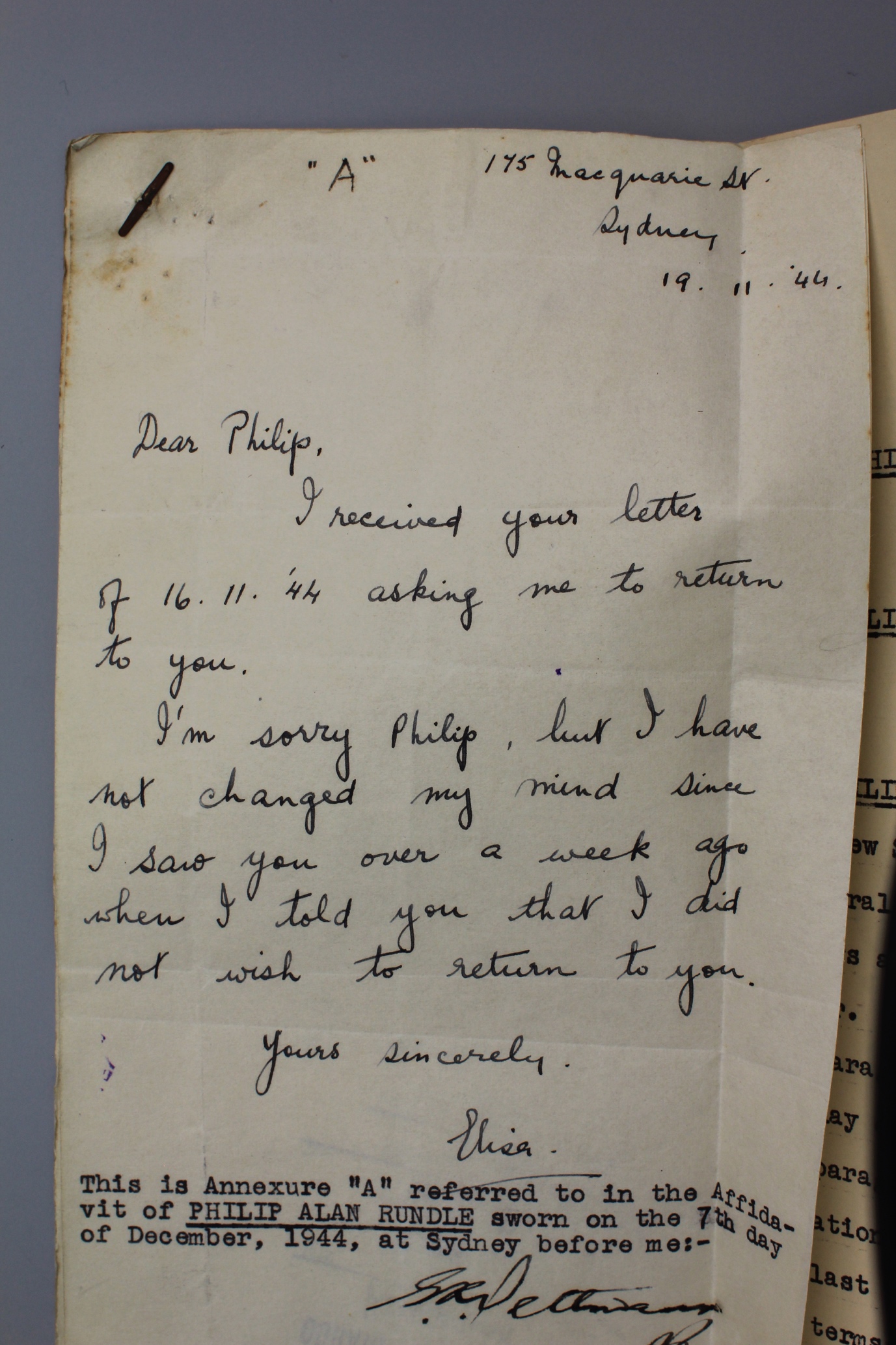
Exhibit ‘A’ Elisa Rundle letter dated 19 November 1944 to Philip Rundle
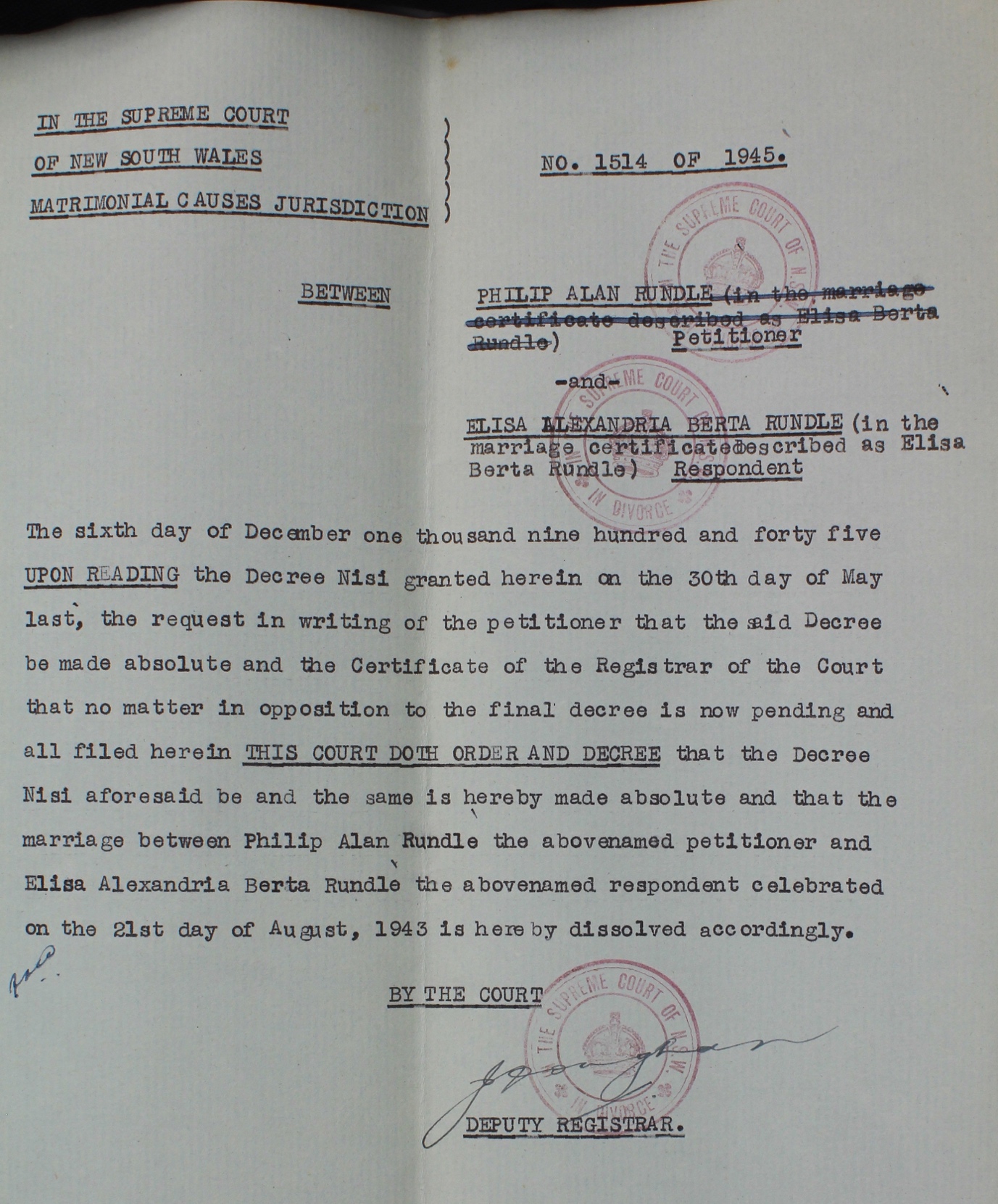
Decree Absolute granted to dissolve the marriage of Philip and Elisa Rundle, 6 December 1945
Elisa Berta Alexandra Fiaschi went on to marry Lynn Vickery, a wealthy grazier and entrepreneur, who had also been previously married. The Vickery’s had two sons before Elisa was again divorced in yet another sensational and very public divorce, after her husband went abroad with another woman. Elisa never remarried.
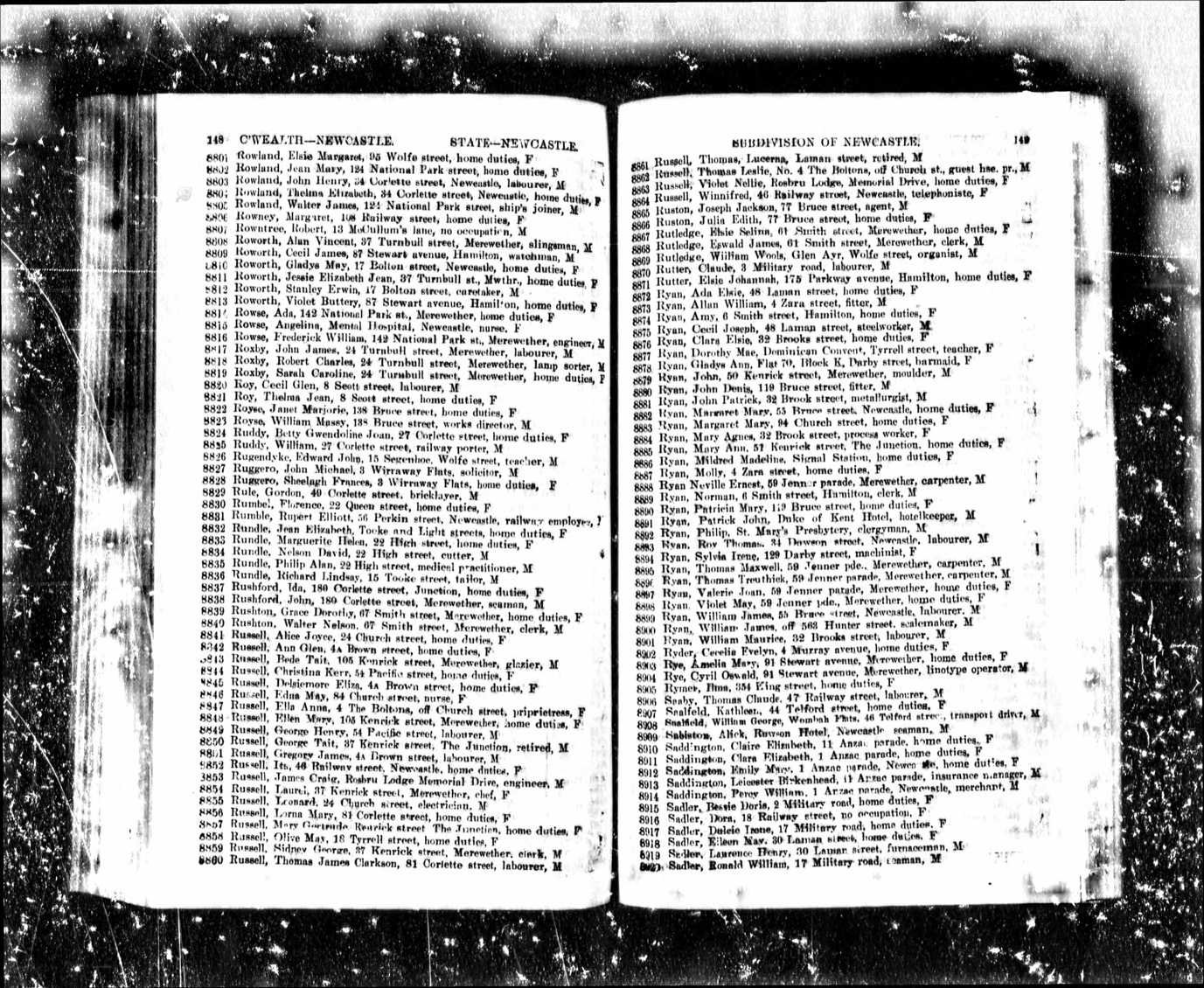
Australian Electoral Roll for Philip Alan Rundle, 22 High Street, Newcastle, 1949
In 1949 I found an Australian Electoral Roll for Philip Rundle who was living at 22 High Street, Newcastle with his brother Nelson Rundle and his wife Marguerite and another brother Lindsay Rundle who was living nearby at 15 Tooke Street. I believe the house was actually divided into two flats, this explains why they are all listed in the same house.
On 18 August 1948 Catherine Ellen Ackers Rundle died, and as mentioned before, in her will, Catherine left the family home to her youngest son Philip Rundle. It is not apparent as to why he was left the family home and I can only think that possibly Catherine may have blamed herself for the breakdown of her son Philip Rundle’s wartime marriage, due to her interference and rudeness and she had wanted to compensate him in some way.
Catherine had also suffered a terrible breakdown in her first marriage to William Moloney and a very ugly and public divorce ensued in the newspapers, which I will deal with in a further chapter, The Lindsay Family of Montrose, Scotland. If she felt guilt and remorse about her son Philip’s first marriage, she actually paid Philip Rundle no favours leaving him the family home, because it may have been the reason why he had no relationships with his brothers and sisters.
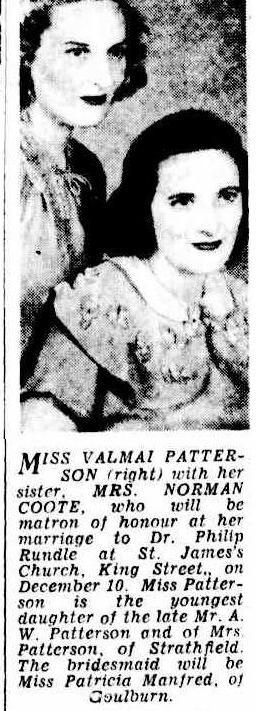
24 November 1949, Sydney Morning Herald
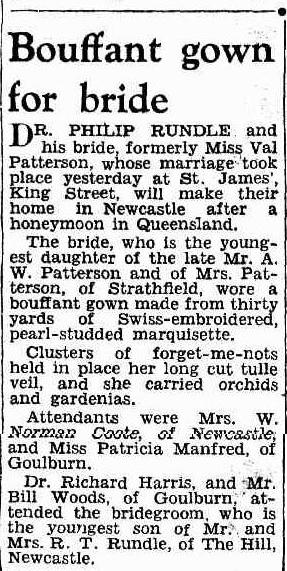
Daily Telegraph, 11 December 1949
As can be seen from the Daily Telegraph, Val Patterson’s sister, Mrs Norman Coote was an attendant. Lorna Margaret Patterson (1916-2006) had married a Newcastle jeweller William Norman Coote (1915-1975) in Burrowa in 1940 and they settled in the Newcastle area. I was privileged to know both Norman and Lorna Coote who were gentle, loving and kind people whose smiles would light up a room. It may well have been through Norman and Lorna that Philip Rundle met Val Patterson on a visit to Newcastle.
Australia Marriage Index, 1788-1949:
| Name: | Lorna Margaret Patterson |
| Spouse Name: | William Norman Coote |
| Marriage Date: | 1940 |
| Marriage Place: | New South Wales |
| Registration Place: | Burrowa, New South Wales |
| Registration Year: | 1940 |
| Registration Number: | 18346 |
I can only describe Philip Alan Rundle and Valmae Lenore Patterson’s marriage in December 1949 as the crashing together of two very damaged personalities. In Philip’s case, his first marriage had left him suspicious and distrustful of women. He also had a high opinion of himself, his achievements, wealth and intelligence, to the point where he lacked empathy with the people around him. I was later to realise that all these descriptors pointed to a psychopathic personality. Philip’s mother, Catherine Rundle’s will, had delivered him wealth and he soon discovered the power of this control, which was something he would never relinquish. In Val’s case, her personality disorder came out of a position of childhood denial and vulnerability, built up after her father, Alfred Walter Patterson, an accountant, committed suicide, following an embezzlement from his office trust account. It left the Patterson family in financial hardship and terrible social embarrassment. Incongruously, it was Val’s need to find a successful family image with financial security and social importance, which may have led to her obsession to be seen as the most important person in the room.
Today this personality type is known more commonly as narcissism and is primarily seen as a destructive force for family unity and happiness. In most cases, it will eventually lead to family dysfunction and breakdown. There is no cure and for many victims, the only way to lead a normal life is to distance yourself from this person or be crushed by their controlling manipulation and emotional blackmail, which is often compounded by lies, deceit and treachery. Val perennially wavered between being absolutely charming and delightful, to unbridled hostility and irrational behaviour. Oddly, Philip Rundle seemed comfortable with Val’s dominating and variable personality and he often encouraged and egged on her bad conduct for his own personal amusement. He simply didn’t care.
Philip Rundle fell out with his brothers and sisters over his mother’s will. This information was told to me, not from Philip, but from his wife, Val Rundle. Philip had inherited the family home in Newcastle from his mother Catherine Rundle after she died in 1948. Val claimed it was met with hostility by his sisters, who, shocked by the will’s contents, took it quite literally to heart. When Philip came to inspect his family home after his inheritance, he found it had been completely emptied by his two sisters Rene and Edith who had left only his bed in the house and had taken everything else.
There was to be no relationship with his Newcastle family from this time, although Peter Rundle did tell us that Philip Rundle had attended his father Nelson Rundle’s funeral in 1969 and that Philip had asked to see and then apparently borrowed the family Bible. Peter said it was not returned. Geoff was surprised, but then explained, that he had never seen the family Bible and wasn’t even aware that there was one. Geoff did say that if he ever found it, he would return it.
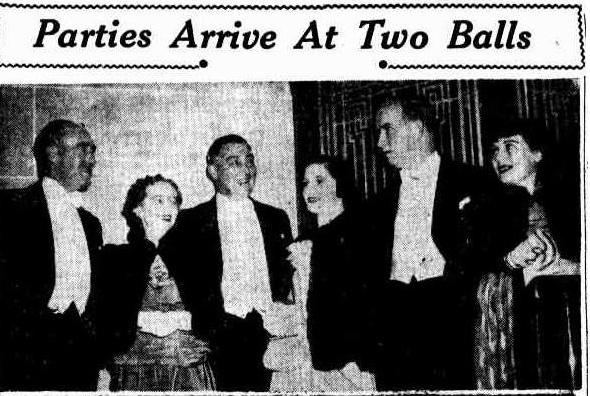

16 June 1950, Newcastle Morning Herald
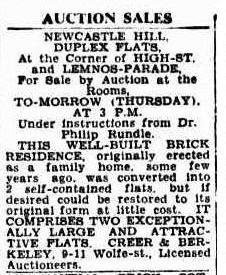
Sale of High Street home, Newcastle, 6 February 1952, Newcastle Morning Herald
Philip Rundle sold the family home he inherited in High Street, Newcastle in 1952, two years after his marriage to Valmae Lenore Patterson. He had earlier purchased a block of land on the high side of Croudace Street, New Lambton Heights, and there he had built a two story home with a large garden, driveway and garage for his new life with his wife Val and their growing family. Val Rundle was thrilled, because their new home was right next door to Norman and Lorna Coote and close to Newcastle General Hospital, a necessity now that Philip Rundle had been appointed Acting Government Medical Officer in 1949. A short time later his position was confirmed and he became an Assistant Government Medical Officer for Newcastle, he would also give his occupation as a Consultant and Specialist Physician.
In February 1951 Philip and Val Rundle welcomed a daughter Philippa Lenore Rundle and in July 1953 Geoffrey Philip Farrell Rundle was born. Norman and Lorna Coote had no children, but they became the doting uncle and aunt to the Rundle’s children. Lorna was famous for her Christmas cakes and to this day my husband Geoff remembers the preparations for the Christmas cakes and puddings, the large pressed porcelain bowl, the wooden spoons, measuring cups and the smell of cooking wafting through the house, all the while he was sitting on a high stool, picking at the dried fruits and unbaked dough.
The arrival of their gardener Arthur, a war veteran, their housekeeper Mrs Chalker and Buster the cocker spaniel completed their household. Arthur kept the driveway and large gardens in order and for this he was given lodgings, clothes and meals, plus a small stipend for his Saturday off, which was normally spent down town in his local pub and no doubt a flutter on the horses. He was a man of simple means and his lodgings were the back of the garage, where he threw an old blind over a rope as a divider. He didn’t enter the house, but came to the back door to collect his meals, calling out as he came up to the house, “Shoes, milk-money.”
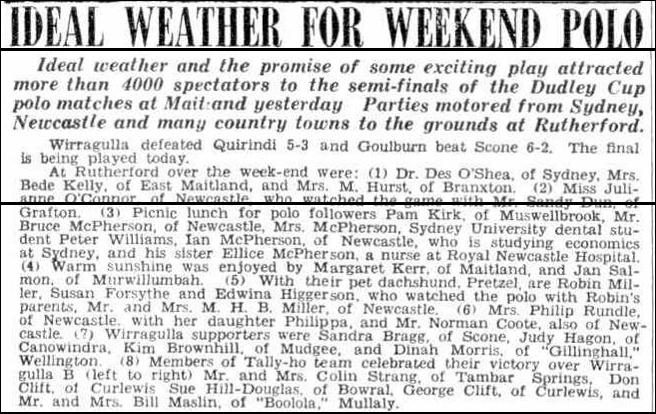
19 July 1954, Newcastle Sun
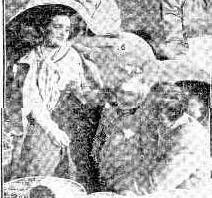
(6) Val Rundle, her daughter Philippa, with Mr Norman Coote, 19 July 1954, Newcastle Sun
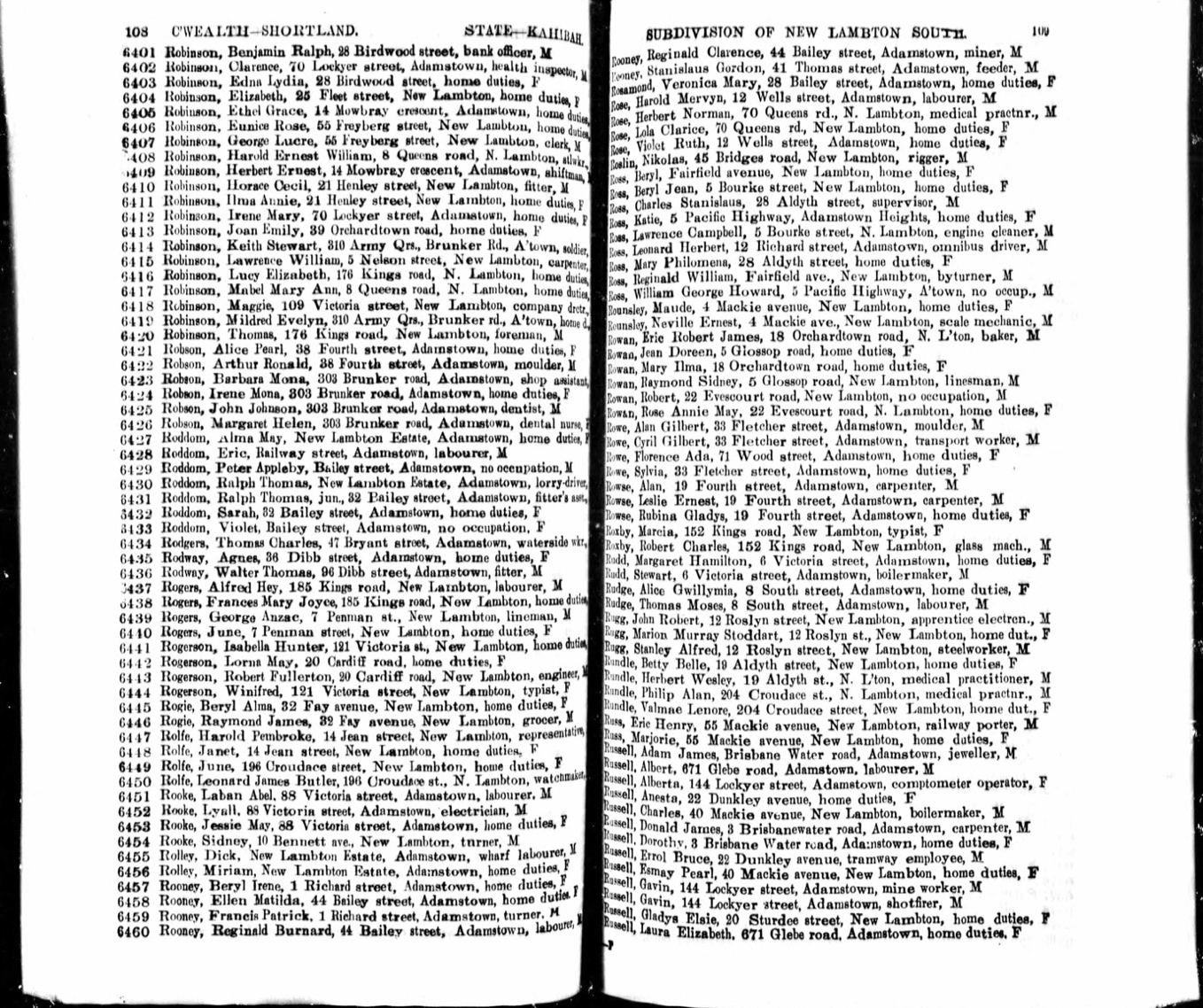
Australian Electoral Roll for Philip and Valmae Rundle 204 Croudace St New Lambton 1954
A chance connection in Croudace Street with neighbours George Bishop, Chairman of B.H.P and Brian Loton, later Chairman of B.H.P. helped to widen Philip and Val Rundle’s sphere of social acquaintances.
Regular family outings to Sydney included a visit to the David Jones Food Hall for their freshly baked biscuits and after purchases at the men’s, women’s and children’s Clothing Departments, they would often visit the David Jones Art Gallery. Sometimes there was a stay over or a visit with Val’s mother Sylvia or brother Bill Patterson and their families. However, it nearly always involved a visit to John Brackenreg’s Artarmon Galleries where Philip and Val indulged their new passion for collecting Australian art, acquiring paintings by newly acclaimed artists in the gallery. Later, they were to become regular visitors to the Bonython Galleries and Rudy Komon Gallery, in Paddington, Terry Clune Galleries, 59 Macleay Street, Potts Point and regular visits to an art gallery at Pymble housed in an A Frame.
At about this time Philip and Val Rundle purchased land and built a beach house at 60 Barnhill Road, Terrigal, the perfect place to spend the summer holidays. Val was extremely pleased to find that Michael and Judy White of Belltrees, Scone purchased 56 Barnhill Road a few years later. Philip and Val Rundle fitted right in to this summer spot, favoured by the farmers and pastoralists of the upper Hunter Valley, as they watched little Philippa and Geoffrey play on the beach with all the other holidaying children. The Terrigal beach house was sold after the family moved to Warrawee in Sydney. The Rundles then purchased a holiday house on Pittwater at Clareville, moving a few years later to the more fashionable Iluka Road at Palm Beach before moving up the hill to a larger land holding in Ralston Road.
Philip Rundle’s interest in art and his shrewd eye for investment, meant that he and Val were soon were regular purchasers of paintings by William Dobell, a reclusive artist of great talent who lived nearby at Wangi, an outer suburb of Newcastle on Lake Macquarie.
Geoff remembers his many visits to Dobell’s studio in the 1960’s and on one particular visit Bill Dobell was putting the finishing touches on a race horse painting, commissioned by the Australian Government, which was to be presented to Her Majesty, Queen Elizabeth II during Her Majesty’s Royal visit to Australia. Geoff pointed out that one of the jockey’s hats was the wrong colour, and quick as a whip, Dobell produced his brush and happily repainted it for Geoff in the right colour. It was one of those moments of sheer magic in a child’s life; never to be forgotten.
Philip and Val Rundle both had ambition and Newcastle quickly became far too small a place for people of their perceived wealth and social prestige. Philip purchased a Physician’s practice in Hengrove Hall, 193 Macquarie Street in Sydney, spending more and more time at his Sydney practice and Val became a successful post-war social climber, procuring the right friends who moved in influential circles. These friendships didn’t always end happily, as matrons vied each other for committee positions on charity balls and gala events and in particular, that important photograph or mention of themselves in Sydney’s Sunday paper society columns.
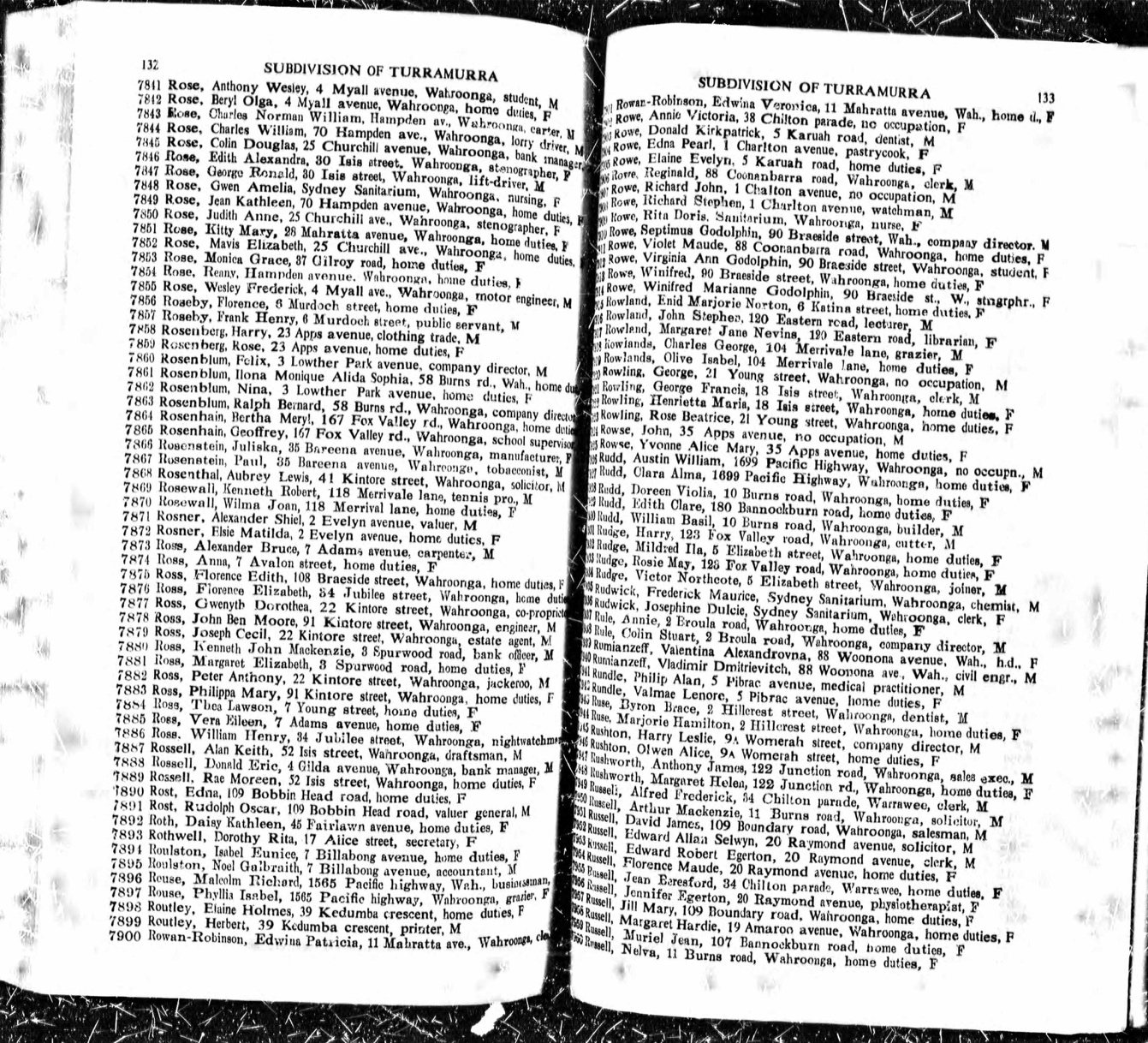
Australian Electoral Roll for Philip and Valmae Rundle, 5 Pibrac Ave, Warrawee, 1962-3
A shocking car accident in 1961 left Philip with a badly broken leg and Val with terrible head and facial injuries; this was another reason the decision was made to move closer to Sydney. Geoff remembered that he didn’t recognise his mother after the accident, so bad was the glass damage to her face after she was catapulted through the car windscreen. This timeframe also coincided with Norman and Lorna Coote’s decision to move to Killara to live in the same unit complex on the Pacific Highway where Lorna and Val’s mother, Sylvia Patterson lived.
The move to Pibrac Avenue, Warrawee on Sydney’s upper north shore meant private schools for their children became another part of life’s necessities, something that simply couldn’t be found in Newcastle, for this up and coming family and their newly found social importance. Philippa, who had earlier been sent to board at Gibb Gate later went to Frensham School at Mittagong and Geoffrey was sent firstly to Knox Preparatory School and then to board at The King’s School at Parramatta. Val joined societies, such as The Red Cross, The Art Gallery Society of New South Wales and The Friends of the Nicholson Museum at Sydney University, where she met other important socialites, who she quickly fell in with, only to fall out with just as quickly, after bitter disagreements. Val famously explained to her Pibrac Avenue neighbours, “Our Warrawee home is just a stepping stone to the eastern suburbs of Sydney!”
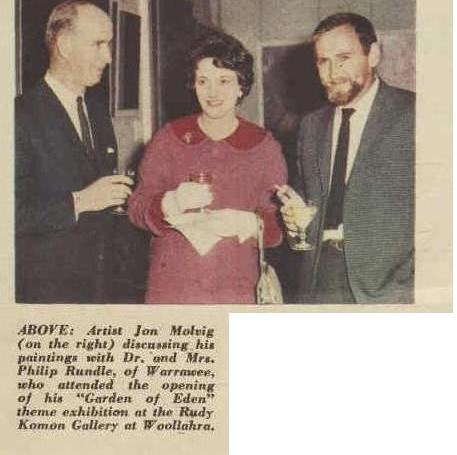
4 June 1962, Australian Women’s Weekly
Geoff was sent to The Kings School, Parramatta, as a boarder at 10 years of age and his parents were more than pleased with his A grade results. Due to the fact that he was a year and more younger than other boys in his class, it was decided that Geoff should repeat Year 6, along with quite a few others. This was an unfortunate decision because the syllabus remained the same and Geoff quickly became bored. He then received a B grade report from the school and his parents were furious with him. Unfortunately, this report arrived on the same weekend that the Rundles had booked seats on the new Sydney to Manly Hydrofoil. This family excursion was promptly cancelled.
Philip Rundle decided to take measures into his own hands, he was to become Geoff’s home tutor. Weekends home from boarding school and school holidays were now spent swotting at his desk with a regime of Latin, Mathematics and Science topping the list of his studies. Geoff’s desk overlooked the garden at Warrawee and he spent a good deal of the time daydreaming out the window looking at other children playing in the street and wishing he could be with them. Some of Geoff’s friends still remind him about this ordeal he went through and that this sort of parental treatment, would be considered a form of mental cruelty today.
Unfortunately for Philip Rundle, Geoff’s B grade reports didn’t improve and he was even more unhappy with his son, of whom he had had such high expectations to follow him into the medical profession. Geoff of course, was loafing, why work hard at school, when he would be forced to work on these same subjects at home? School had become a place of escape, he enjoyed his sport and his friends and he was happy to muck about in the boarding house having fun.
Geoff’s sister Philippa enjoyed her studies and excelled at school, topping her class at Frensham, Mittagong. Philippa was then moved from Frensham and placed at Ascham School, Edgecliff after the headmistress, Miss Merilee Roberts offered to extend her studies. Philip Rundle’s ambitions now transferred to Philippa and Geoff was finally freed from his desk to manage his final two years of secondary school on his own. His marks immediately improved, his attitude changed and he was awarded an excellent matriculation. A chance, but very serious remark by Philip Rundle that perhaps Geoff should consider a vocation in the church absolutely horrified him and before his father could start on this new jag, Geoff made some decisions of his own. He gained an entrance to Sydney University to study Economics and later studied Graduate Law at the University of New South Wales, before becoming a barrister.
Whilst at school, Geoff, an avid reader of newspapers, read a small by-line in the Daily Telegraph to the effect that the Department of Motor Transport were commencing to issue black and white number plates. In those days black and white number plates were a rarity and were passed from generation to generation. His mother applied for a plate and to his father’s great pleasure he was given the N.S.W. numberplate PR.000 which he displayed on his various cars with great pride from then on.
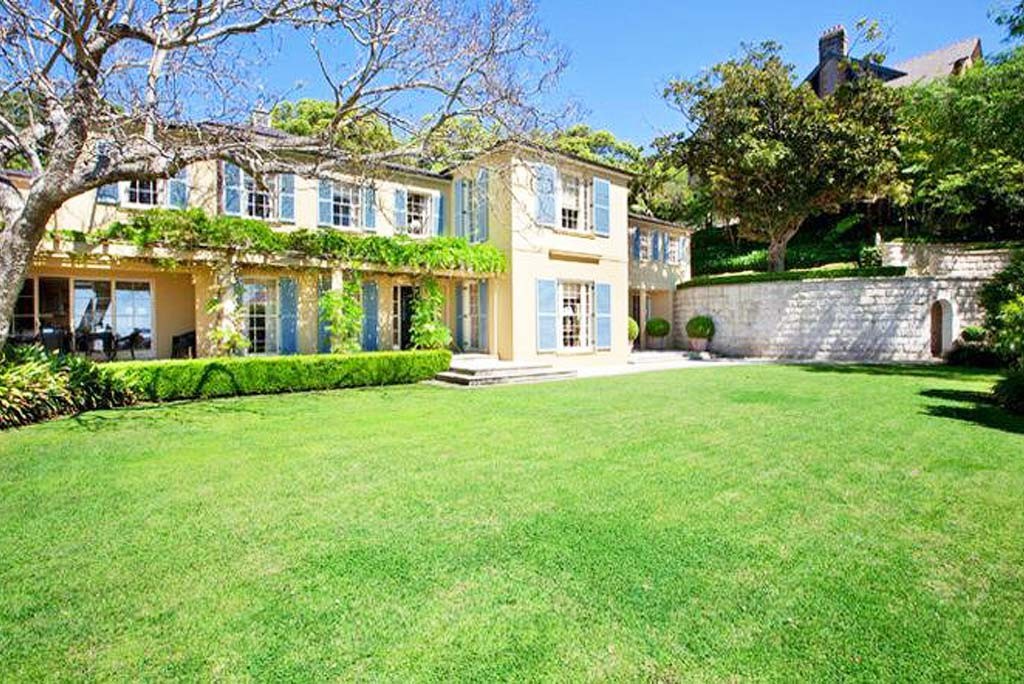
21 Wentworth Street, Point Piper, New South Wales, sold by the Rundle family in 1979 to Mr Richard Wiesener who commissioned Mr Michael Suttor, architect, to undertake additions.
The Eastern Suburbs of Sydney now beckoned Philip and Val Rundle and Point Piper was to become their new address, when they purchased the impressive Leslie Wilkinson designed, No 21 Wentworth Street in 1965. They had earlier looked in Elizabeth Bay, inspecting a run-down grand mansion called Deepdene, which was later demolished. When getting out of the car they walked straight into Frank and Peggy Rundle; this was the first time the brothers had spoken in nearly 30 years and Geoff can remember being introduced to his Uncle Frank. The conversation didn’t last long, but it had cracked the ice of their estrangement in a relaxed and comfortable way.
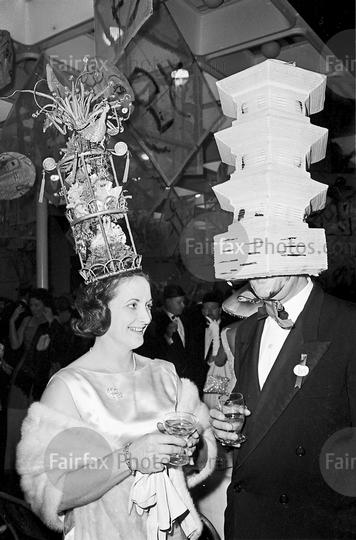
Mrs Philip Rundle with Mr Max Gillies at a Masquerade Ball at the Art Gallery of New South Wales 13 August 1965, Sydney Morning Herald, image courtesy of Fairfax Photos.
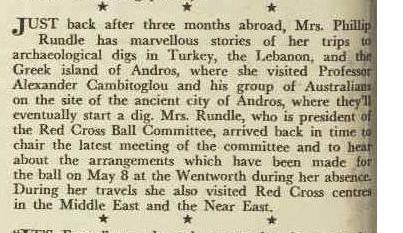
9 April 1969, Australian Women’s Weekly
In the 1960’s Val Rundle established the Red Cross Donated Medical Supplies and then, after dabbling in archaeology lectures as a mature age student at Sydney University, she became enamoured with Greece and the Middle East and Philip and Val Rundle would visit archaeological sites on their yearly overseas trips.
Philip and Val Rundle attended the Sydney Opera House for the opening nights of the Ballet, Opera and Sydney Symphony Orchestra; pre-requisite events for people who needed to be seen at these black-tie events. St Mark’s Church in Darling Point also became their fashionable new place of worship and Philip Rundle always piously bragged about his regular attendance at the 7am Communion Service.
When I first met Geoff in December 1973, he was at Sydney University studying Economics and his spare time seemed to be taken up running errands for his parents. He collected his father from work every evening at 6pm, he drove his mother to the hairdressers and for some obscure reason he drove the laundry run each week to Manly for it to be washed and pressed and then collected last week’s package. I often accompanied him on these trips, just so we could be together. At night Geoff was often chauffeur for his parent’s social engagements.
I remember Philip Rundle as a dour, rude and aloof man, obsessed by a strict no fat diet and in later life, an abstinence from alcohol. He also had affected an appalling mumble, which several of Geoff’s close Palm Beach Surf Club friends found absolutely hilarious. This, coupled with his predilection for calling Geoff ‘Boy’ in front of his friends, earned him star status for their side-splitting impersonations. Several friends still remind Geoff that, after a late night out, they all returned to Geoff’s Palm Beach house only to be lined up to attention by Philip Rundle, balled out, summarily dismissing them, to return to their homes.
Philip Rundle had many acquaintances, but no close friends were ever present in his home. His interests were collecting and acquiring silver, paintings, clocks, furniture and books and investing in the stock market. His regard for his fellow man and his family moderated somewhere between mockery and derision. His smug superiority and satisfaction in his own successes, wealth and trappings did not allow for close relationships with others. When he laughed he laughed alone, for no-one could understand what he had mumbled or why he was laughing.
Val Rundle was not a cook, her idea of food in her kitchen came out of a can or the freezer section of the refrigerator. Philip’s diet was strictly meat and three vegetables. Philip bought a veal nut every Saturday morning from Hannan’s Butchery in Rose Bay and then had it sliced thinly. Val and Philip would then grill two slices of veal for their dinner each night, till it was browned and dry and then served it with tiny taters, carrots and peas out of Edgell tinned cans. Sometimes as a treat, Val would open a can of Italian tomatoes. Other foods came from the freezer, where Val had a large supply of frozen beans and other mixed vegetables. For dessert Philip would have Special K with skim milk or low calorie ice-cream and tinned peaches. Philip would shop and stock and Val would cook. Geoff memorably explained to me that if he wanted a decent meal he would have to cook it himself. When we married, Geoff was by far the better and more experienced cook in the family.
Philip’s only family relationship was a tenuous re-acquaintance with his elder brother, the well-known doctor and Emeritus Professor Francis Felix ‘Frank’ Rundle, after many decades of mutual estrangement. Frank’s two sons Julian and Patrick and wife Peggy were also drawn into this reunion and after Frank’s death in 1993 and Peggy’s in 2004, Julian and Patrick and their wives Jan and Meredith have remained close family friends with my husband Geoff, myself and our children Jeremy and Rowan. Geoff and I enjoyed travelling with Patrick Rundle to New York in June 1993 for the marriage of his brother Julian Francis Rundle to his American wife Jan Kristin Hoffbauer.
Val Rundle was responsible for bringing up her son Geoff with great respect for women and to this day, this is something I am always grateful for. She also encouraged me to aspire to a degree course at university, something I had never considered before. I was extremely lucky to be a recipient of the Whitlam years and the opening of universities, free of fees, is something I benefitted from and have appreciated.
There were, however, Val’s more unfortunate traits, such as the opening of Geoff’s mail, including his university results, which is always something I remember as a shocking intrusion. I also remember with extreme displeasure her ranting, or rather her shrieking when she was at the pinnacle of one of her episodes. There was no ability to reason with Val at this frenzied stage and my attitude to her at these times, I believe, only made things worse. I had come up with a plan for when she ‘popped’, which had actually been suggested to me by my father. I used to put my hand up like a stop sign and calmly asked her to count to ten and think, before she said anything further to me that would be even more damaging. However, rather than having a calming effect, it actually made things a lot worse. Knowing how she hated me saying this to her, I must admit now to pursuing this avenue of heightened aggravation for the perverse sort of pleasure it gave me especially after she had been so horrible to me. Val liked to rule by fear and the fact that her tactics were not working with me, did not help our relationship.
Geoff’s sister Philippa was already engaged to Tim Ashton when I first met Geoff in December 1973 and she was to be married in February 1974. I always remember that Geoff had his bronze medallion for his surf club, scheduled on the day following the wedding and he was concerned about getting from Point Piper to Palm Beach for the early morning test. In those days if the surf was up, the rope and reel beach rescue was always strenuous, exacting and exciting and it was a compulsory part of the surf club examination.
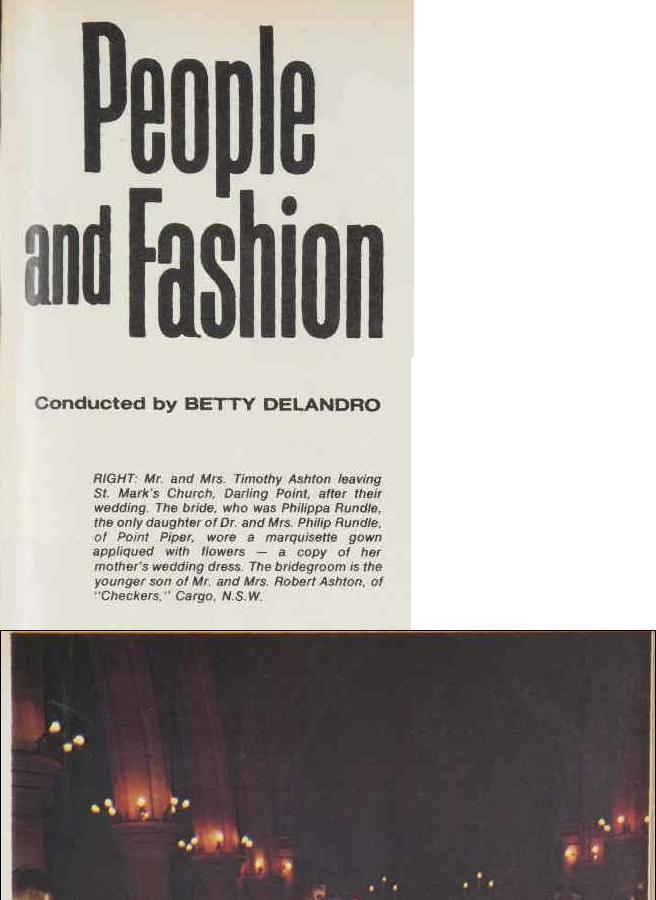
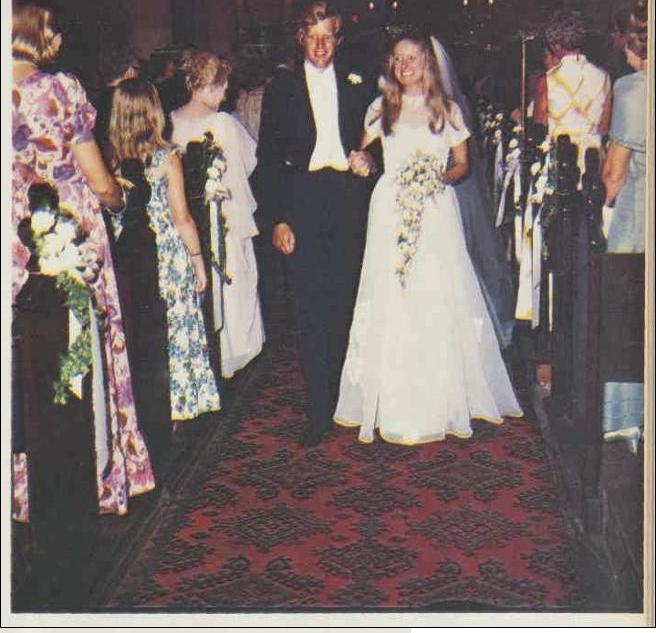
6 March 1974, Australian Women’s Weekly
Timothy Mills Ashton married Philippa Lenore Rundle in February 1974 and they had two children, Josephine Lenore (1977-) and Michael Timothy (1980-) and divorced in 1982. Philippa married again to divorcee Alistair Harvey Sutton in 1989 and they had no issue.
After Geoff and I started going out together we discovered that our parents already knew each other. My mother always remembered their first parent’s meeting, after we had started going out in December 1973. Mum was intrigued by Val’s bragging regarding her daughter Philippa’s engagement to Tim Ashton, when Val memorably commented to my mother, “It is not every day that your daughter can marry an Ashton!”, it was something mum and dad found most amusing. Tim’s father, Bob Ashton, a grazier, from Checkers, Cargo, New South Wales, was a famous polo player, playing in a team of four Ashton brothers, who toured the world in the 1930’s, from England to Argentina, mixing with Princes, playboys and tycoons. In February 1974 Geoff’s sister Philippa Lenore Rundle married Timothy Mills Ashton at St Mark’s Church, Darling Point.
After Geoff’s and my engagement in September 1978 a debacle occurred over the sculptures of Romulus and Remus, Geoff’s two golden cocker spaniels, who had been sculpted in clay and then cast in bronze by Clare Pitman, after Val Rundle had commissioned her friend Clare. Apparently the cost of bronzing the dogs in Italy proved to be too costly for Philip Rundle to pay and a dreadful fuss ensued about the price. I was most interested in this development, having been the one who constantly visited Clare Pitman in her Wentworth Road, Vaucluse home to deliver the two dogs for their many sittings.
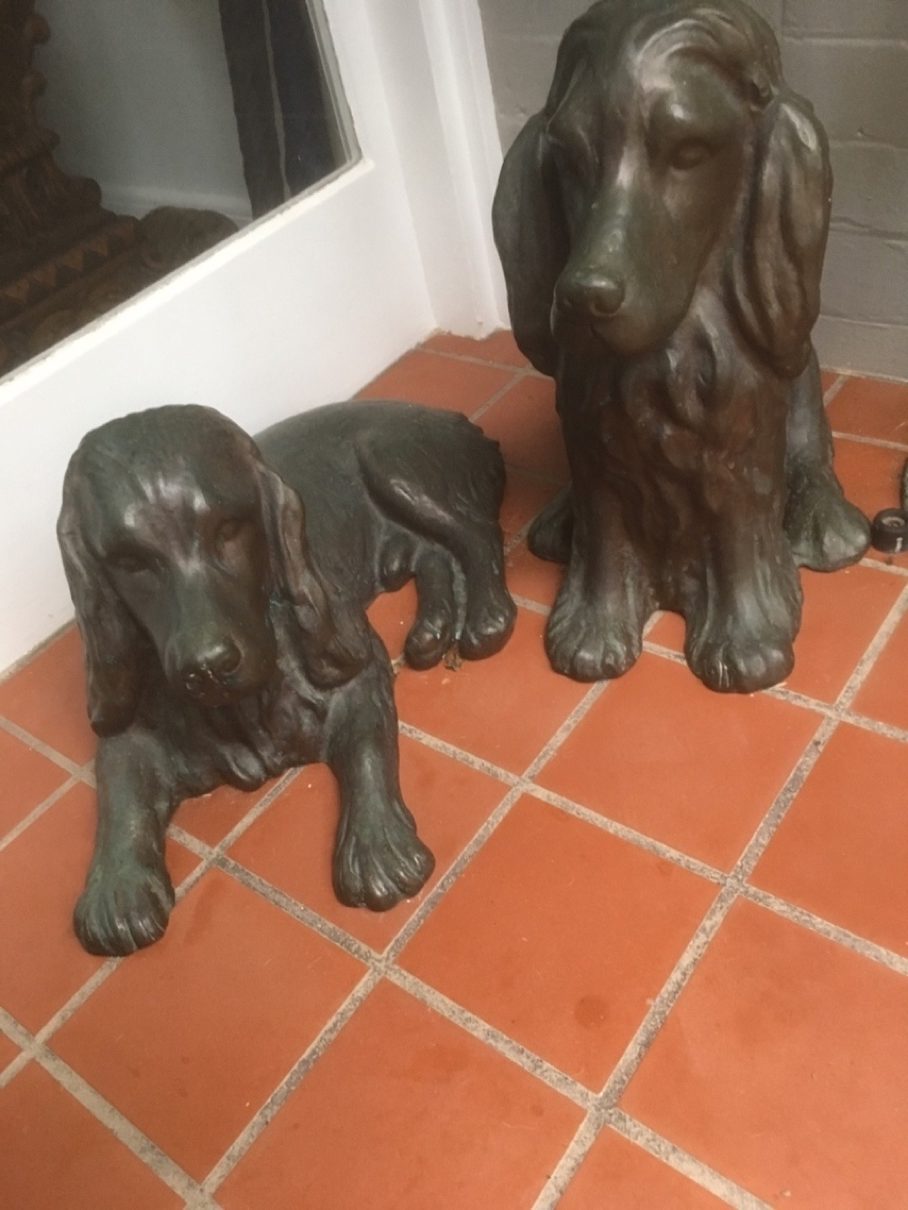
Romulus and Remus by Clare Pitman. Photo taken by Geoff Rundle, October 2018
I enjoyed this time with Clare in her lovely home overlooking Sydney Harbour. She was such a kind and interesting person and she would sit me down with a cup of tea whilst she worked away with the near life-size clay modelling of the dogs, pinching bits off the clay here and there, deftly with her fingers and thumbs, just to get the perfect pose. Upon arrival she would lift the heavy calico covers off the dogs, which kept the clay moist and then she would perch on a stool in front of me. I was intrigued by her ability to create their likeness out of the red clay. Clare had an interesting life and her sculptures were often exhibited at the Mavis Chapman Gallery in Bay Street, Double Bay. Knowing that I was to be married soon, she very generously asked me to choose something from her home and I chose a lovely blue Delft ware plate from her collection. I kidded with her that I would really have loved the sculptures of Romulus and Remus and that I would insist that Philip Rundle gift them to me as a wedding present. That might settle the problem I told her, as we laughed! A few years passed before the bronze spaniel sculptures of Clare Pitman’s finally appeared in Philip and Val’s home, however, I never bothered asking how the difference had been resolved, but suspect that Clare probably came out a loser on the deal.
I think 1978 had been quite a chaotic time in Philip and Val Rundle’s lives, they had been house-hunting and Val had found a pretty waterfront home Rockleigh, at 120 Wolseley Road, Point Piper they also had plans for a trip to the Middle East and London. Philip Rundle arranged for Geoff and his solicitor Barry Shields to bid on the house, but unfortunately Philip failed to alert his bank manager about this possible purchase. A Power of Attorney Deed had been signed by Philip Rundle and Geoff and Barry attended the auction. Geoff made one bid and the house was sold to him under the hammer. Then came the headache, there was no availability of money in Philip Rundle’s accounts and for several days it seemed that the deal would fall through. My father even offered at the time to pay the deposit because he could see how distressed Geoff was by his father’s failure to take the purchase genuinely.
Philip Rundle never seriously intended to purchase Rockleigh at 120 Wolseley Road, he was just placating his wife’s flight of fancy and her need for a more prestigious home in Point Piper. He had also sought advice earlier that same year and transferred his Wentworth Street, Point Piper home from the family company, taking advantage of a legislative change that meant he would not have to pay stamp duty. With the purchase of Rockleigh, Point Piper, Philip Rundle then had to sell No 21, Wentworth Street, Point Piper home and because it fell within the same year, he became liable for Capital Gains Tax. Unbelievably, although Geoff clearly over the years made his parents many millions by purchasing 120 Wolseley Road, his mother, right to the end of her life blamed Geoff for his father Philip, becoming liable for the stamp duty and she would always bitterly say “You cost your father a lot of money, when you bought that house.” [1] Just to protect Geoff, Barry Shields kindly wrote and signed a statutory declaration about the purchase of 120 Wolseley Road, there for the deniers who claimed later that Geoff had played no part in the purchase or the resulting financial gain and to prove he was acting under his father’s instructions. Geoff still has this document.
A few weeks before my marriage to Geoff in 1979, my father sat us both down in the sun room of the family home, Routala at Point Piper, asking us if we would like to elope and amusingly offered to hold the ladder up for Geoff outside my bedroom window. It was one of those moments when you can always remember where you were when something significant happens. Dad suggested we go on a European honeymoon, in lieu of a wedding reception. It was very tempting, and mum and dad were actually very serious about this offer. However, I wanted to be a bride and have a ‘white wedding’ at St Marks Church, Darling Point where my parents had been married and where I had been christened. I was 22 years old, probably a bit naïve, but also very romantically inclined. I was always confident when making my own decisions in life, even at that young age.

Reg Robson’s Diary, 1979
The next few pages show continuing excerpts from my father Reg Robson’s diary, which illustrate the difficulties he and my mother experienced in 1979, during a time that should have been some of the happiest in our lives.

Reg Robson’s Diary, 1979
My father had never known such behaviour or the bad manners shown by Philip and Val Rundle in all his life and he now understood me, when earlier I had told him that no-one had ever spoken to, or treated me like this before. I think this is why Dad wrote about our wedding. He was most concerned about me marrying into this family.
Val’s need to control and be in charge had taken her to a dark place. Val was consumed with jealousy after Geoff had bought me a posy of flowers a few days before our wedding and she had complained to Geoff that she should have been the one getting the flowers.

Reg Robson’s Diary, 1979
Dad records in his diary about Val’s hurtful outburst the day before our wedding, but what he didn’t write about was how kind he was to Geoff and me after that traumatic experience. Still today, when reminded, I can still hear Val’s scream from the staircase landing of her home at Wolseley Road, “What is that woman doing in my house?”, echoing in my mind.
It is so lovely that he wrote about me as the Duchess; he gave me this nickname as a child because I would lie my bed with a tea tray and a good book and he used to pretend to be my butler, asking me in a Pommy voice “Is there anything else you require, your Grace?” Then we would both burst into laughter; oh how I loved my dad’s witty sense of humour. He loved that I always got it and I would always tease him back about something. He also taught me how to laugh at myself, “If you are going to make fun of people, you have to be ready to laugh when they make fun of you! That is the sign of a true sense of humour.”

Reg Robson’s Diary, 1979
Geoff took me home after his mother’s outburst on our wedding eve and shock turned to tears when I saw my father in the dining room. I headed upstairs and had a bit of a weep on my bed. A short time later dad appeared in my room and asked me if I still wanted to go ahead with the wedding? I assured him I did, and then he told me that there was a very unhappy bridegroom downstairs fretting for me and that he needed cheering up too. Dad then gave Geoff $50 and told us to go and have dinner. Knowing that my parents were hosting drinks any minute to welcome interstate wedding guests and Geoff’s parents, we laughed about our absence as we escaped through the back door. I didn’t think Val would have had the nerve to turn up, but my father assured me that she would, and she did, all sugary sweet with smiles, and true to dad’s prediction, “Butter wouldn’t melt in her mouth”.
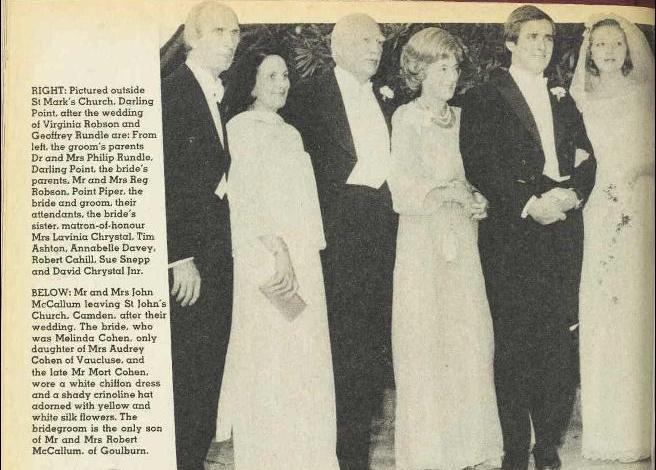
14 March 1979, Australian Women’s Weekly
Geoffrey Philip Farrell Rundle (1953-) married Virginia Irene Robson (1956-) on 23 February 1979 and they had two sons, Jeremy Rundle (1983-) and Rowan Rundle (1985-)
At our wedding I was determined to avoid all contact with Geoff’s mother and I didn’t even notice when Philippa, Geoff’s sister, turned up in her wedding dress, which apparently brought much comment and amusement to other guests. Added to that, several of my father’s maiden aunts and cousins also made for hilarious commentary after they arrived in pre-war outfits teamed with exotic and colourful ostrich feather hats.
At the reception, it was impossible to avoid Val after she bombed the conversation I was having with my grandmother, Lavinia Fuller. I had no choice but to say firmly “Hello Mrs Rundle,” and with that Val sweetly replied with her best manners, “Well, we are both Mrs Rundle now, so what would you like to call me?” and I replied back to her, “I can think of plenty of things I would like to call you, but you wouldn’t like any of them!” I then walked away, leaving two rather stunned women to part company. I can’t believe I said that in front of my grandmother, but it made me feel so much better.
During the reception I can recall one other funny thing when my Uncle John Fuller, who was M.C. for the evening, asked for Philip Rundle to come forward to the microphone, as he had requested to say Grace, and this he did in Latin. My Uncle John Fuller was a most amusing man, and he explained, “For those of you who don’t understand Latin, that meant, thank God, Reg Robson is paying for this wedding!” I could just have given him the biggest bear hug, because the laughter in the room was uproarious. Later in the evening as the band played, on several occasions, my father raised his hand toward them and they immediately switched to play Frank Sinatra’s I Did It My Way, and I knew for sure, Dad was happy. My father died in June 1980, after a very short illness and it was a great shock to our family.
I took ages to put my wedding album together and I can remember taking my album to show Geoff’s parents, shortly after my father’s death. Val flipped over the pages, without looking at them, and when I stopped her and asked her what on earth she was doing, she replied that she was looking for photographs of herself and was disappointed to find ones of herself so far back in the album. Unbelievably, things were about to get worse. It was a fine Sunday morning and Geoff and I were going to lunch with my mother and grandmother, so I then took the photo album to show them, mum was busy in the kitchen and not really interested, so I sat Gran down and showed her, and she started asking me “Who is that man standing next to Vena?” (Vena being my mother). That man was my father, who my grandmother had always adored. I then realised that to cope with dad’s death, Gran had actually blocked Reg’s memory out of her mind. I then went and spoke to mum about it, and mum, for the first time since dad’s death cried in my arms, letting go the grief of dad and telling me she now had to cope with Gran’s mental breakdown. I didn’t open my wedding album again for years and even to this day if I look at that book, all I remember is the anguish of that day.
Philip and Val Rundle’s quest to reach the top of Sydney’s high society was not without its bumps in the road. Val Rundle was never invited to join the leading charities of Sydney; these were dominated by society queens, who probably blocked her obvious social climbing and her lack of eastern suburbs credentials. I imagine, in many cases, her reputation for changing friends and difficulties in maintaining relationships, had preceded her.
My boss, the editor and art connoisseur, Mervyn Horton of ART and Australia Magazine had preconceived ideas about my employment at the magazine in August 1980. Mervyn had opposed my employment to the magazine publisher, Sam Ure Smith. Mervyn was over-ruled by Sam in one of their regular squabbles and that was my lucky day to be employed at this wonderful publishing company, run from Sam’s Gordon home office above his garage. Sam’s father, the famous Sydney artist Sydney Ure Smith had previously published Art in Australia and the family was well known in Sydney’s art circles. A trip to Melbourne with Mervyn Horton to view exhibitions and interview gallery owners resulted in Mervyn pulling his rental car over to the side of the road and apologising to me kerbside, for his making such a bad value judgement about my employment with ART and Australia, all because of his soured relationship with my mother-in-law! For those who knew Mervyn Horton, they will understand when he gave me absolutely no apologies for his opinion of “That dreadful woman who ruined the Art Gallery Ball by her interference and malicious behaviour”. I simply laughed, understood and accepted his adorable apology and became his friend. My co-worker and dear friend Anna Bosman, Editorial Assistant to Mervyn Horton was intrigued and most amused by this incident and we often laughed about it.
When Mervyn Horton died in 1983, I was heavily pregnant with my first son, Jeremy and had intended to ‘retire’ the previous December. However, a call from Sam Ure Smith changed my plans when he asked me to stay on at work and support the magazine through Mervyn’s illness. Mervyn was a marvel, right to the end and organised his funeral, even picking out the hymns and deciding who could and should attend, all this done from his Potts Point home. I attended his funeral at St Lawrence’s Church, Sydney on my wedding anniversary, 23 February 1983.
Tim and Philippa Ashton’s marriage had ended in a separation in 1981 and was followed by a bitter and acrimonious divorce. It was very sad time for our family and it changed some family member’s personalities and relationships forever. Philippa and her children moved into her parent’s home after a short rental proved too costly. I always remember the kindness Geoff showed by painting his sister’s bedroom, because he didn’t want to his sister to move into an un-renovated area of her parent’s home, a gesture for which he was never even thanked by her.
Philip and Val Rundle’s behaviour during this period was quite irrational. I was actually forbidden to speak with Tim Ashton and his mother Jane Ashton. I was later accused of leaking information about the divorce case, which was quite wrong and very hurtful. It was a rotten time for everyone, made worse by the heightened emotional hatred between these two families. The worst part for us was that Philip Rundle was continuously phoning Geoff about the court case, asking his opinions on the proceedings and then totally ignoring his suggestions. They were basically, for Philip to keep out of things, because he was extending what was becoming a lengthy divorce, only benefitting the lawyer’s wallets and I worried about the children emotionally, because of the constant and very open bickering between the parents.
In 1982, Philip Rundle’s portrait by Jocelyn Maughan was selected as a finalist award in the Archibald Prize and was hung at the Art Gallery of New South Wales. Philip and Val Rundle were very excited by all this prestige and importance and I can imagine Jocelyn must have been thrilled by the honour accorded to her as an artist. Geoff and I attended the opening. It was always quizzical to me that this painting was never purchased by Philip Rundle to hang in their art collection at their home in Point Piper, alongside Val’s portrait by Judy Cassab. I made several enquiries to that effect, only to be stymied by Philip’s stony silence. It would appear that there had been a falling out over the price and Dr Rundle had decided not to pay the artist for her work and she then kept the painting or destroyed it.
Philip Rundle very publically promised, on several occasions, to buy his son Geoff his barrister’s chambers when the time came and my mother never forgot this; she waited, as did Geoff for this offer to come to fruition and it never happened. It was typically, a false promise. It was also disappointing to witness Geoff’s parents attitude to us when we bought our home in Double Bay in 1985. We took them for a pre-settlement visit to proudly show them our new home and to my horror Philip and Val Rundle looked at us and said, “Don’t expect us to help you with this purchase.” It was so unnecessary and so very churlish. The fact that we had been helped in a small way to fund the deposit, by way of a loan, on our first home at North Sydney was obviously high in their minds.
It is a fact that Philip and Val Rundle never helped Geoff financially, except for one loan of sixteen thousand dollars on our first home. That amount, ironically and unbelievably, remained on the family company ledger books, to be repaid nearly forty years later by Geoff, after his mother’s death in 2016.
In 1989 Philippa married an older man, Alistair Harvey Sutton, who had been married very briefly before. Geoff and I did not meet this man prior to the engagement announcement. Alistair and Philippa chose St Mark’s Church, Darling Point for their marriage, which was decidedly incongruous, because Philippa had married Tim Ashton in this same church. After saying her vows with one husband, I found it extraordinary that she could repeat them again under the same roof to another. I felt it made a mockery of her marriage vows, her first marriage and also to other people who had been married in this lovely Church. I couldn’t help thinking that Philip Rundle had a part in this farce. I can remember sitting in St Mark’s Church and maybe it was because I had attended both marriages, that suddenly, I had an urge to run out of the church, to get a breath of fresh air, confused that these supposedly church going, pious people, could do this sort of thing.
Philippa then went and lived in Rosemont Avenue, Woollahra, in her mother’s apartment, with her new husband and her children by her first marriage.
Val continued to fracture friendships and on several occasions dumped friends would call me, looking for a sympathetic ear, asking what they could have possibly done to have been eschewed by Val Rundle. I used to comically tell them to simply join the conga-line, which started with me! I was always there for these women and I particularly remember three very heartbreaking phone calls from Clare Pitman, Katie Jacobs and Joan Muston.
During the early 1980’s Val became involved in Egyptian archaeology and both Philip and Val Rundle became close friends with Dr Naguib Kanawati from Macquarie University.
“In 1981, through the initiatives of Dr Val Rundle, the university established the Rundle Foundation for Egyptian Archaeology to cater for the interests of the general public in Egyptology and to raise necessary funds through its Activities Committee for the support of research in Egyptology.”
The Rundle Foundation for Egyptian Archaeology Newsletter No 87, January 2004
These endeavours earned Val Rundle an Honorary Doctorate in Letters from Macquarie University. Overnight Val changed her name and became known as Dr. Valmae Rundle and at one stage, rather bizarrely, her name was even listed as a medical doctor in Sydney’s Yellow Pages, much to the shock of Geoff’s first cousin, Dr. Patrick Rundle, an ear nose and throat surgeon, who was horrified by this inclusion. However, his wife Meredith and I were thoroughly amused with the idea that we had a medical imposter in the family.

Yellow Pages Directory 2000, Rundle, P & V Drs 120 Wolseley Road, Pt Ppr
Philip and Val Rundle hosted our son, Jeremy Rundle’s Christening Reception in September 1983. Geoff and I were hesitant to let loose several toddlers at Rockleigh with so many ornaments and bric a brac everywhere. Val had created a museum in her cliff side house on Wolseley Road and objects and ancient artifacts crowded the house. Chaos reigned the day and soon enough my brother-in-law, David Chrystal came forward to announce a ‘toddler breakage’. Geoff was wonderful, he took the Apulian Vase which had snapped clean off at the base, balanced it carefully back on the table, and said “Don’t worry, it won’t be discovered for ages and when it is, mum will simply blame the cleaner!”
On 10 December 1989 Geoff and I, together with Alistair and Philippa hosted a 40th Wedding Anniversary Party for Philip and Val Rundle, at our home at 28 Wallaroy Road, Double Bay. We invited a large amount of people of all ages and filled the house with ruby balloons and served pink champagne for the occasion. Again, I was baffled by the people Val and Philip invited and even more intrigued by those left off the list.
My relationship with the Rundles continued to have its ups and downs. The downs came about mainly due to my refusal to do what I was told and my non-compliance during Val’s bouts of bad behaviour. I would come to describe Val’s emotions rather like a weather map of highs and lows. The trouble was, I could never predict when the storm clouds would roll in. As the years went on, Geoff and I sought to protect our children from Val’s outbursts and demands, by keeping away during these unhappy bouts and Philip Rundle continued to become more eccentric and disassociated.
Geoff always supported me when there were issues with his parents, and for this I am infinitely grateful. Often these issues would be trivial matters, that were of no importance, that would then be blown out of all proportion. Issues such as our needing to attend certain functions were always delivered with the expectation that we could and would attend and many times the invitation was issued at the last minute. If we had a previous engagement and declined Philip and Val’s invitation, this was often when a disagreement began and then escalated into a fully blown row.
A memorable opportunity to combat Philip Rundle’s ‘holier than thou attitude’ came on Christmas Day in 1990. Knowing I was not a church goer, Philip always made a bee line for me, “Which church service had you attended today?”, he would virtuously ask, “Actually, I attended a funeral this morning!” came my answer, to his enormous surprise. Geoff, Jeremy, Rowan and I had buried our beloved sixteen year old spaniel, Romulus, that Christmas morning in our garden at our home in Wallaroy Road in Double Bay. His brother Remus lived for another eighteen months.
When we were first married, Geoff and I lived in Eaton Street, North Sydney where our elder son Jeremy Rundle was born. We moved to our new home Wallaroy Road in Double Bay in 1985 just one month before the birth of our younger son Rowan Rundle. From that time, Philip and Val Rundle visited our Double Bay home regularly on weekdays and on weekends and almost always turned up unannounced, expecting a cup of tea and a play with the grandchildren and they were always welcomed. These visits continued right up until Philip’s death in 1993. After Philip’s death Val ceased to come to the house; this behaviour will be referred to in my subsequent chapter on The Patterson Family of Bathurst and Strathfield, New South Wales.
Philip Rundle died at home on 28 October 1993, aged 76. After feeling unwell in his rooms in Macquarie Street that morning. He unexpectedly called Geoff to come and see him in his hour of need to organise to get him home; Geoff thinks his father knew he was dying.
As a matter of complete horror, some hours later, I was left alone in a darkening house with a dead body upstairs, to await the undertaker’s arrival at Rockleigh to place Philip Rundle in his coffin.
Earlier, Geoff had gone back to the city to appear in a court appearance that same afternoon, then his mother and sister told me that they were just popping out for a short time and “Could I stay a few minutes longer?”
Minutes turned into hours and it finally dawned on me, that I had been duped. I will leave it to my reader’s curiosity to expound their baffling and unexplained absence. Funnily enough, I recall taking one bizarre phone call from Val’s irate hairdresser, who told me that she was late for her appointment, again. When I calmly explained that her husband had just died, it was quite funny to hear his reaction.
The undertakers had no instructions from Val, so I suggested they place Philip Rundle’s coffin on two stands in the drawing room, under the two grand, but very fake ancestor paintings that dominated the room. I remember them asking me, “What clothes should he be dressed in?” and I just stood there absolutely stunned. The undertakers then asked me to be a witness, while they placed Philip, still in his pyjamas, into a blue plastic bag, zipped it up and then precariously slid him down the front stair case and dropped him unceremoniously into the wooden coffin, which was then sealed.
There were no family members there to place anything special into his coffin, there was no sentiment, it was cold and it was brutal. As the sun went down, I will never forget Philip Rundle’s un-ceremonial exit from this world.
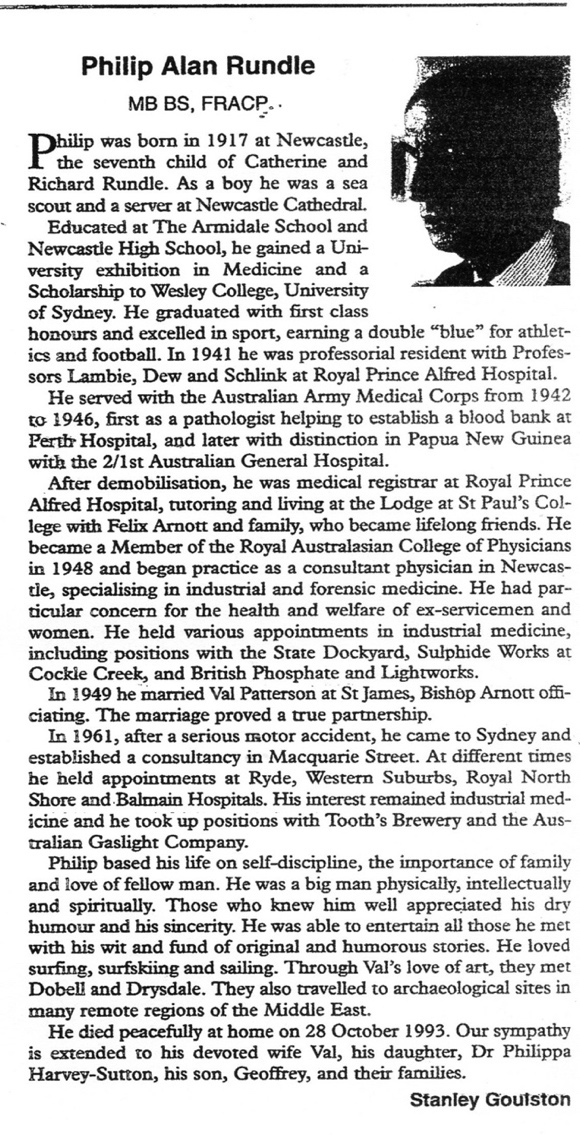
The Medical Journal of Australia, Vol 161, 17 October 1994
When Philip Rundle’s will was probated, Geoff was curious, as nothing had ever been said about it. Geoff had expected to help his mother with the legal tidying up of his father’s will, but was fobbed off and Philippa’s husband Alistair, a solicitor was asked instead to help. Geoff felt excluded by his mother, sister and her husband and as time went on he sensed secrecy and a power play going on behind his back.
I encouraged Geoff to purchase a copy of his father’s will, as after probate, it was now a public document. I will never forget Geoff’s face when he arrived home with the will document and said to me in a state of terrible shock, “I don’t think that I am my father’s child.”
The next few pages illustrate Philip Alan Rundle’s last will and testament 31 March 1981
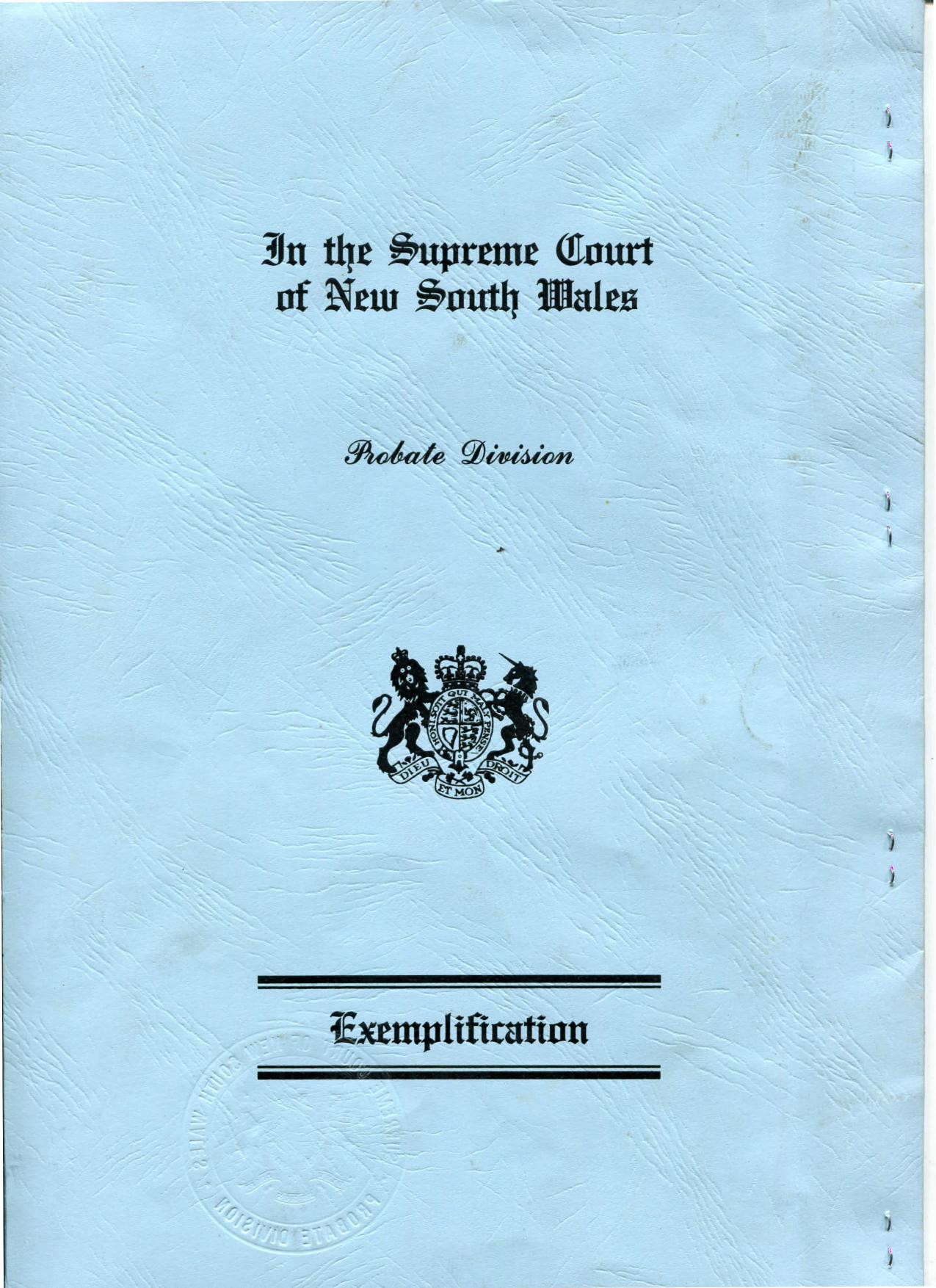
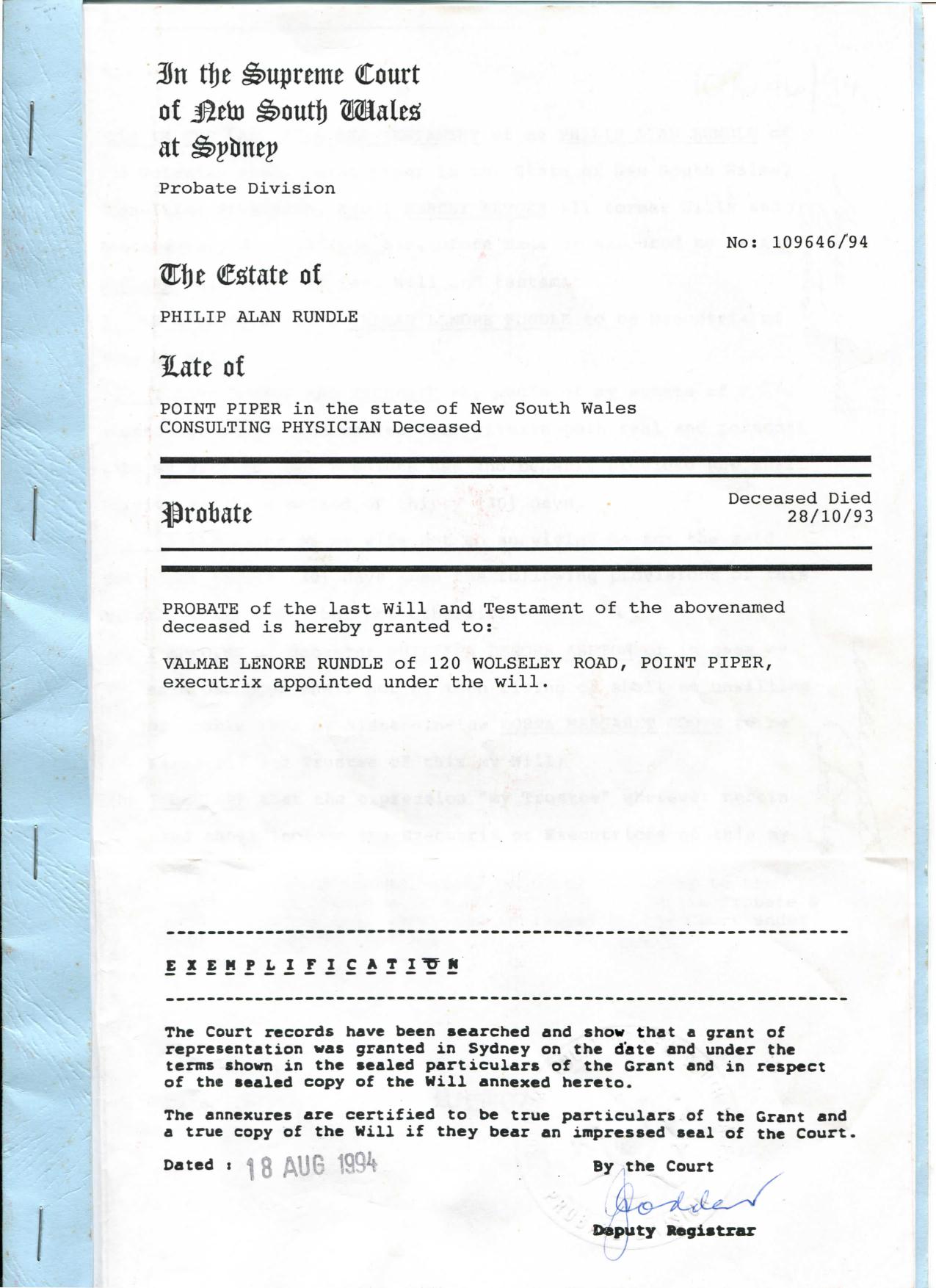
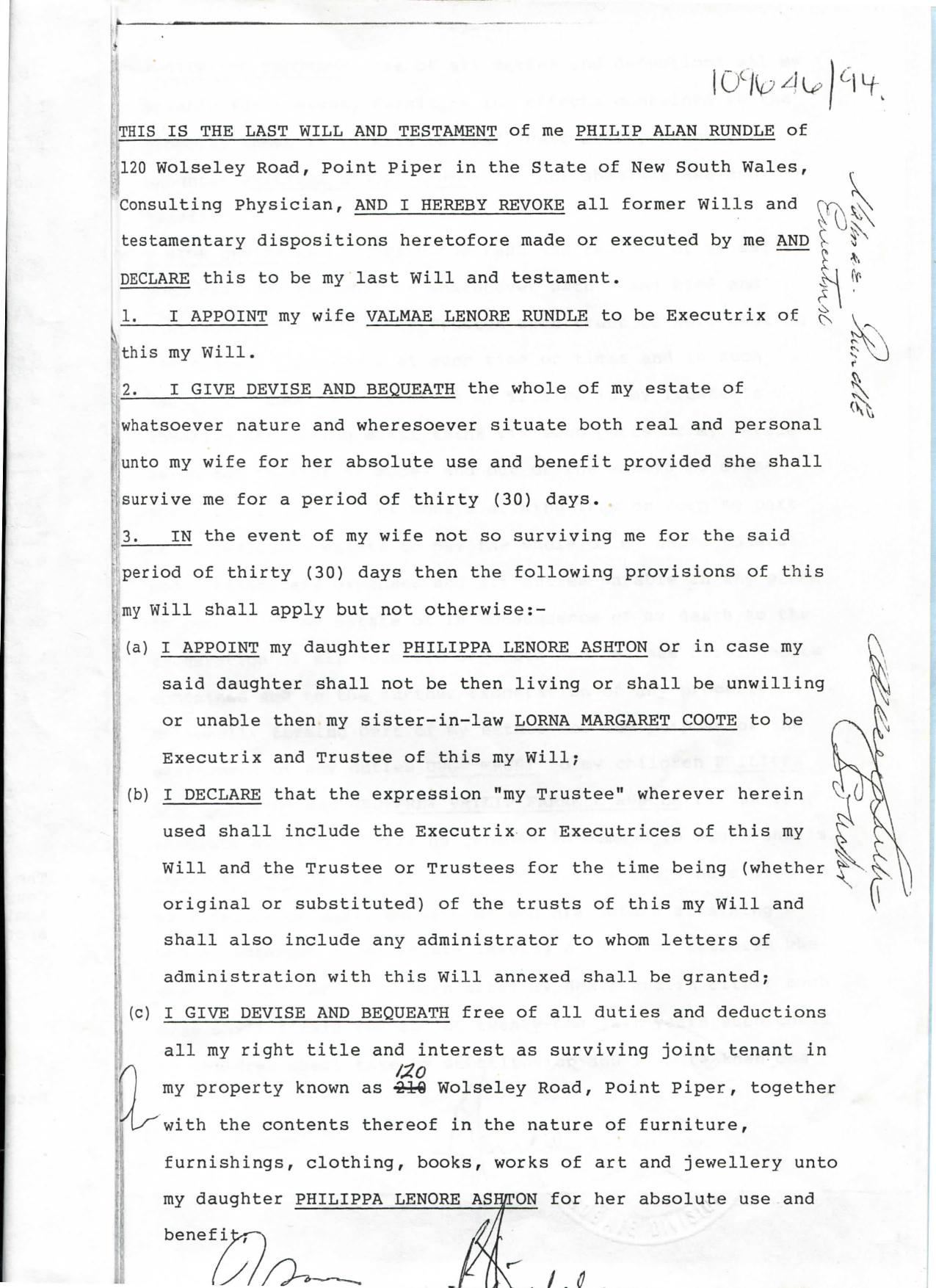
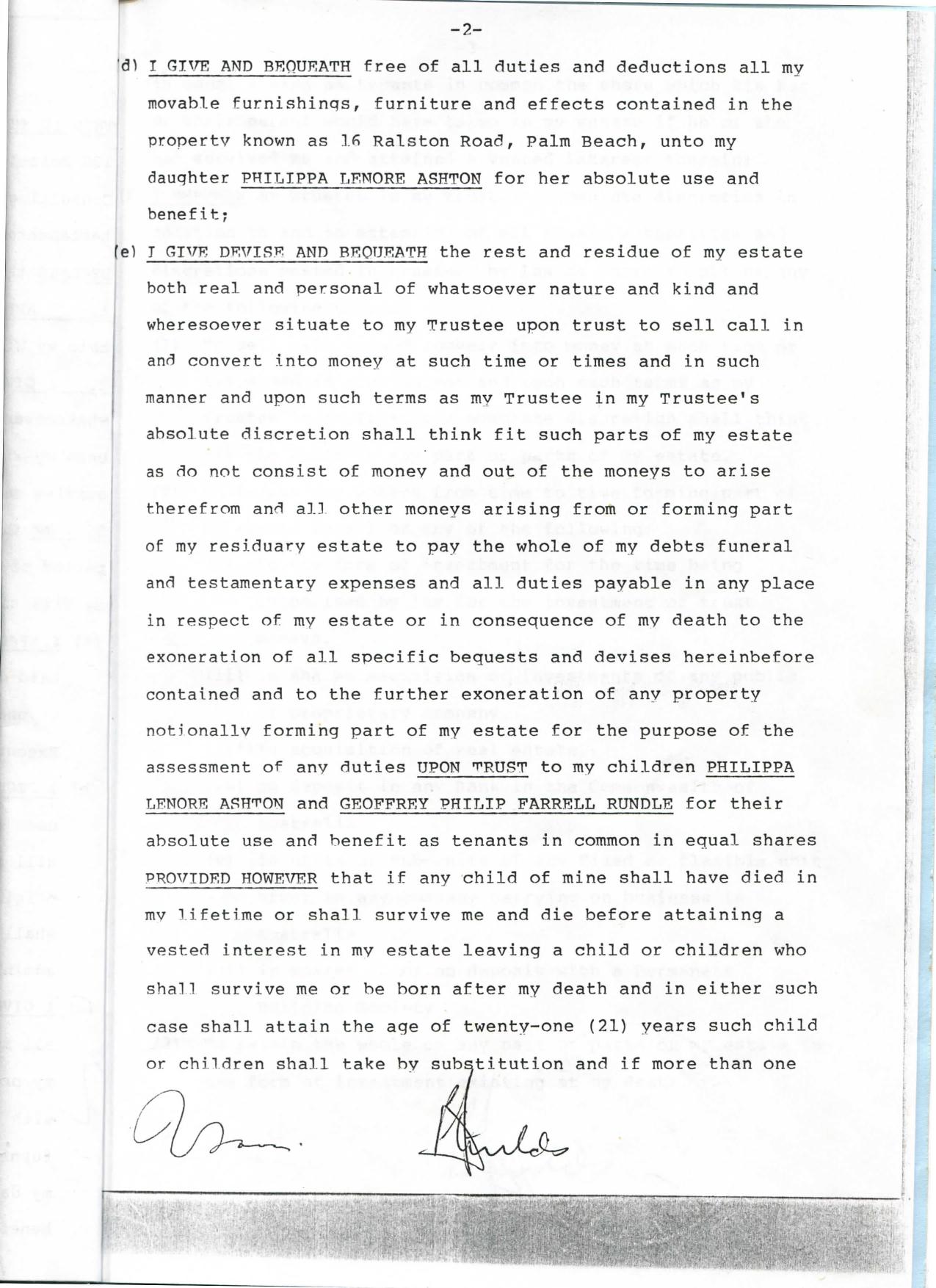
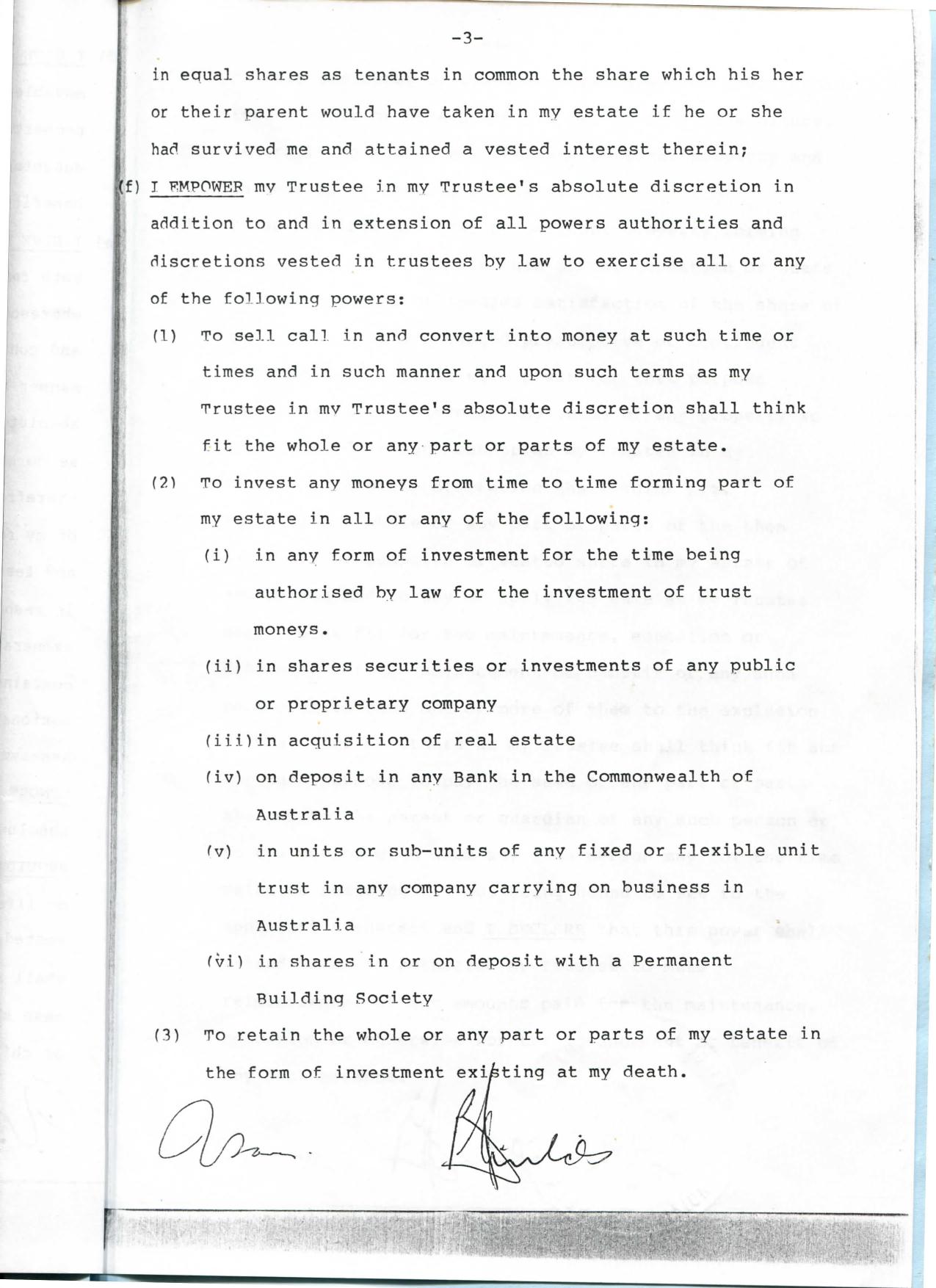
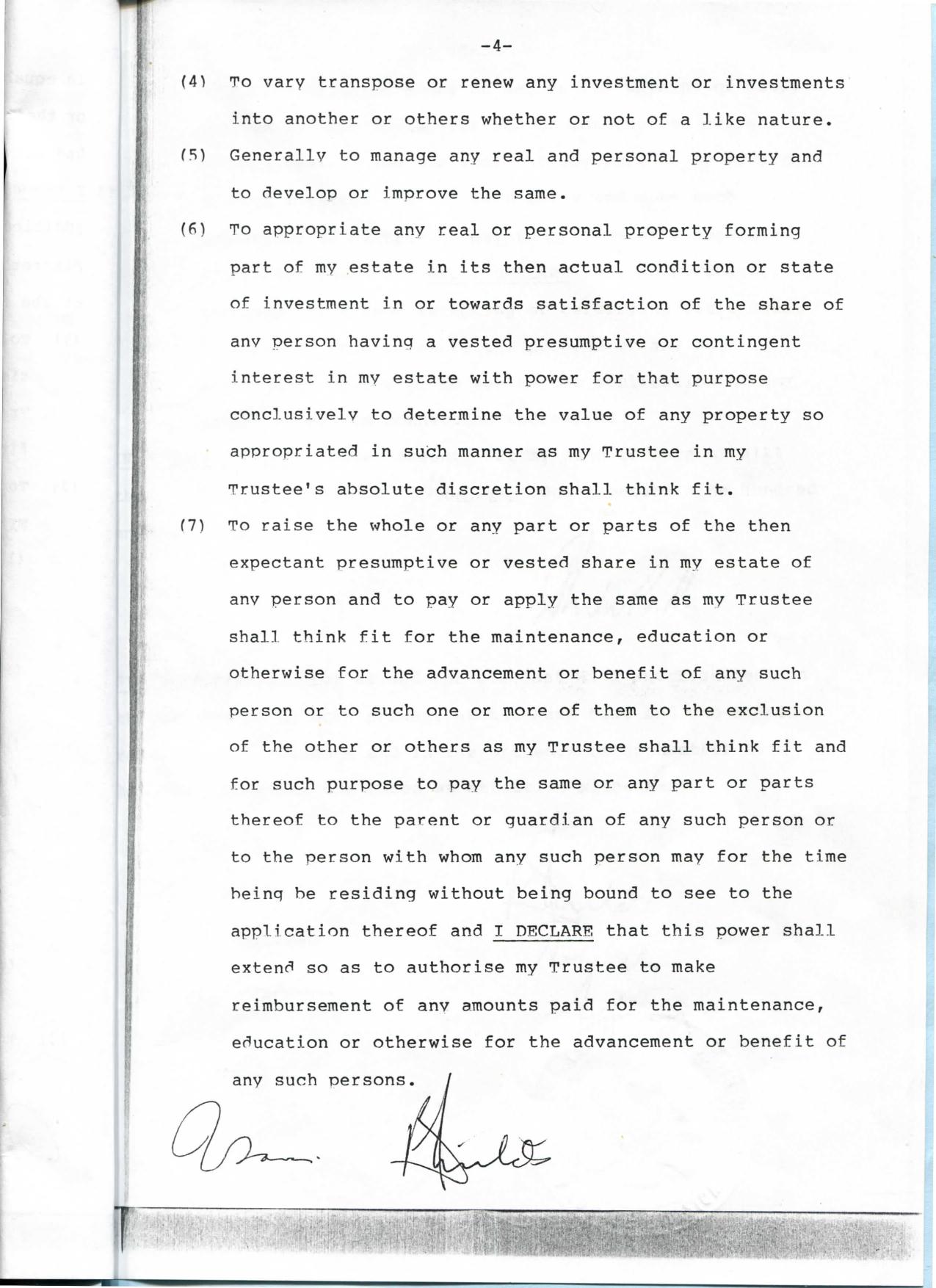
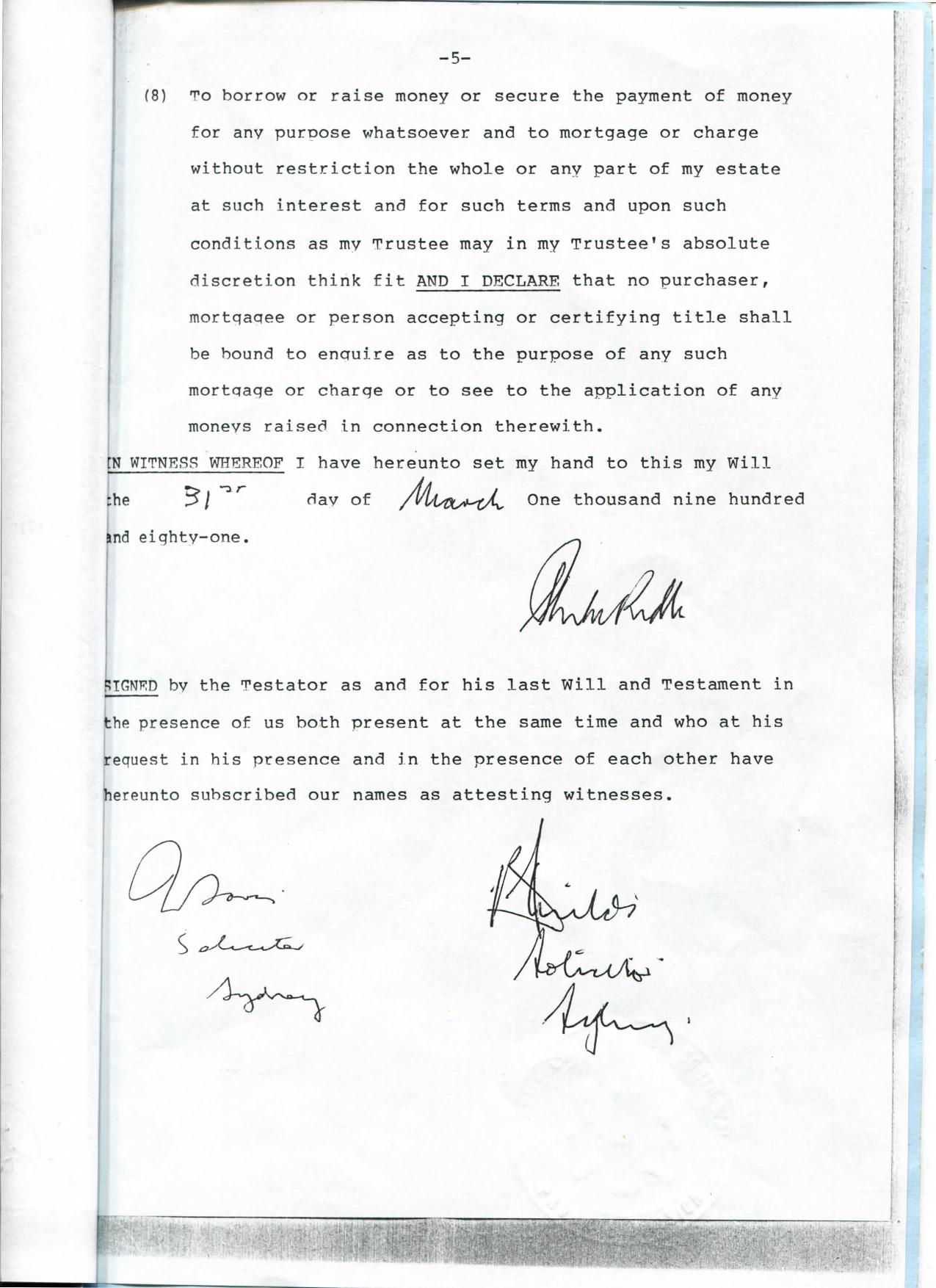
Probated Will of Philip Alan Rundle, 18 August 1994
Philip Alan Rundle’s will was written and dated 31 March 1981, at a time when his daughter Philippa was going through her divorce from Tim Ashton and with the knowledge that she had two children to support. It was also written before his son Geoffrey Rundle had any children of his own. Was this his father’s last will? Geoff had always expected that his mother would be the beneficiary of his father’s will. It was what Philip Rundle would have done with his property, if his wife had predeceased him, that was problematic to Geoff. Whilst it would appear that Geoff in such circumstances would have received half the residue of his father’s estate, Philip had already given his two estates and their contents to his daughter by gifts in 3(c) and 3(d) in the will; the residue in that case would have been minimal. Geoff, from a young age believed that after his parent’s death their estate would be divided equally between himself and his sister.
It was obviously not in Philip Rundle’s nature to share and Philip was not one to learn life’s lessons, as he seems to have taken nothing from the breakdown of the relationships within his own Newcastle family, replicating his mother Catherine Rundle’s unfair will to exclude his only son Geoff, without any explanation.
On so many occasions Geoff went over this problem with me, hurt by the fact that he had been unvalued, unappreciated and disrespected by his father; unrecognised as his only son. It shocked him that his aunt Lorna Coote had been made an executor, in certain circumstances and he was overlooked; this action by his father was inexplicable, especially in light of Geoff’s legal qualifications. He would often say to me, “If my father had wanted to exclude me from his will, why didn’t he just leave my half share to my sons?” He also said that he couldn’t understand how his sister could accept the will and how she seemed content to see him disinherited; he simply couldn’t have done that to his sister.
When Geoff challenged his mother for answers, he was accused of being avaricious; when all he wanted was an explanation as to why he and his sister were not treated equally by his father. Later, at a family lunch at our home in Double Bay, in front of my own mother, Val unaccountably told Geoff he had been left out of his father’s will because he had been a bad son. I can’t explain the mind of this woman, because this was just so untrue; it was plainly a lie and my mother was shocked to the core.
Unexplained by Val and unsupported by his sister, Philippa, who smiled insincerely, then blinked at us said in her breathy, child-like voice, “My father can leave his money to whomever he wants.” This will left a toxic legacy that would forever damage the family; Philip’s memory was vanquished and he was rarely mentioned in his son’s family again.
Geoff later wrote to his mother, in a quest for an answer and she never responded. In support, I also wrote to Geoff’s mother, sister and her husband and I received no reply; they had thrown up a wall of silence. It was made out that Geoff had somehow been at fault, when he was actually the victim in this treacherous family conspiracy.
Some of you may not understand the up and down relationship Geoff and I had with his parents and I appreciate that there may be some with reservations about my writing about them in this chapter. Most people will never have to deal with a narcissistic type of personality within a family. For those exposed to it, they will understand the damage it does to the family unit. When you compound narcissism with other personality disorders, as was apparent in my husband’s family, relationships become untenable, with the realisation finally, that as hard as you try, you will ultimately fail.
This chapter is an important social record for our family and for Geoff’s and our friends to understand how hard we tried and how we failed. For me personally, writing this chapter has been a cathartic liberation of my mind.
When I write up Geoff’s mother’s family chapter The Patterson Family of Bathurst, New South Wales Chapter One, I will attach Valmae Lenore Rundle’s will and other land, deed and gift documents. As a postscript I will explain the further breakdown that was created by Geoff’s mother, Val and sister, Philippa, after Philip Rundle’s death, when they underhandedly banded together in their final treachery to disinherit him.
It is incredible that two generations, on two direct family lines, perpetuated family disorder from unfair wills. As Geoff explained to me, “I just can’t fight both my mother and my sister.” Without any forthcoming explanation from his mother and with no support from his sister during this very hurtful ordeal, Geoff and I took the decision to distance ourselves from them, for the survival of our marriage and the well-being of our children.
I am comforted by the fact that while my words cannot totally explain the actions of these people, I know that legal documents will always shine a beacon on the truth.
Despite all these problems, Geoff and I always tried to keep in touch with Philippa’s children, Josie Ashton and Michael Ashton, so that they could develop a family relationship with our sons. Contact ceased in 2015 after they both sent distressing mobile phone messages after Geoff had a short reconciliation with his mother – initiated by his mother eighteen months before her death in 2016. They questioned Geoff’s motives, claiming he had no right to any inheritance nor should he have any expectations to be included, stating their mother deserved it all. I rather think, the motive was that they wanted it all.
For those interested in tracing the original documentation, a Joint Tenancy Agreement, whereby a payment of $1 was paid by Philippa Lenore Harvey Sutton for the property Rockleigh in Point Piper, a Deed of Gift for paintings and the Will of Valmae Lenore Rundle are to be found at the end of my family history chapter The Patterson family of Bathurst, Chapter One.

Sydney Morning Herald, 25 May 2024 SALE OF ROCKLEIGH FOR $80 MILLION
POINT PIPER MANSION RANKS IN TOP 5 SALES
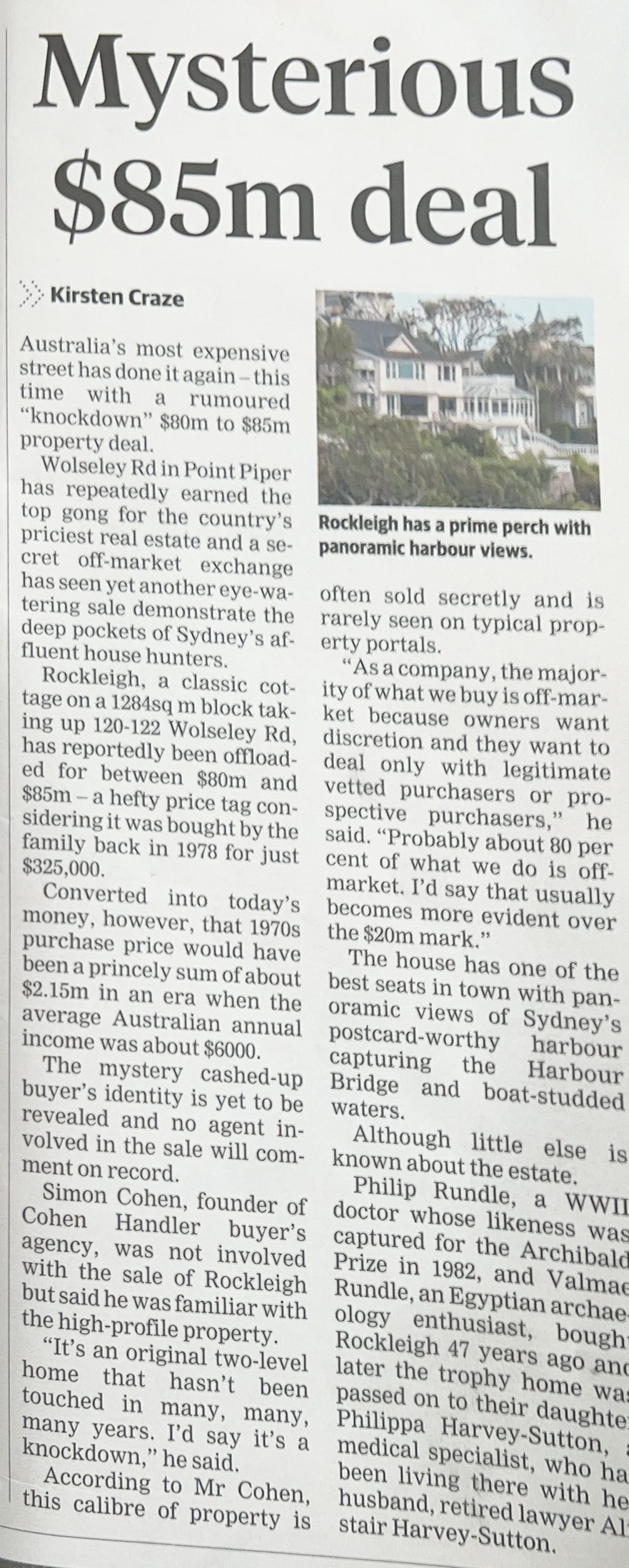
Wentworth Courier, 5 June 2024
MYSTERIOUS $85 MILLION DEAL
ROCKLEIGH – ROCKLEIGH- ROCKLEIGH
“Mysterious Deal” this true story about how a sister manipulated the possession of the Rundle family home at 120 WOLSELEY ROAD IN POINT PIPER, cutting her brother out of his inheritance, makes a more interesting story!
Kirsten Craze has researched her article well but has failed to acknowledge her sources, one of which was my family history chapter, The Rundle Family of Newcastle. Nowhere else could she have discovered the information that “Philip Rundle a WWII doctor whose likeness was captured for the Archibald Prize in 1982.”
Very soon I will complete the third chapter of this trilogy, The Lindsay Family of Montrose, Scotland. I have recently written the first chapter, The Rundle Family of Kelly, Devon which tells of Thomas Alan Rundle’s arrival in Sydney, an English tailor, smitten with gold fever. This chapter then takes the Rundle family back to England, finding several more generations of the Rundle family living in the tiny and very pretty rural village of Kelly in Devon.
In time, I will also write up an account about my husband Geoff Rundle’s time as a Councillor and Mayor of Woollahra and how together with friends and likeminded residents, we helped to found a political party, Residents First Woollahra in 2003, which has now become the most successful New South Wales Local Government party, not run by a major political party. Residents First Woollahra gained one third of the votes cast in September 2017, repeated again in 2021 in the Woollahra Municipality, to achieve five elected Councillors.
“Truth will out; if you live your life honestly and can be proud of what you have done and achieved, you will have few regrets.” Geoff Rundle
Virginia Rundle,
19 December 2018
Updated June 2024
Postscript
My grateful thanks go to Geoff Rundle, Patrick Rundle and Peter Rundle for their conversations with me and their contributions to this chapter. Thanks also to my sons Jeremy Rundle and Rowan Rundle for their constant help with my technical and computer endeavours and for understanding my need to write up the family history my way. Thanks also to Rowan for his help in establishing my website, Relatives Matter. To Meredith Rundle, my enduring thanks for her encouragement to write and publish this chapter as a social history of our time.
Bibliography
Trove Digitised Newspapers
State Archives of New South Wales
Newcastle Regional Library, Photograph Collection
Divorce Papers for Philip Alan Rundle and Elisa Berta Alexandra Rundle nee Fiaschi (NSWSA)
Medical Journal of Australia
Registrar Generals Office of New South Wales
Beneath the Southern Cross, compiled and written by David Michael and Marie Ray, March 2006
Ancestry.com
Find My Past
Family Search.org
Diary of Reginald George Robson, 1979
The Australian Women’s Weekly
Australian Electoral Rolls, New South Wales
Australian War Memorial, Photograph Collection
Photograph and Research Collection of Peter Rundle, Newcastle
The History Of Matt blogspot, The Moloney Family
boatgenealogy.com.au for Rival
www.endocrinesureons.org.au/articles/july-2011-newsletter-rundle-and-his-curve
Jniken, University of New South Wales Newsletter
National Library of Australia, Photograph Collection
Fairfax Newspapers
The Rundle Foundation for Egyptian Archaeology, Newsletter No 87, January 2004
www.residentsfirst.org for the history of Residents First Woollahra
- Wentworth St was transferred to Philip and Val Rundle from their family company in 1978 for $200,000 and subsequently sold later that same year for $316,000. Earlier that year they purchased the Wolseley Rd property Rockleigh for $325,000 and in 2006 it had a value of $13,500,000. ↑

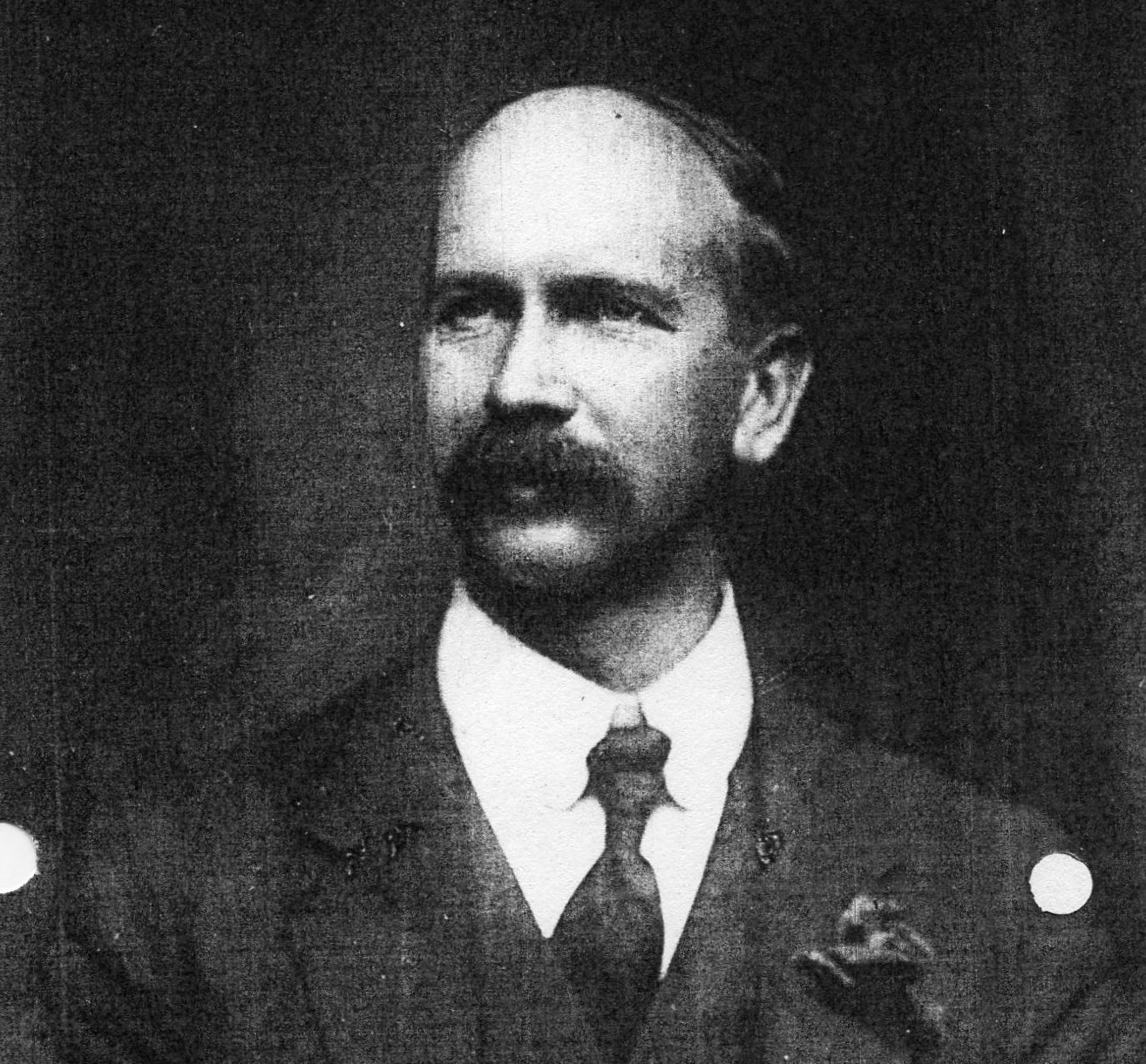
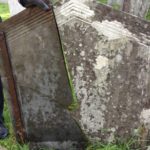
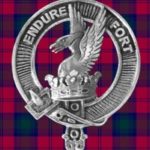
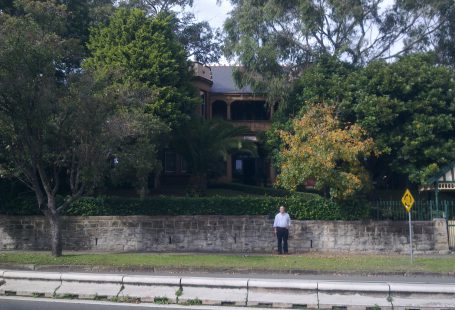
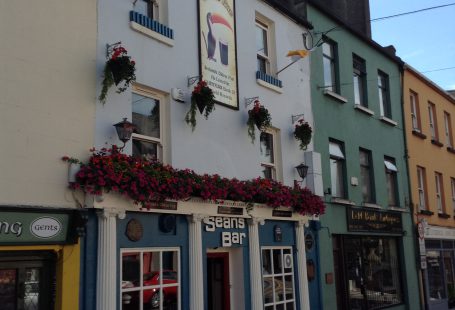
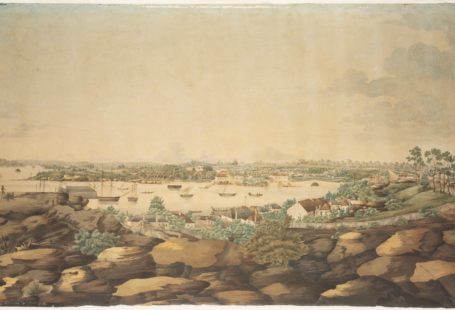
2 comments On The Rundle Family from Newcastle, New South Wales
This site has had 64 visits since24 December, 2019
Dear Virginia
We have come across this. Our reaction has been laughter and tears. Would you like to contact us?
Lynn and Tessa Milne